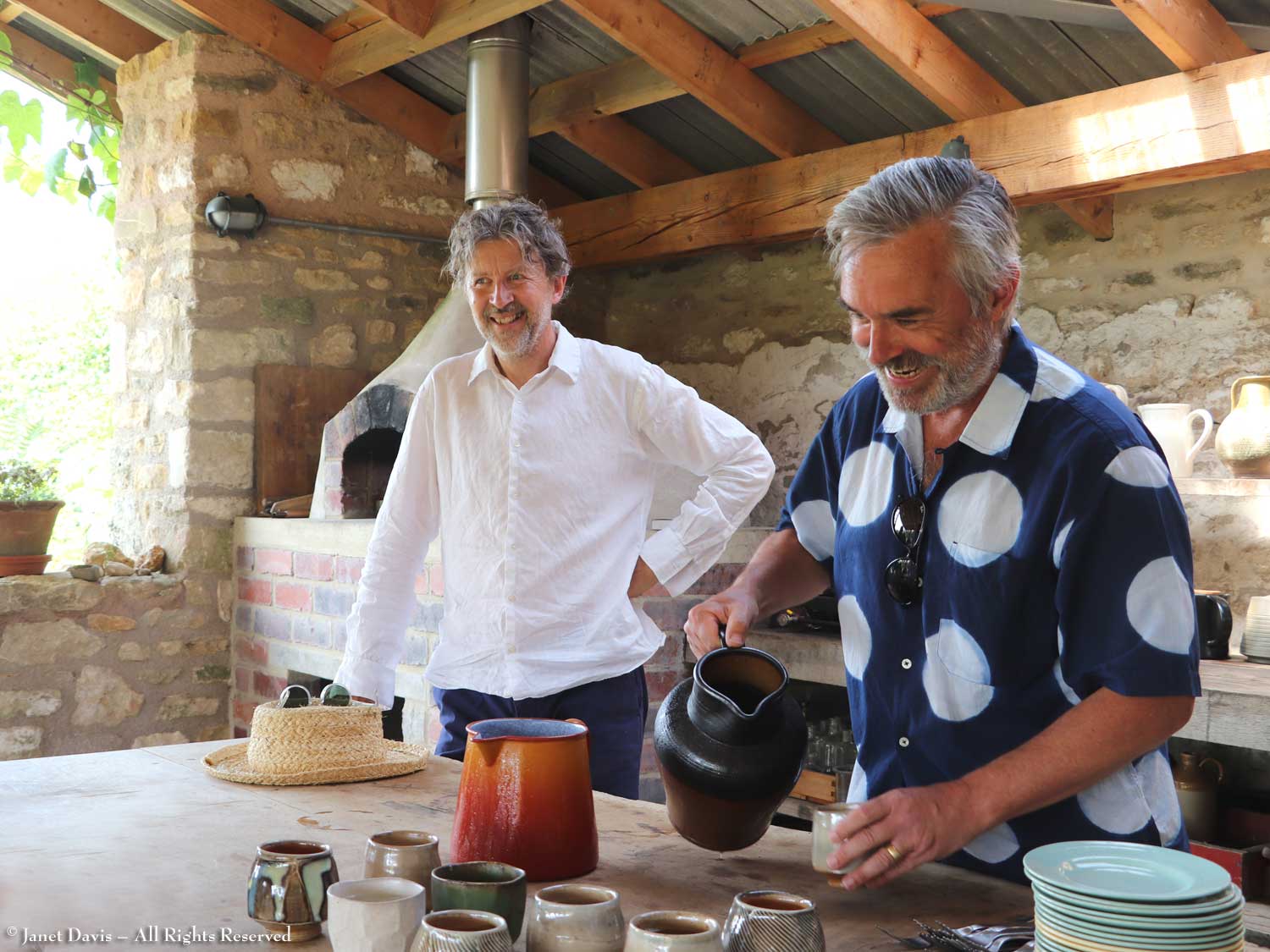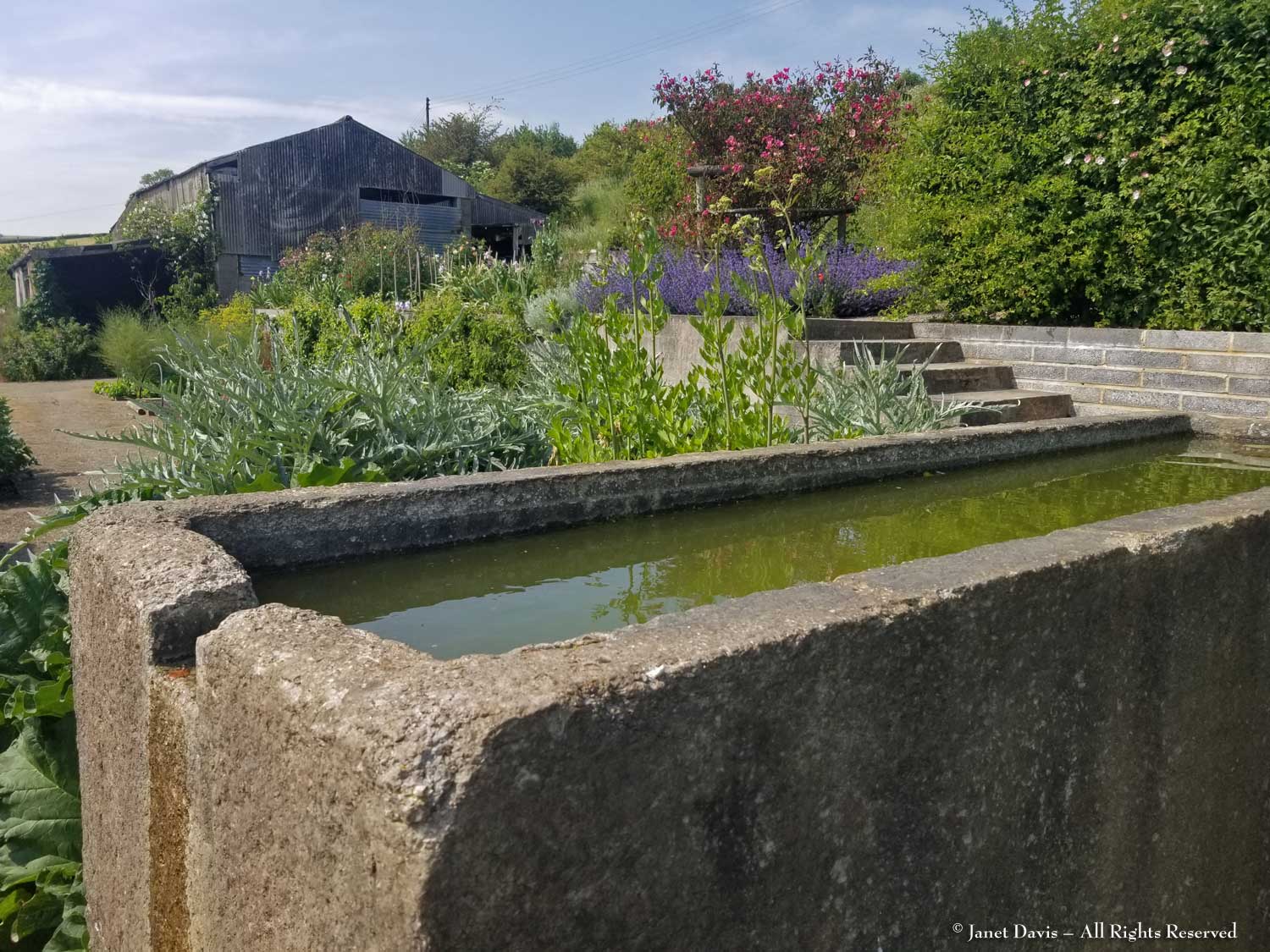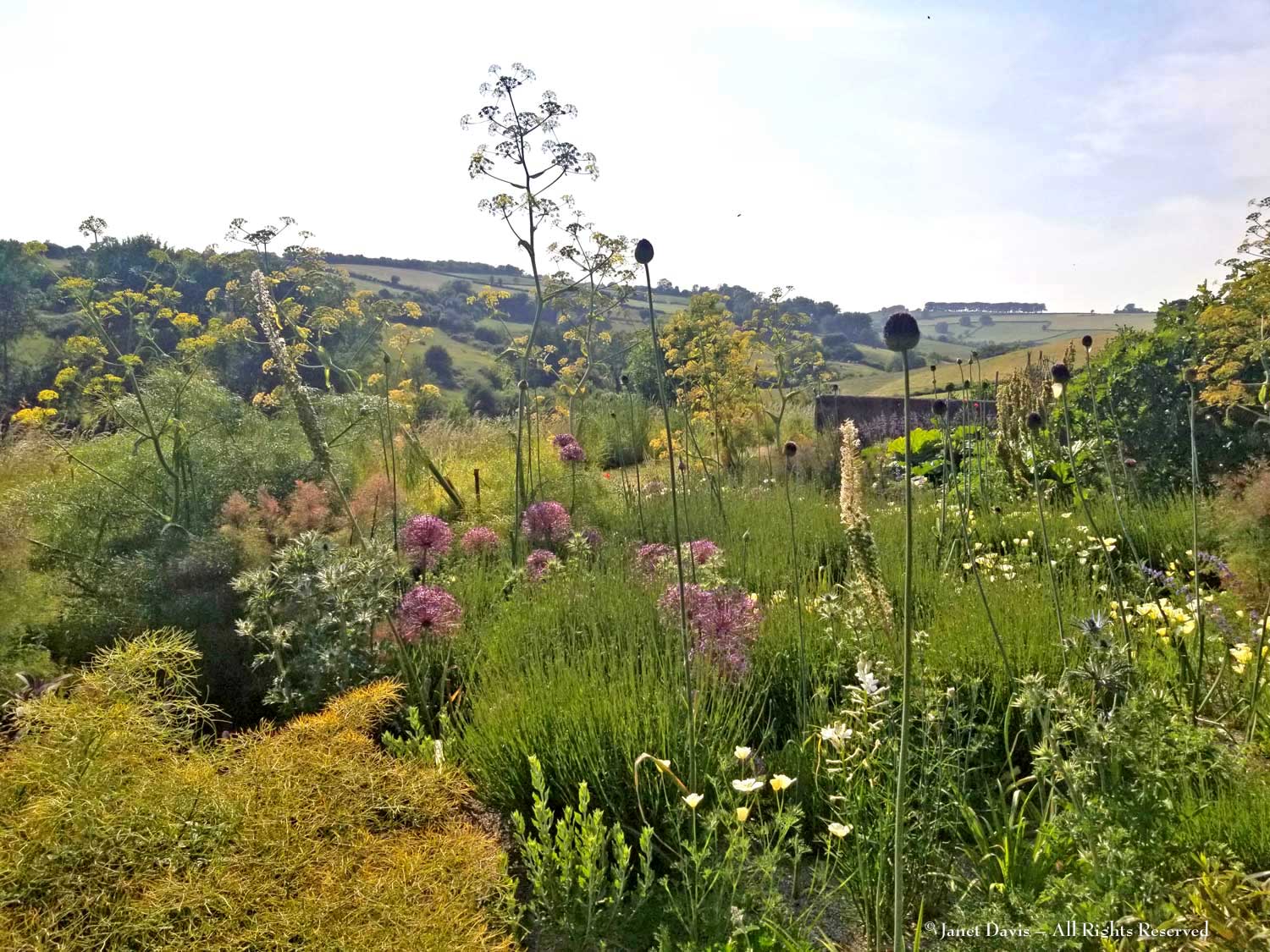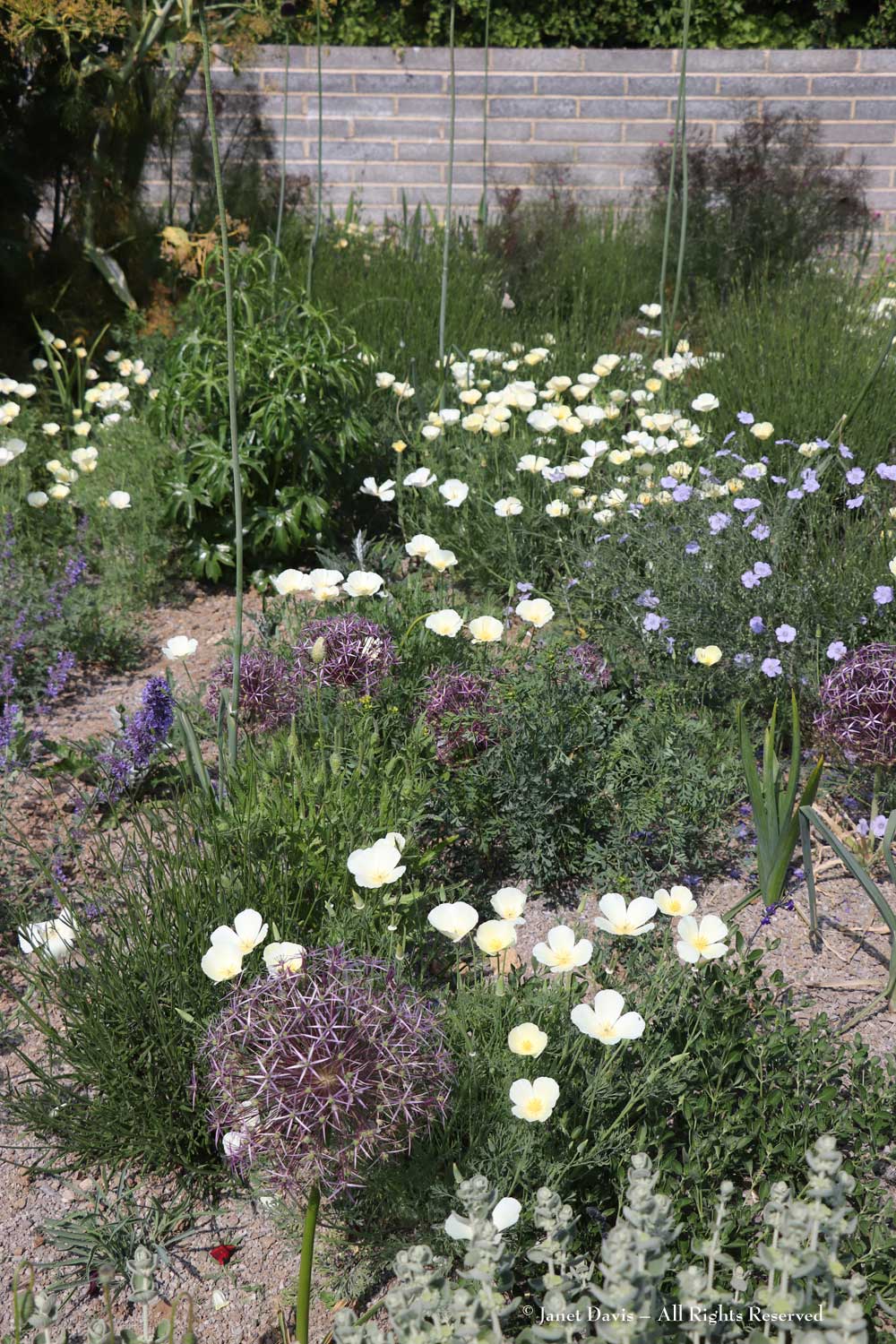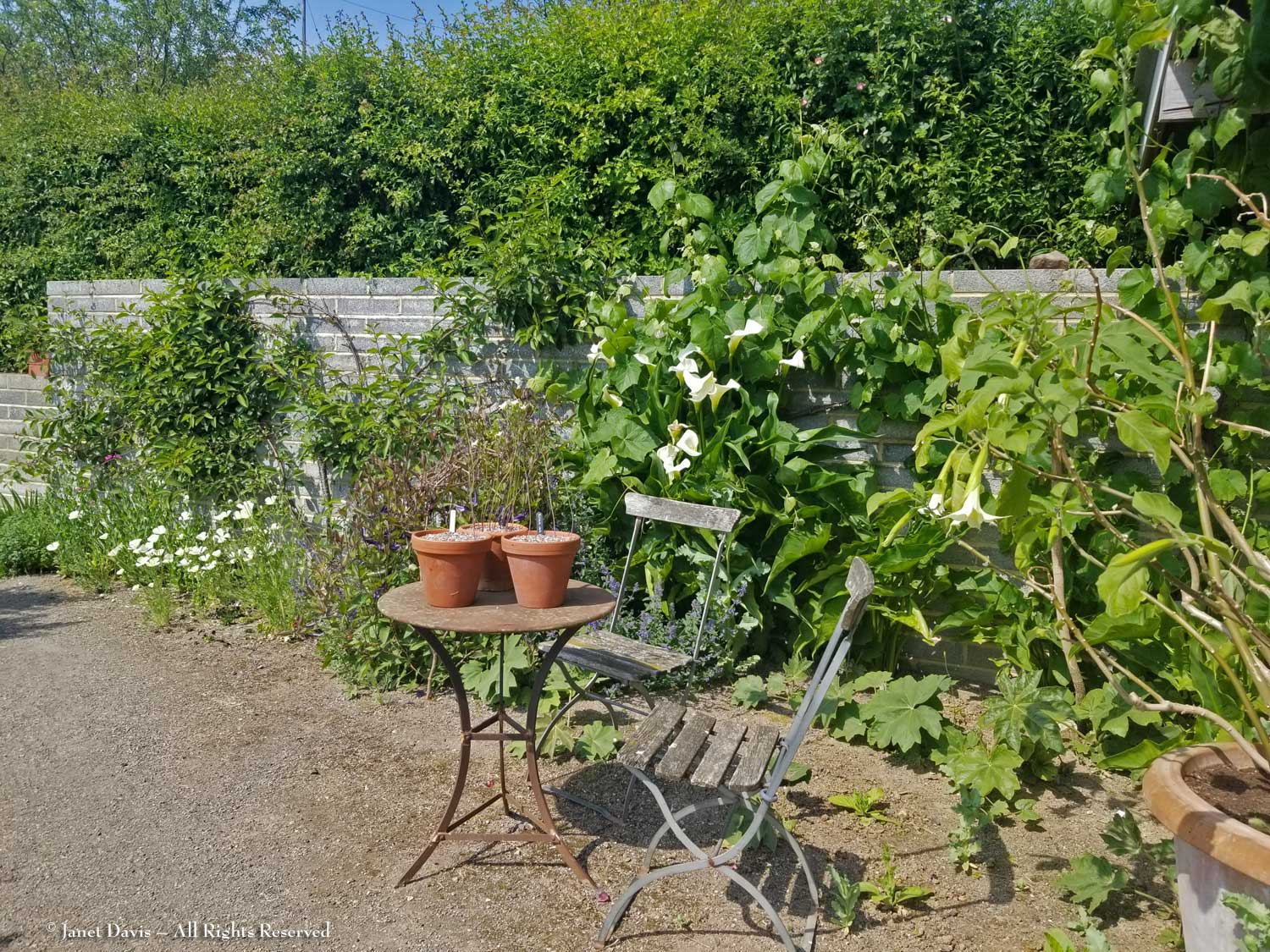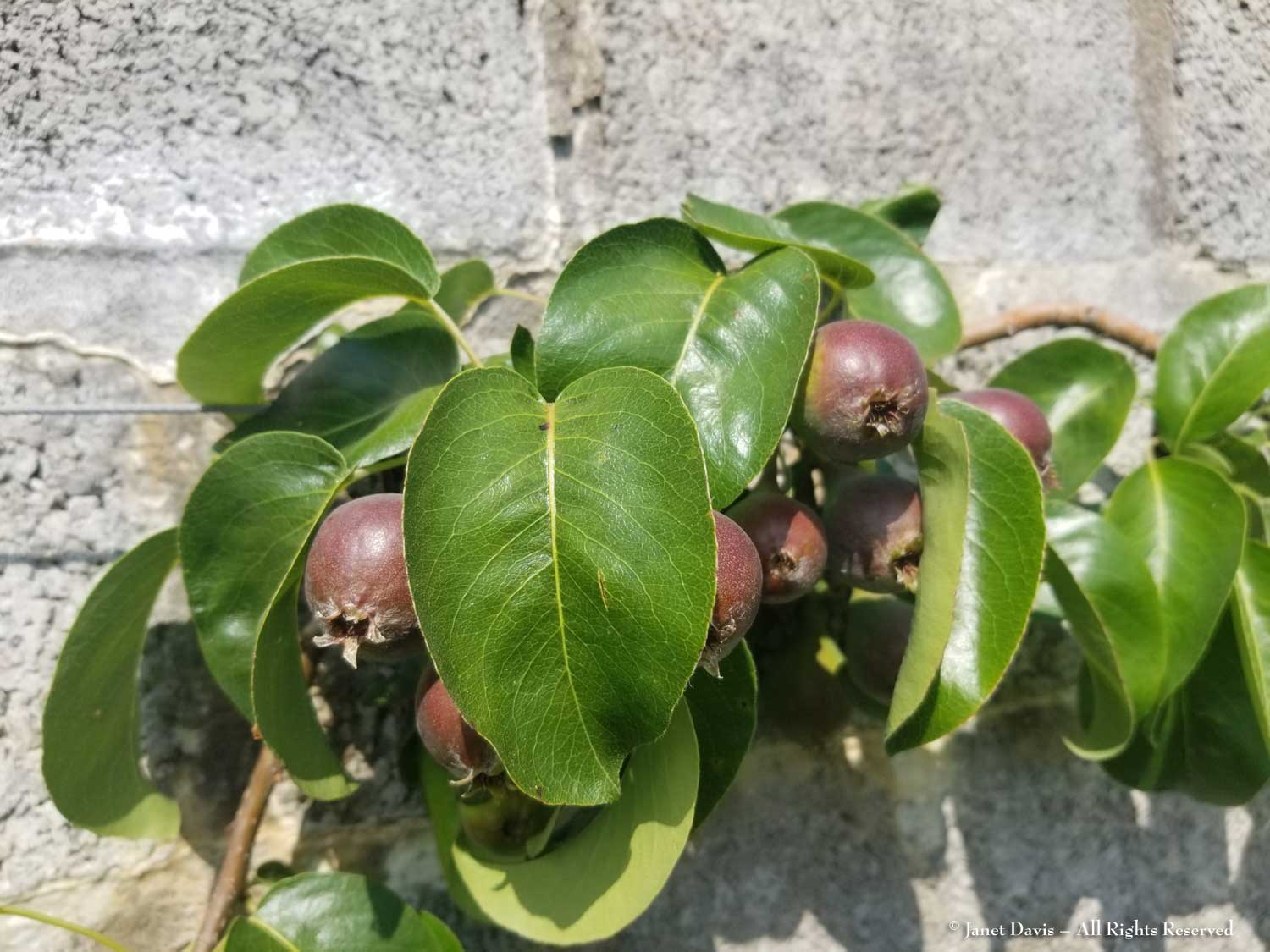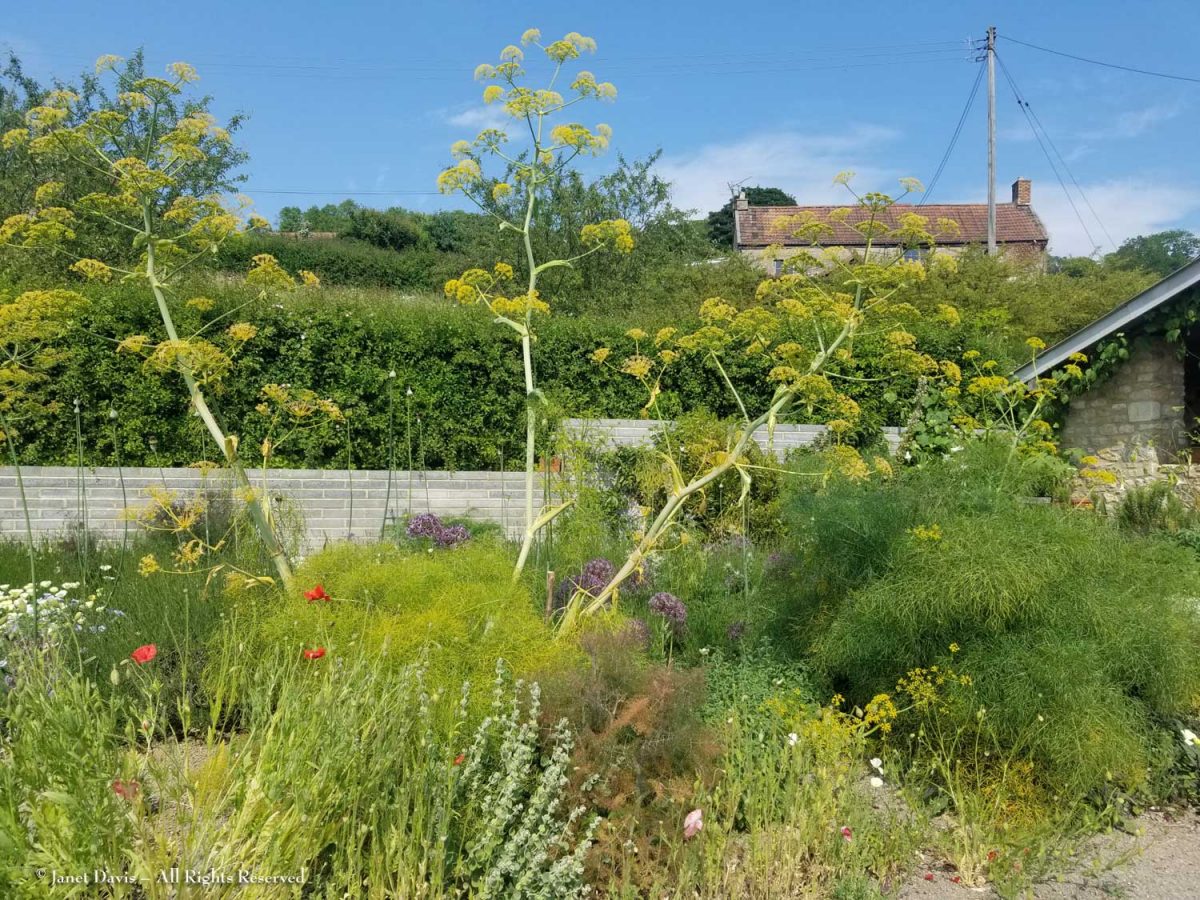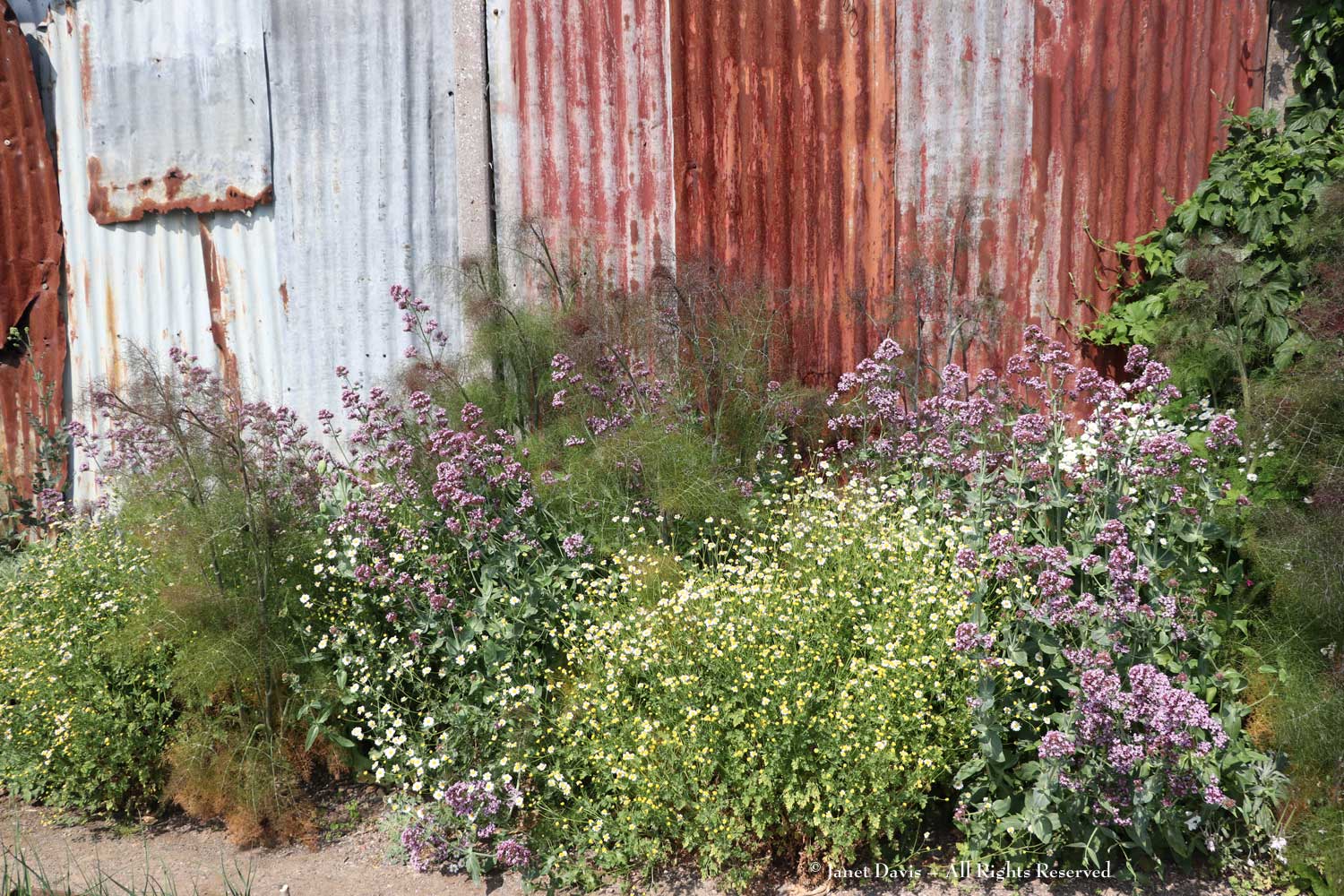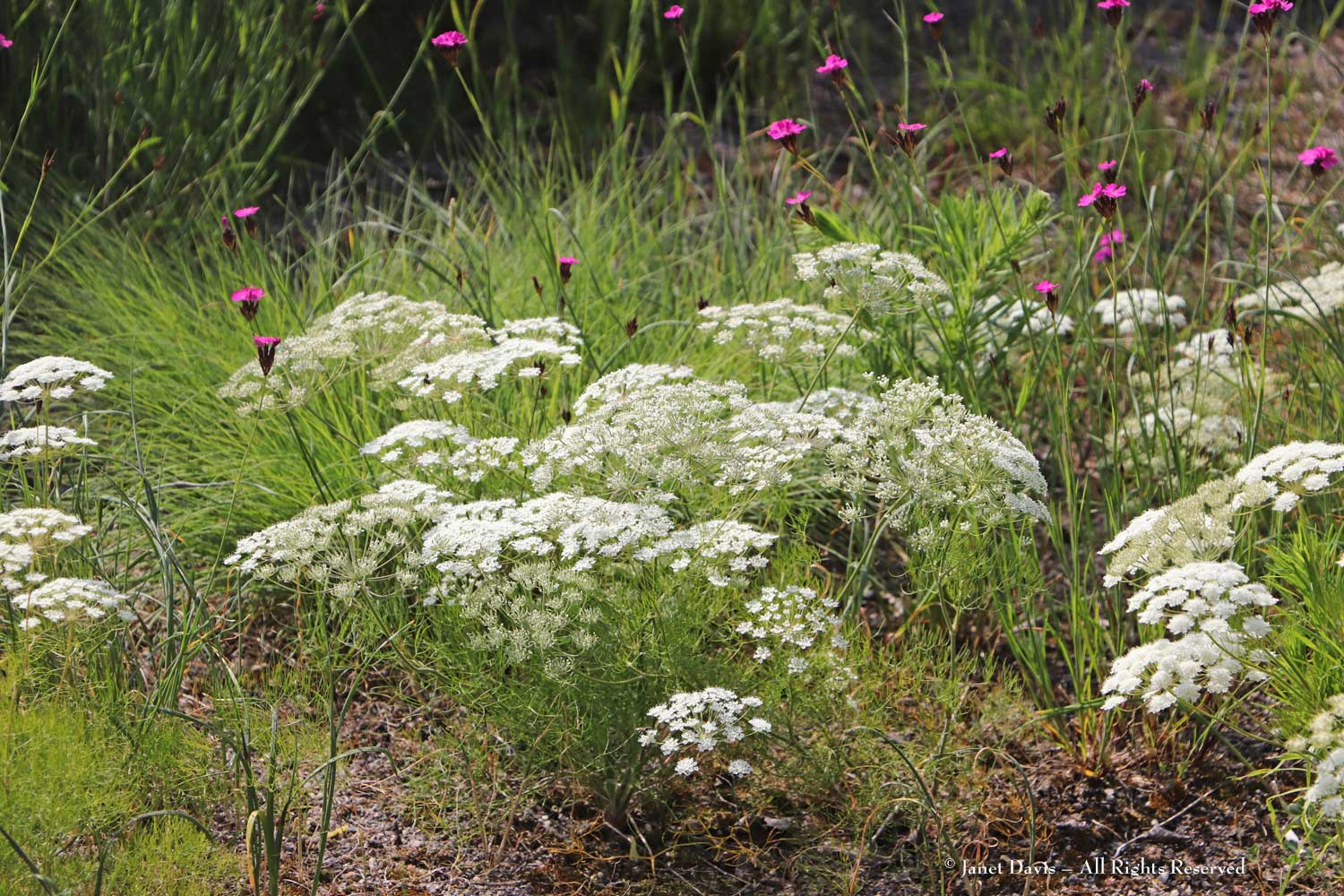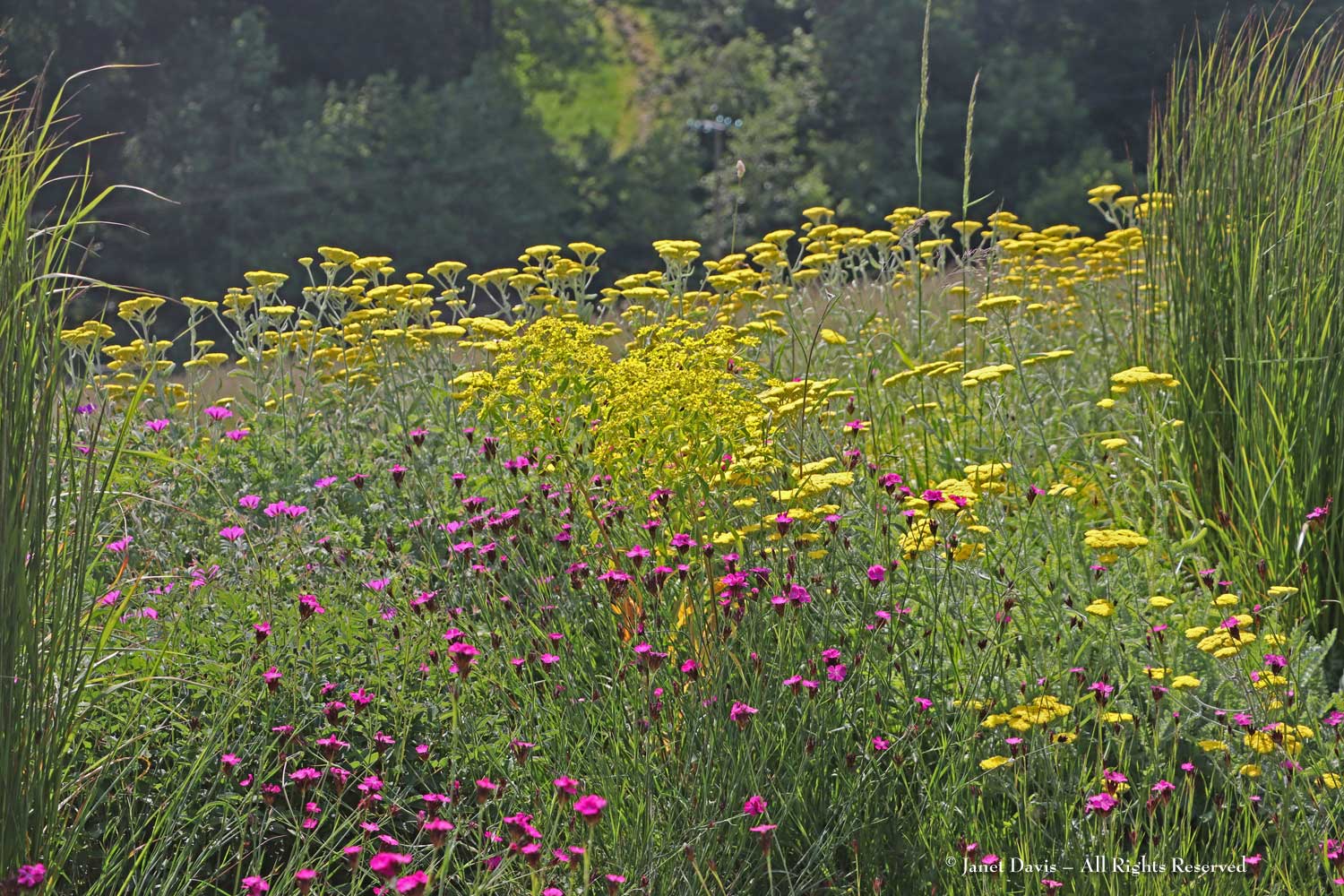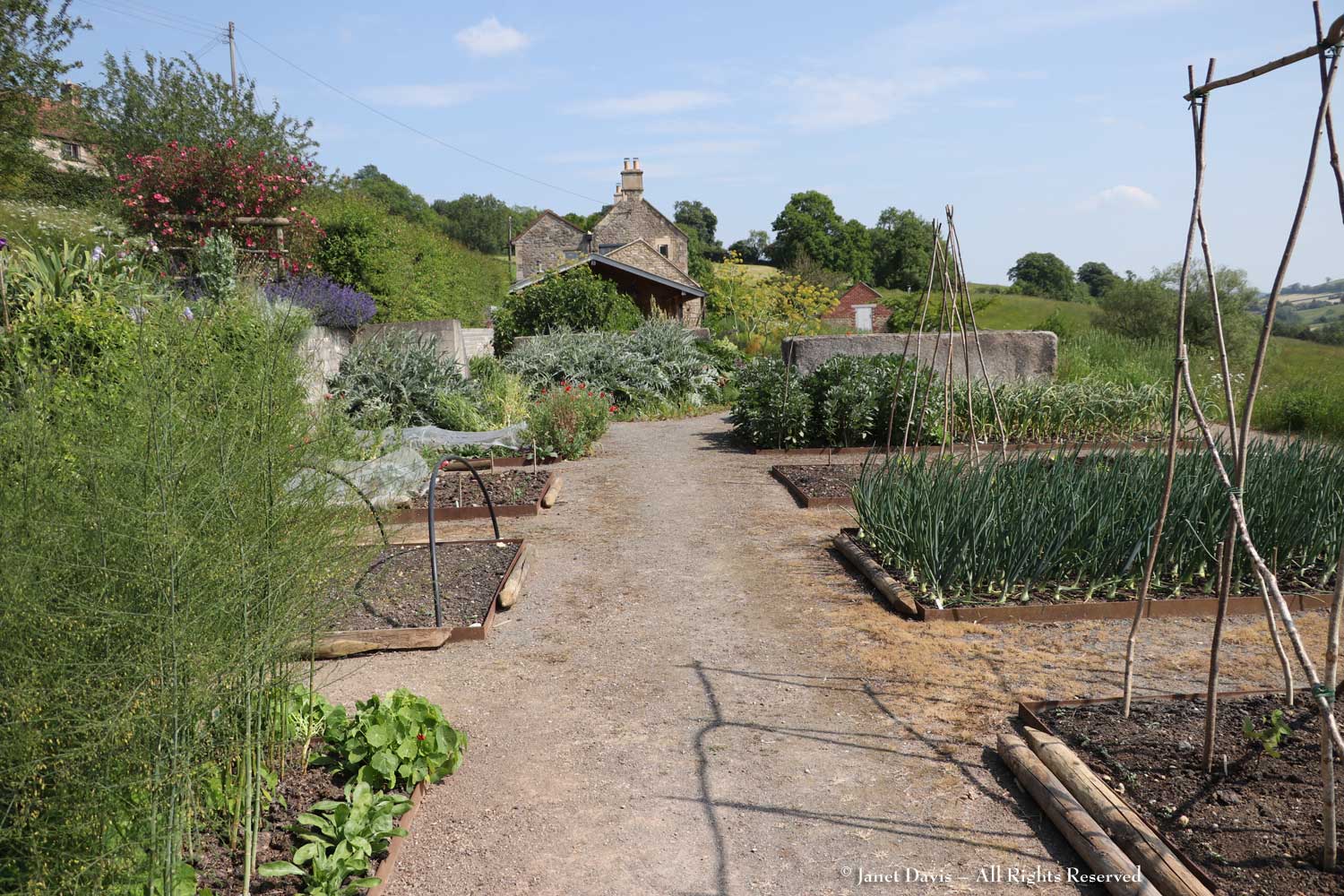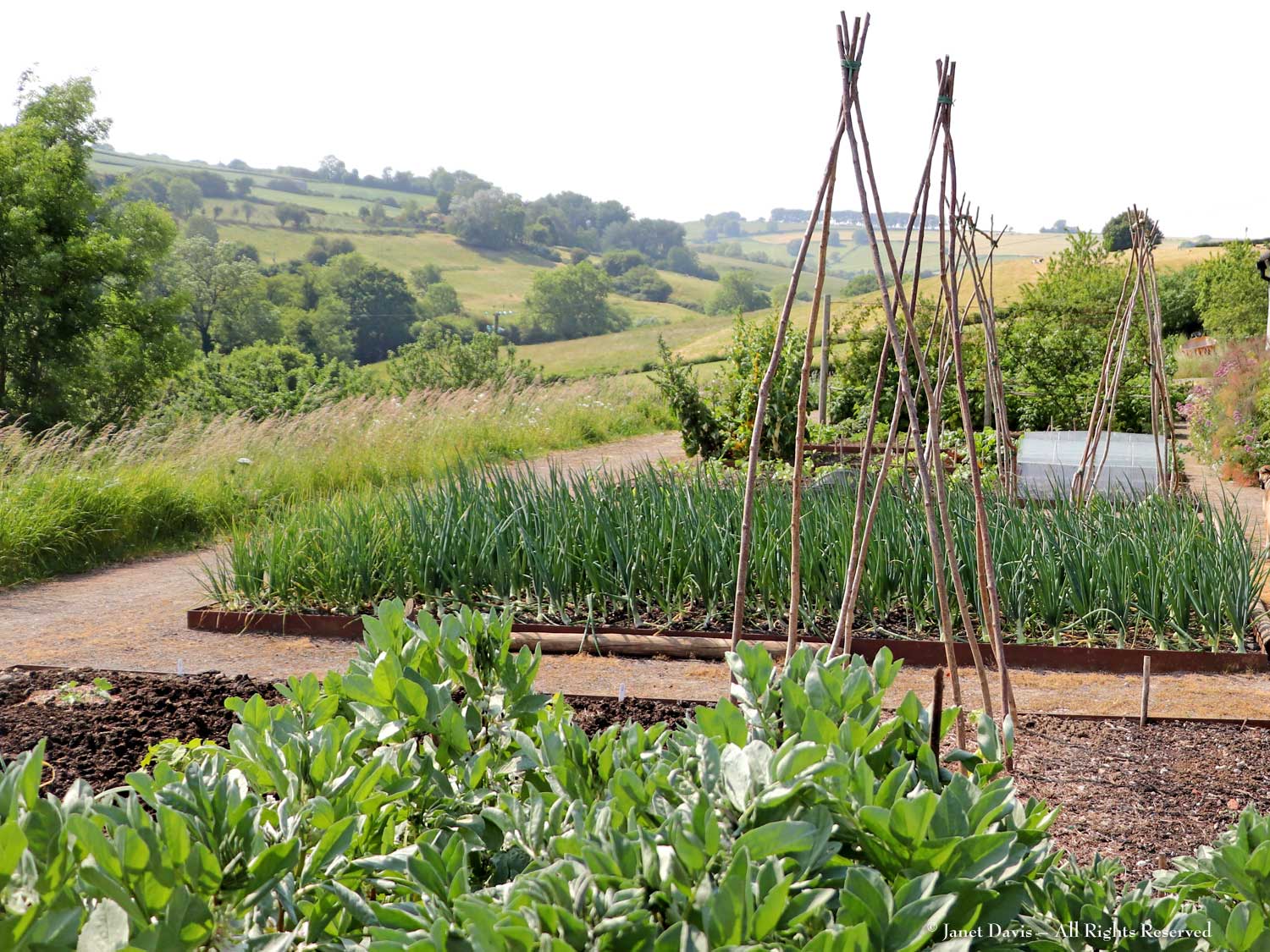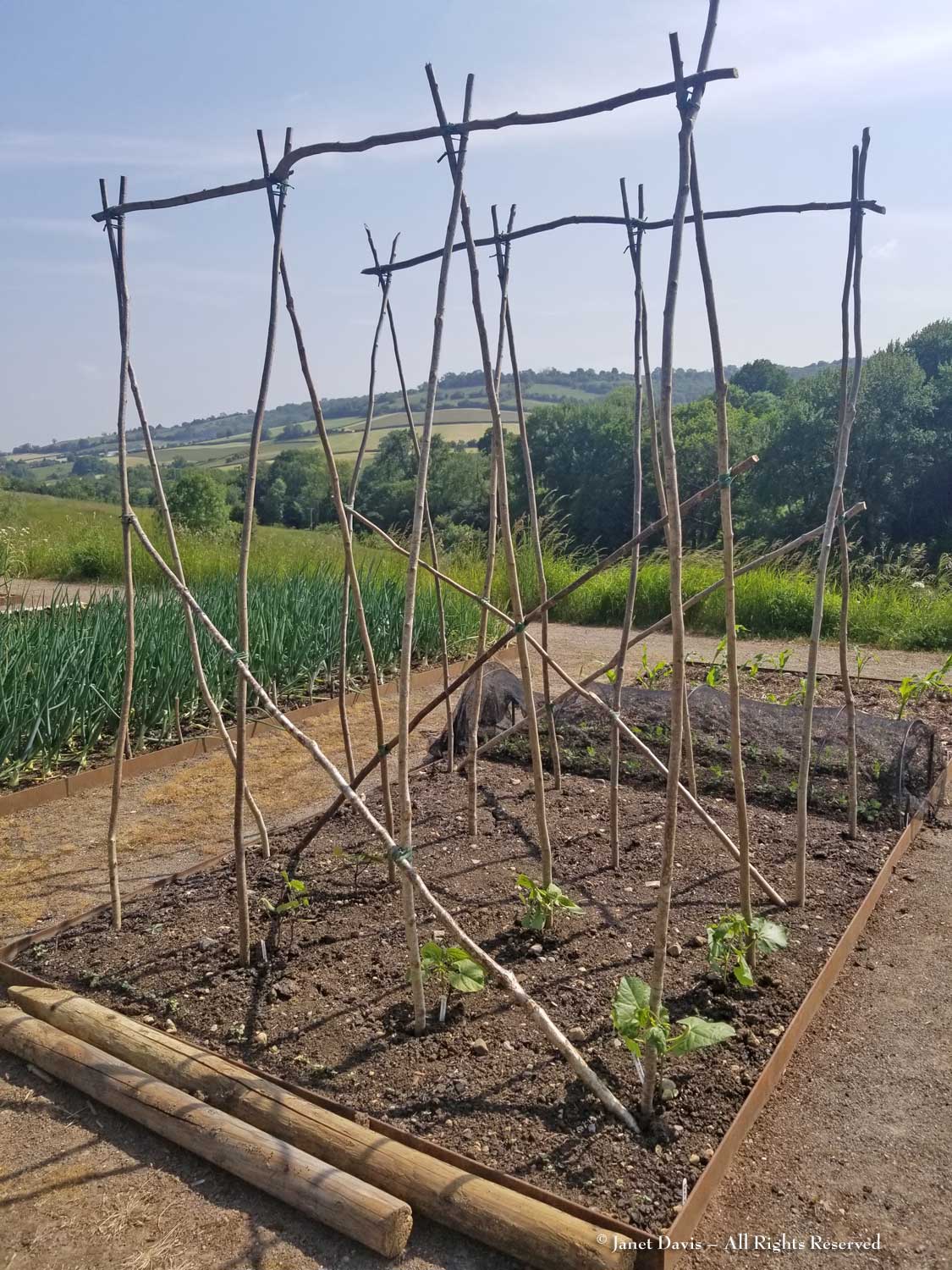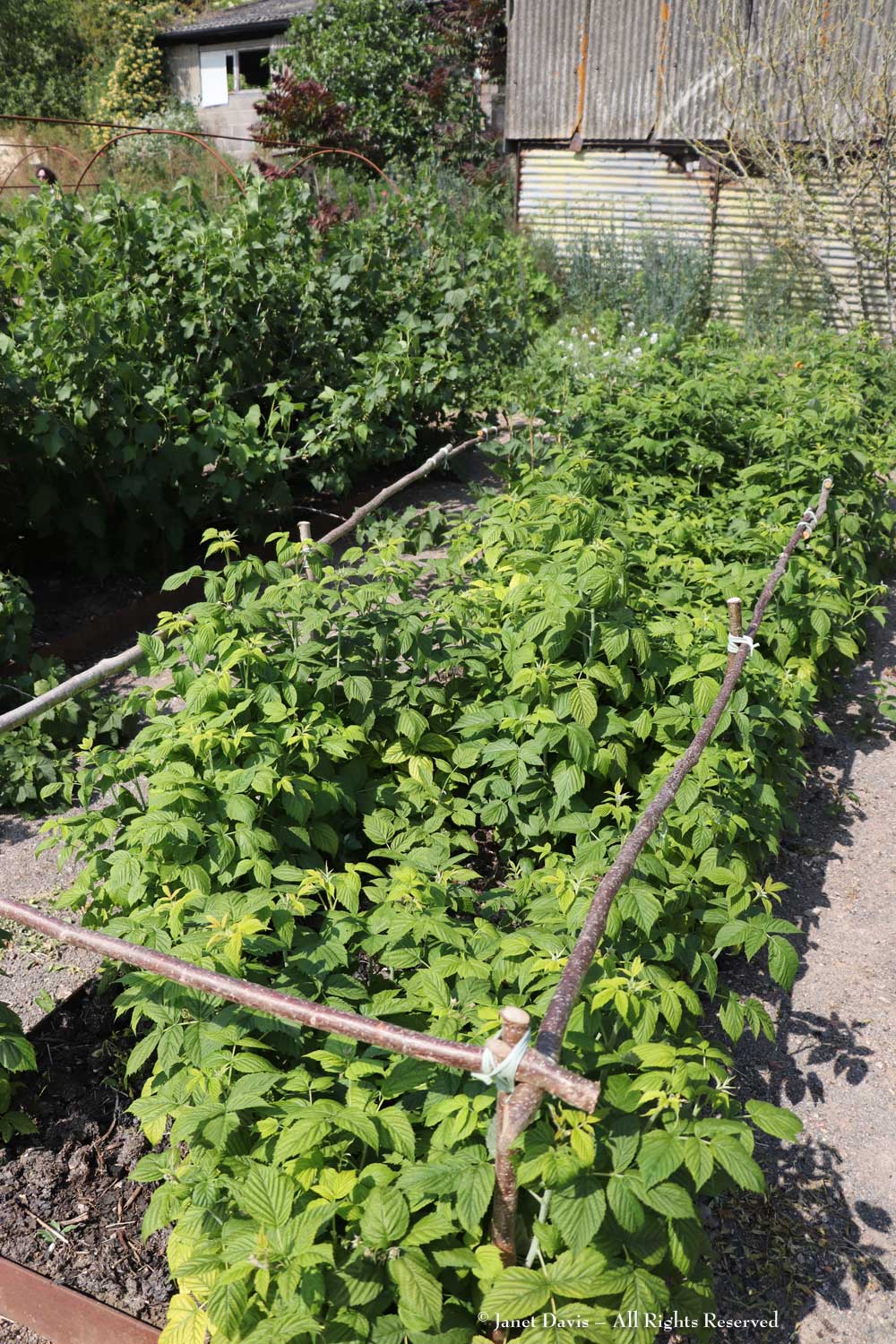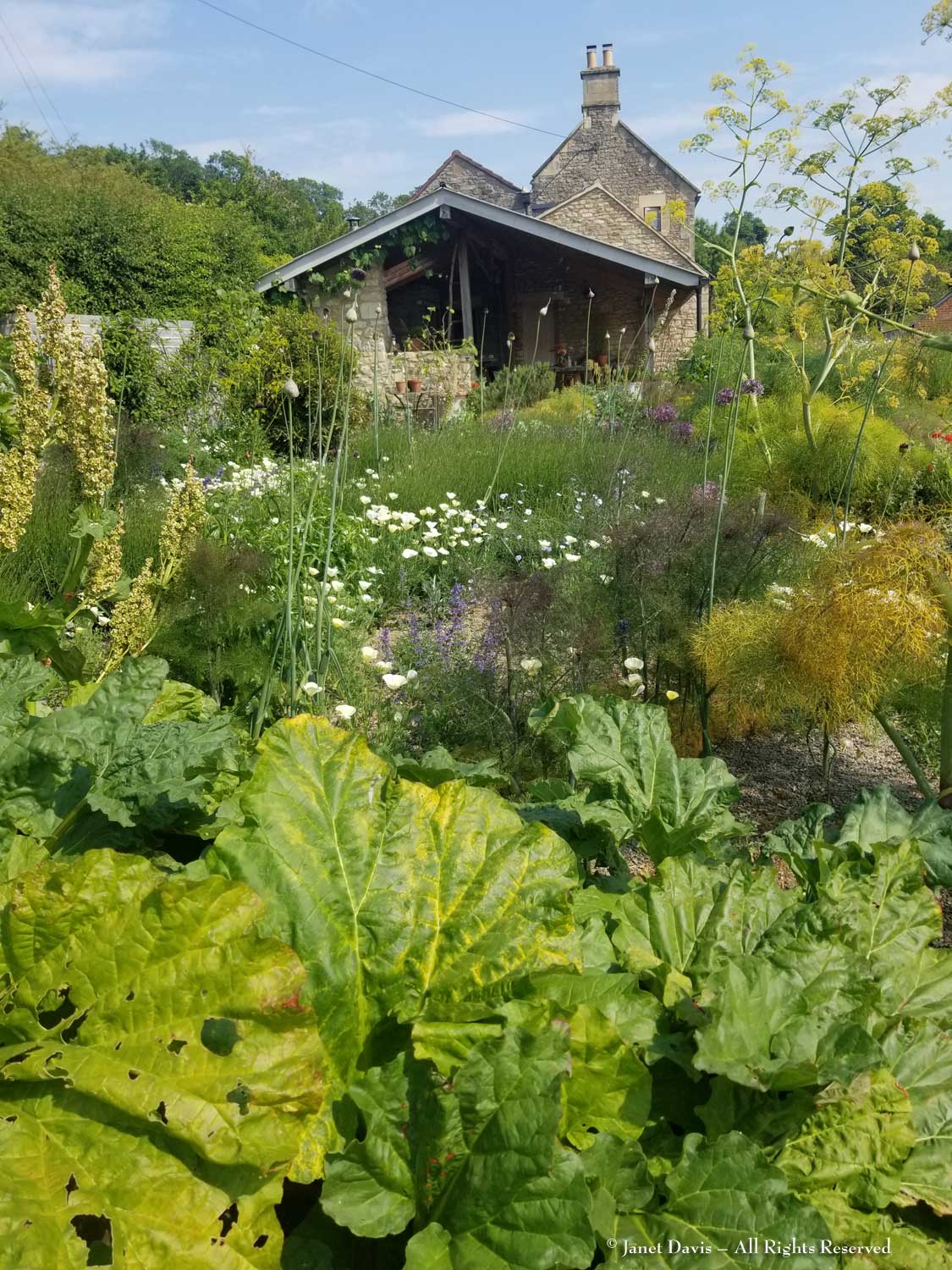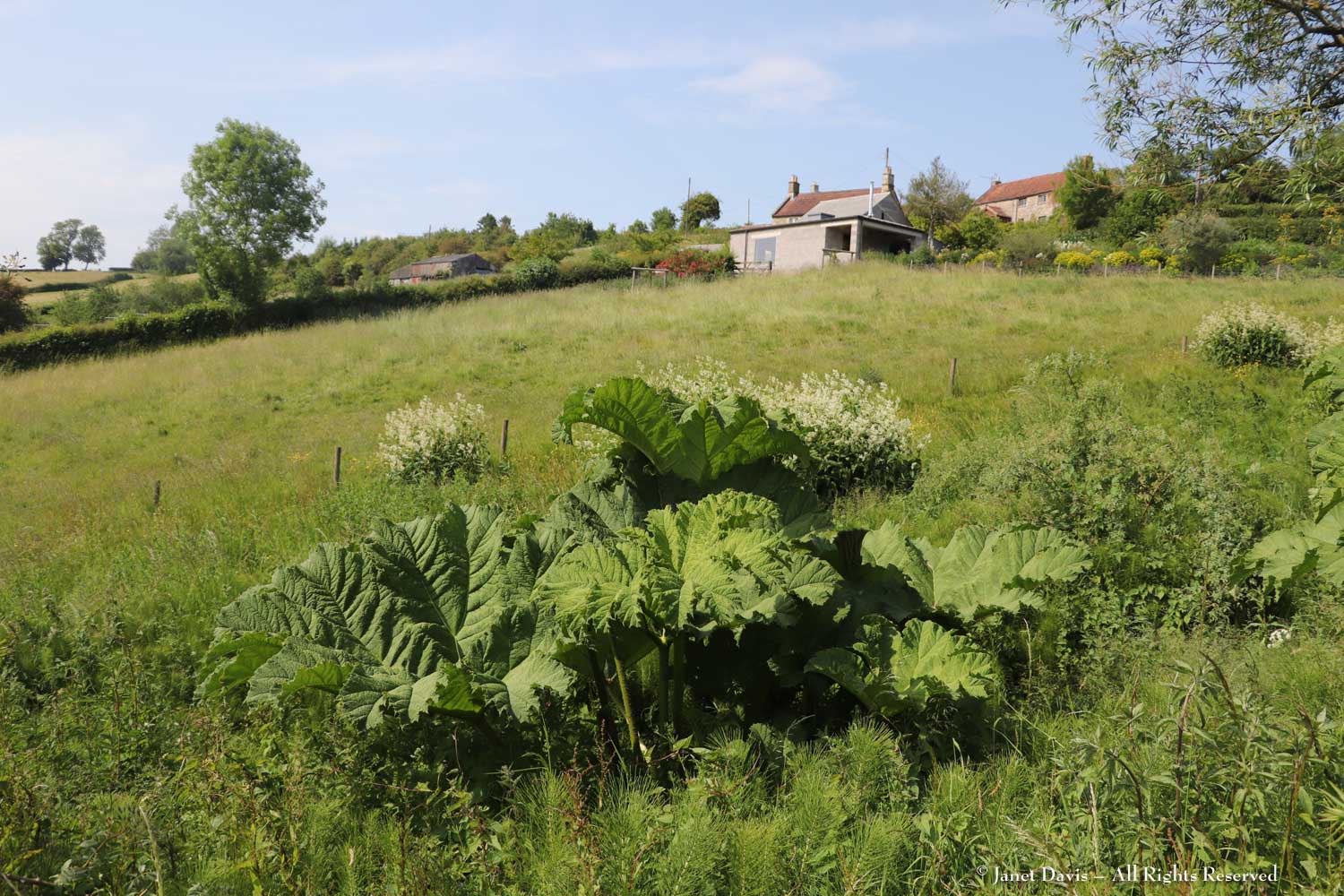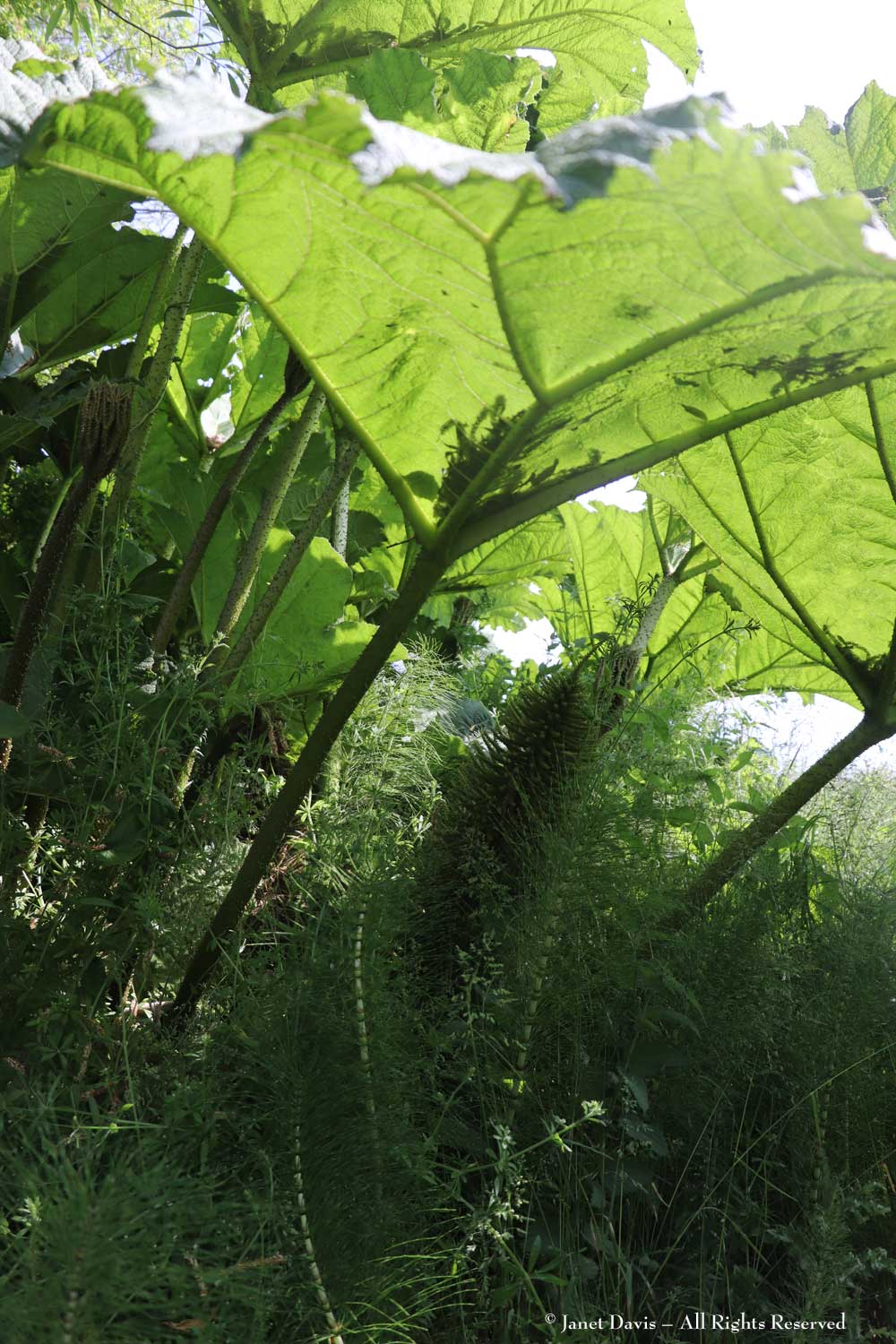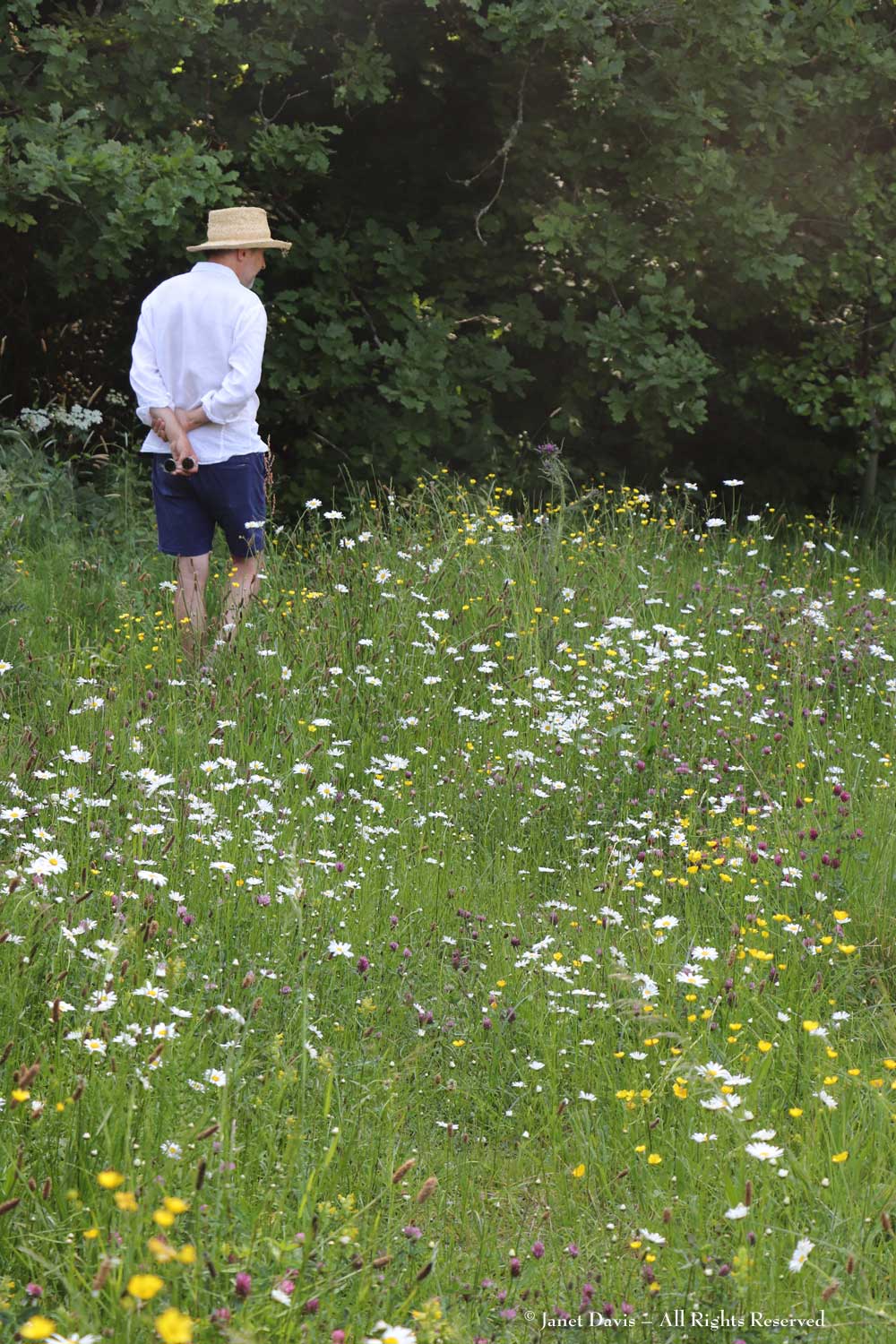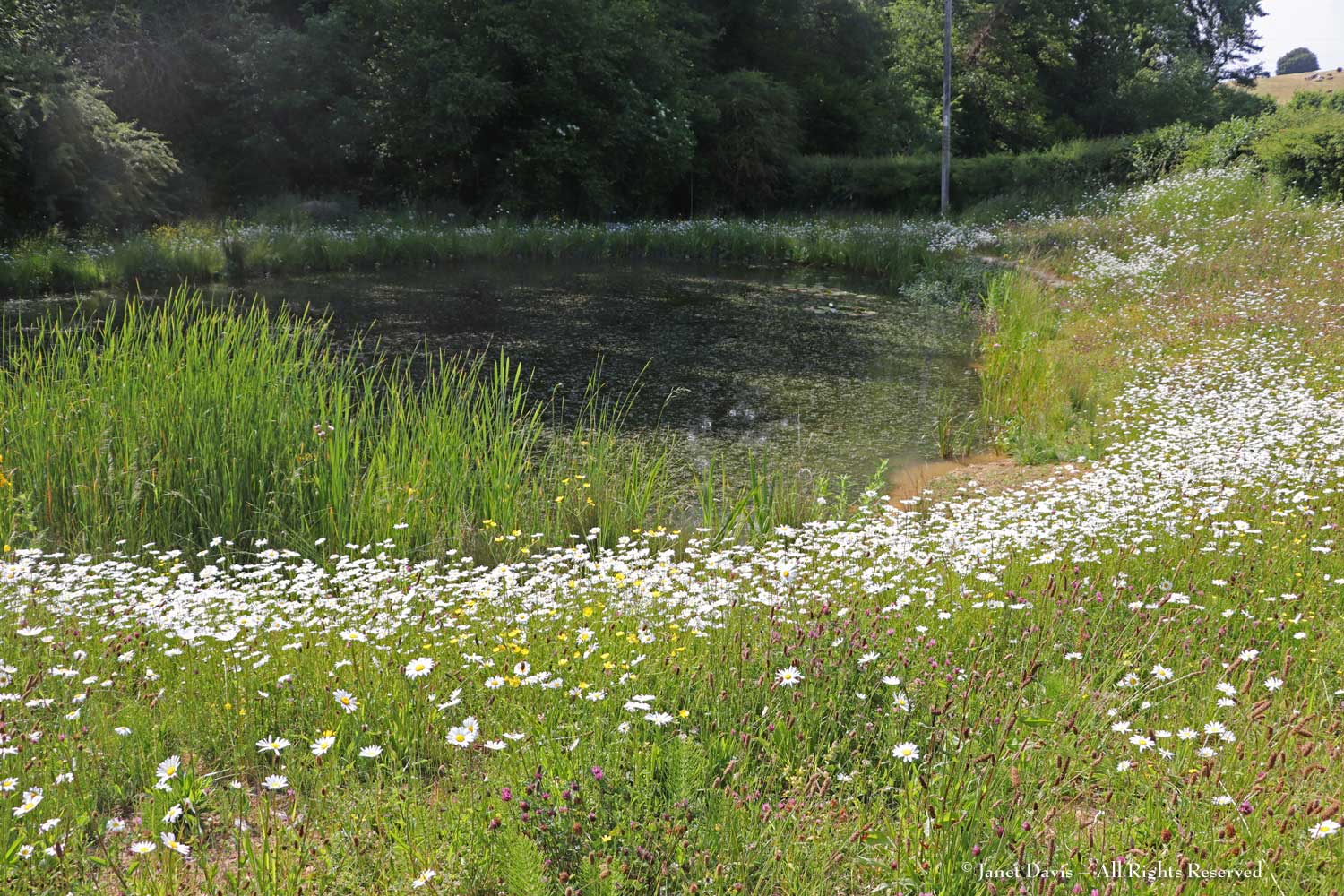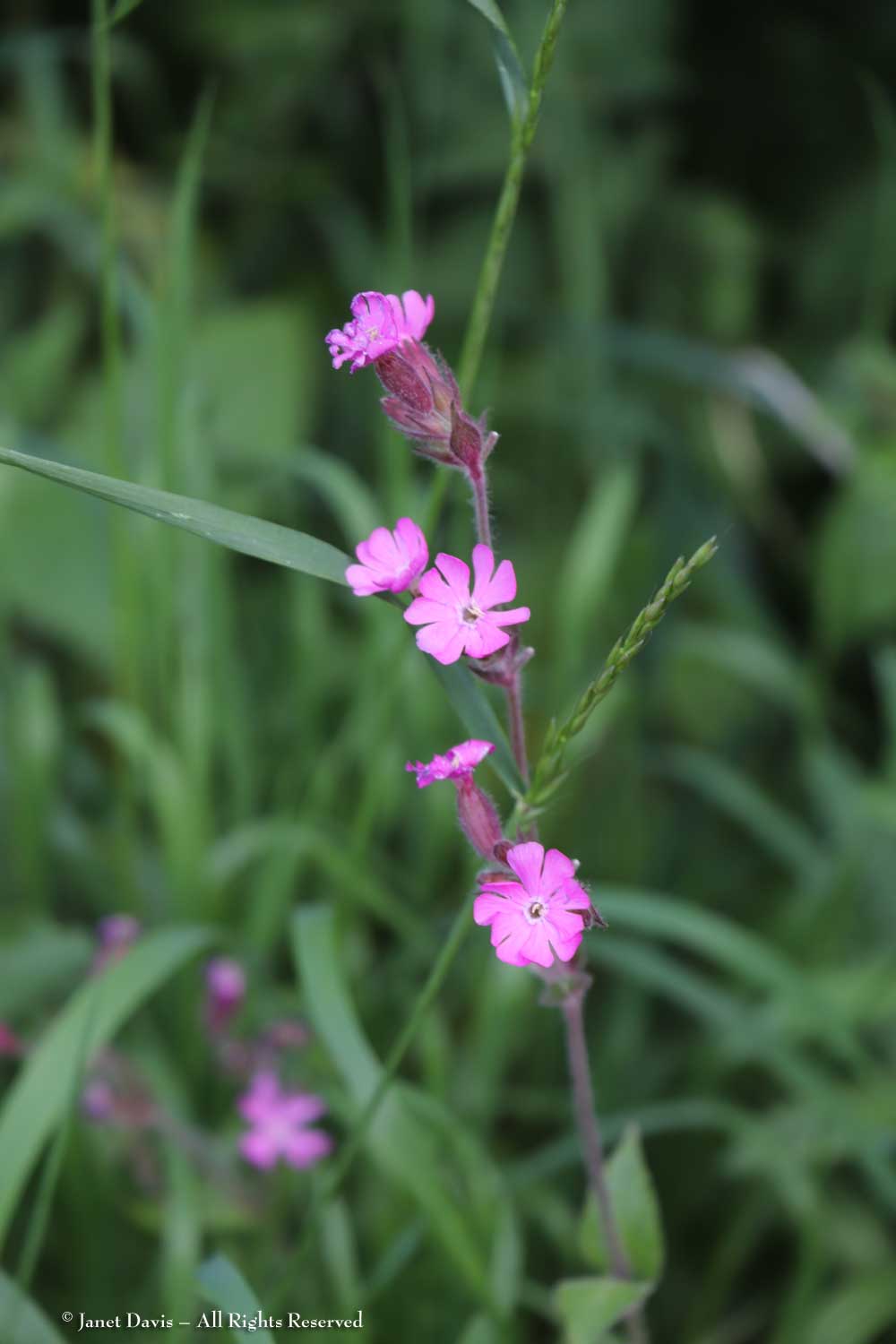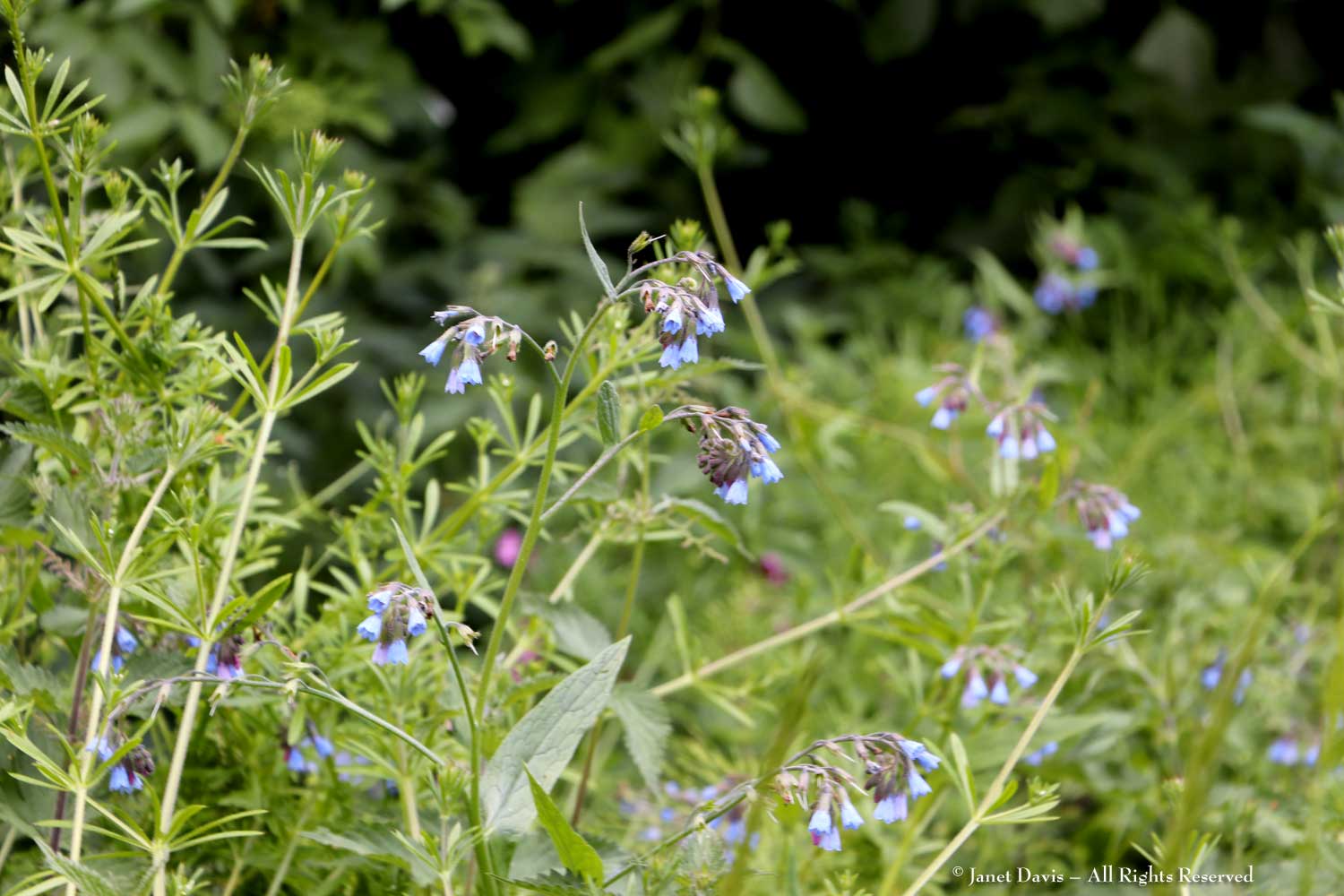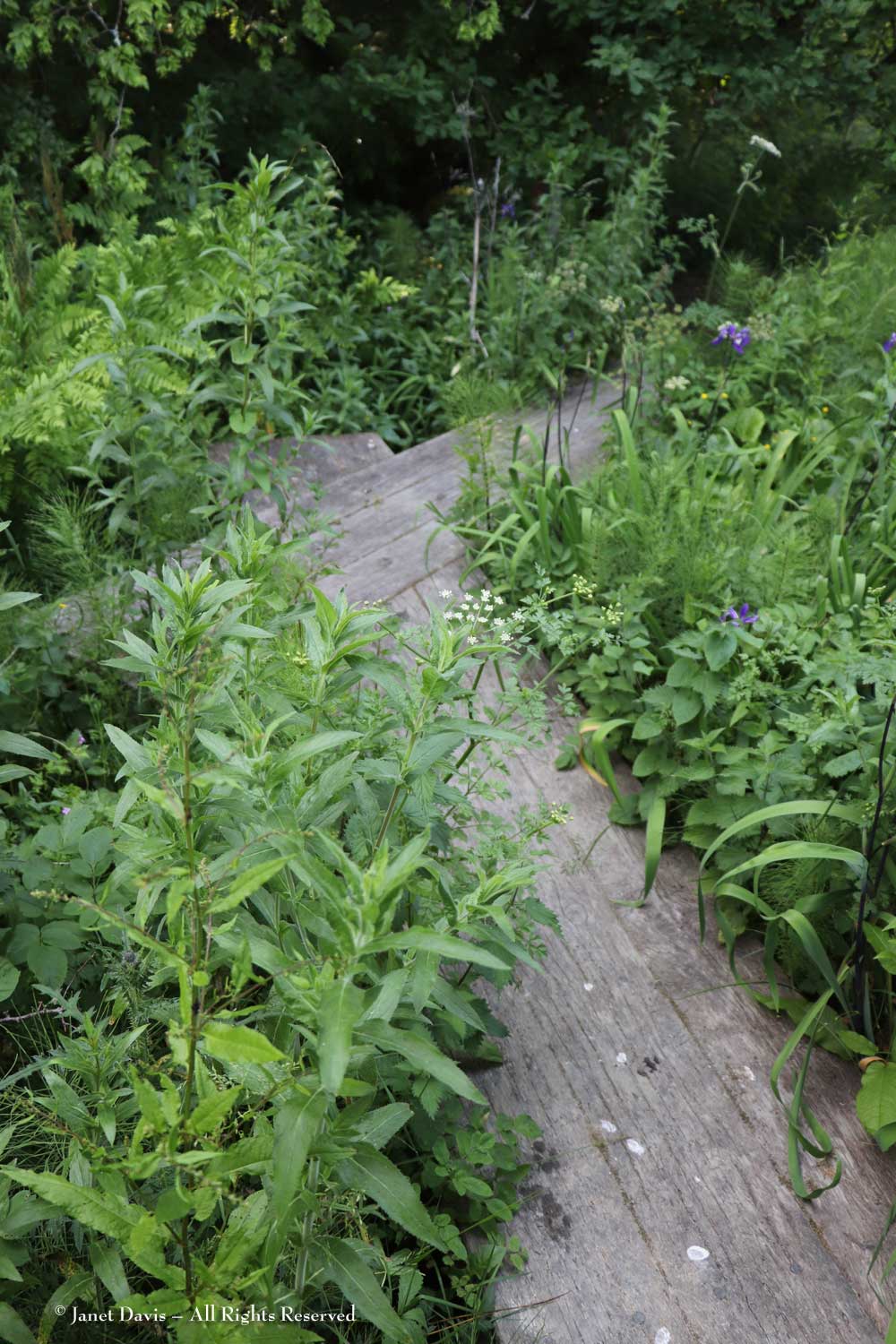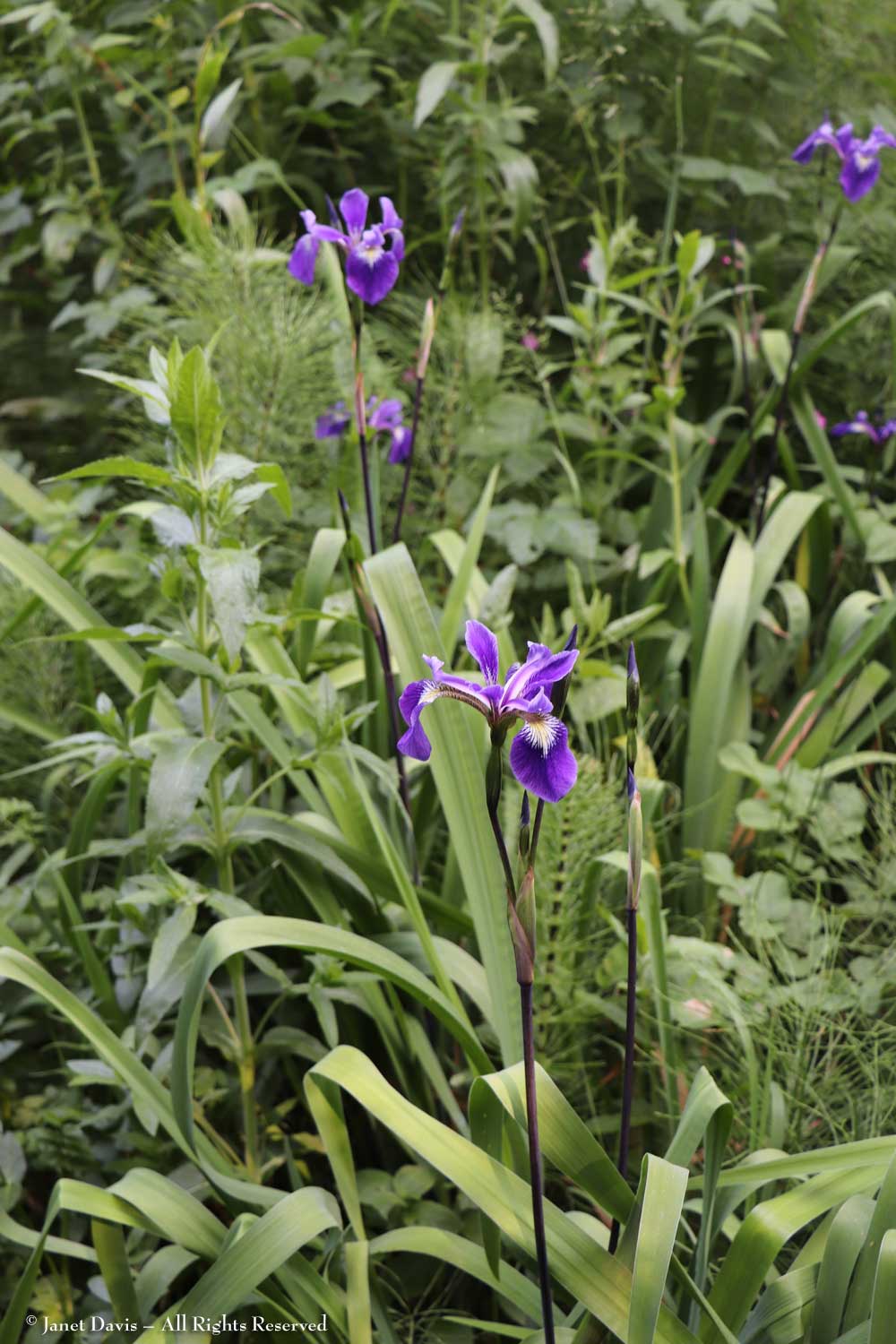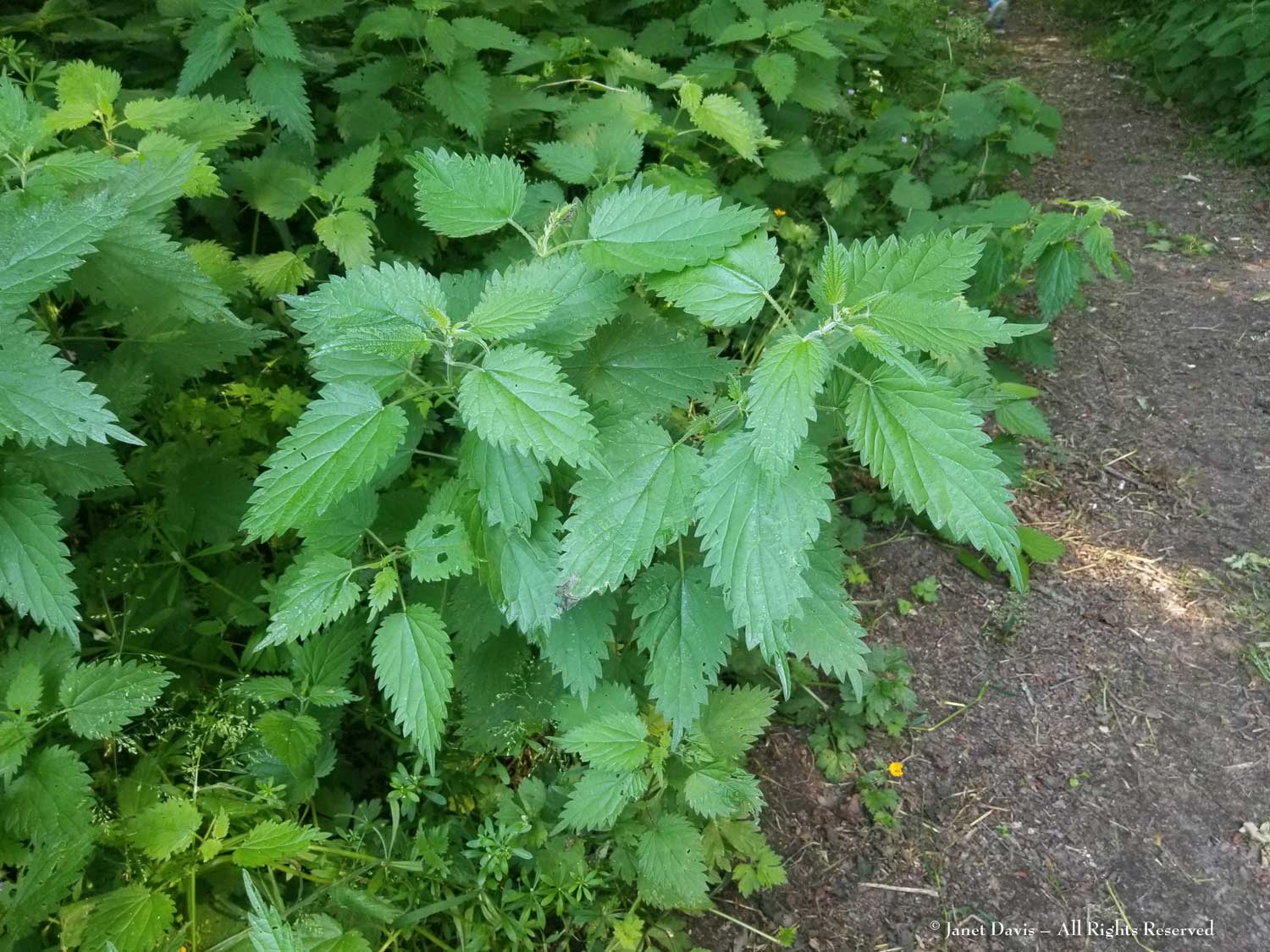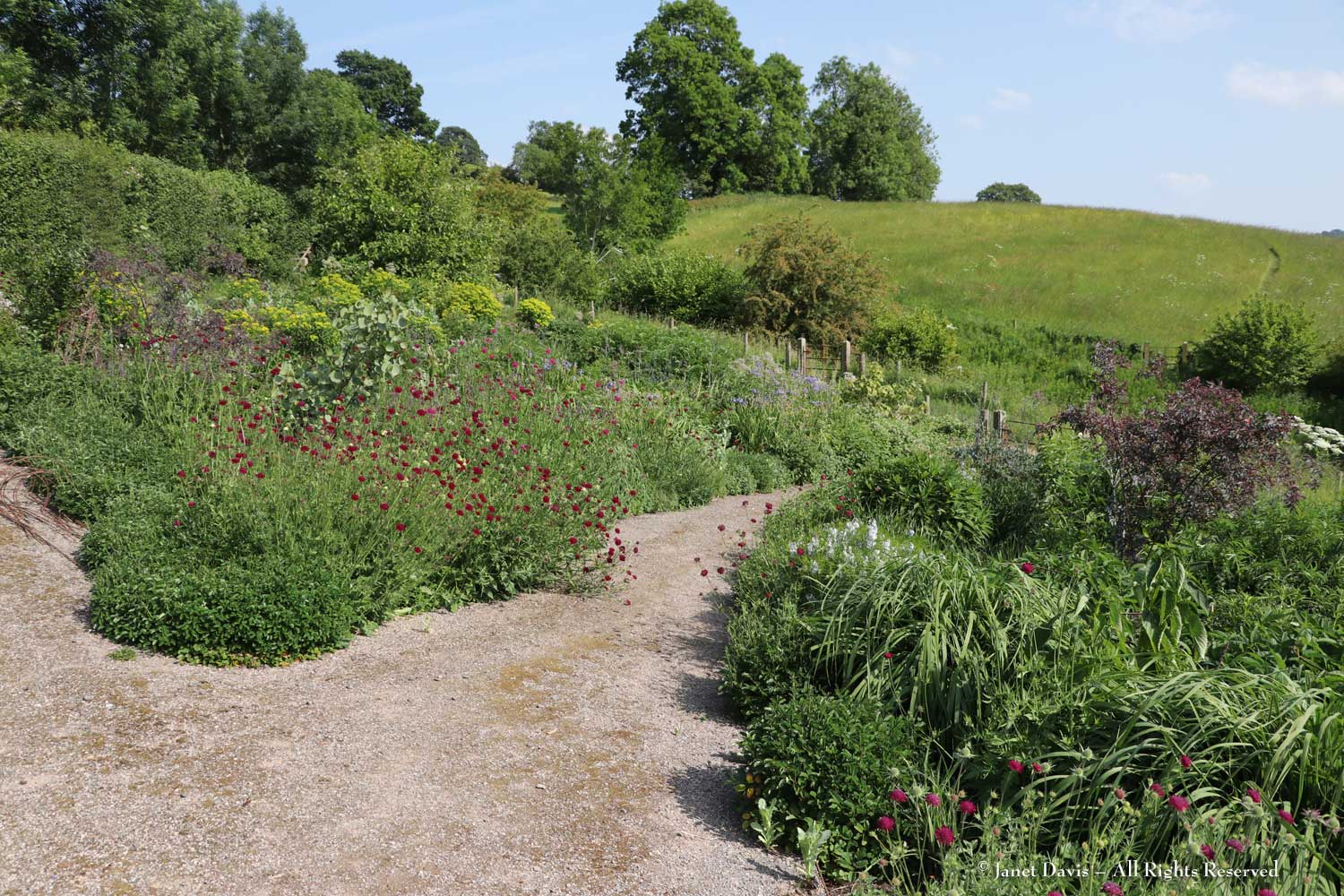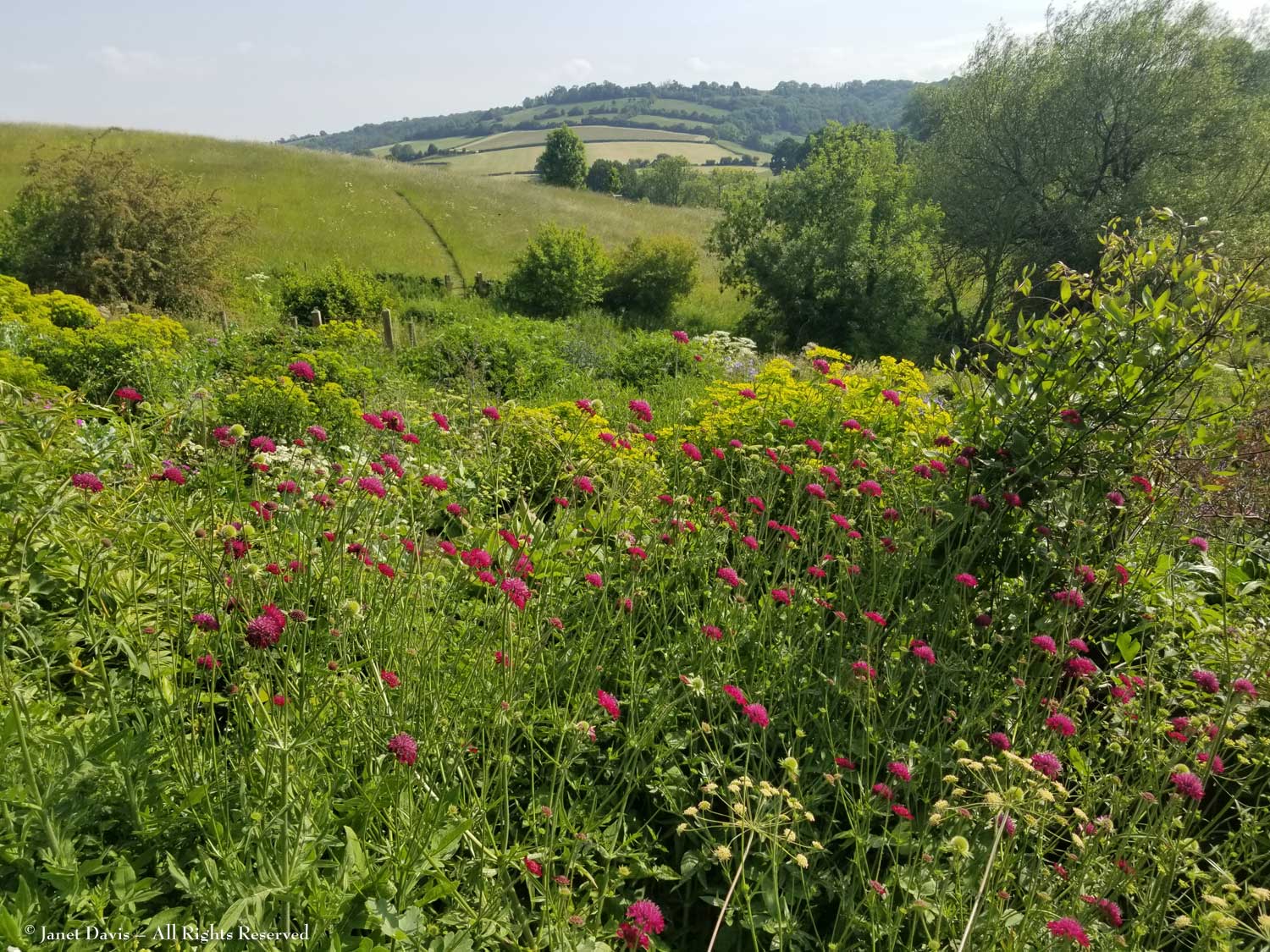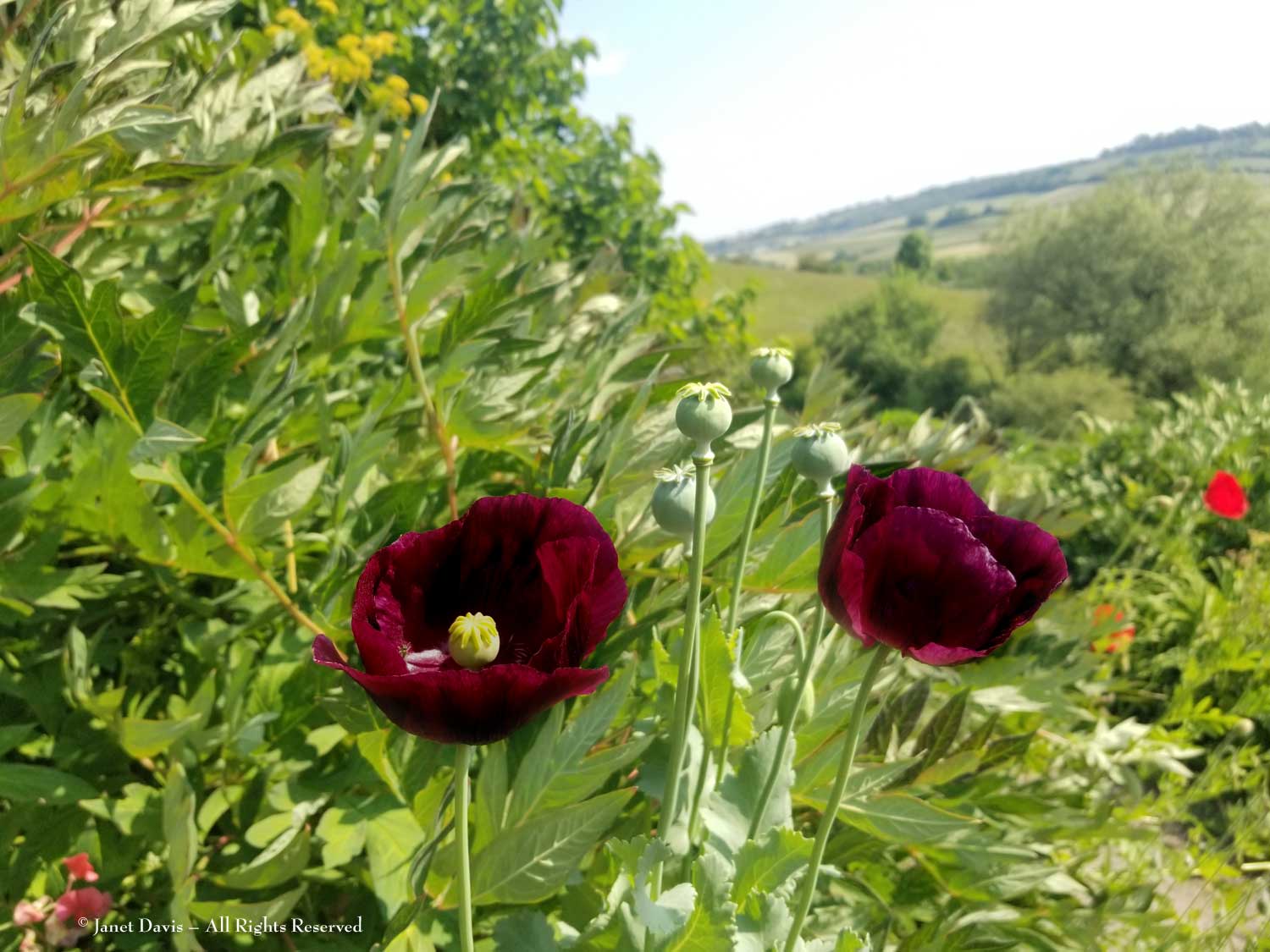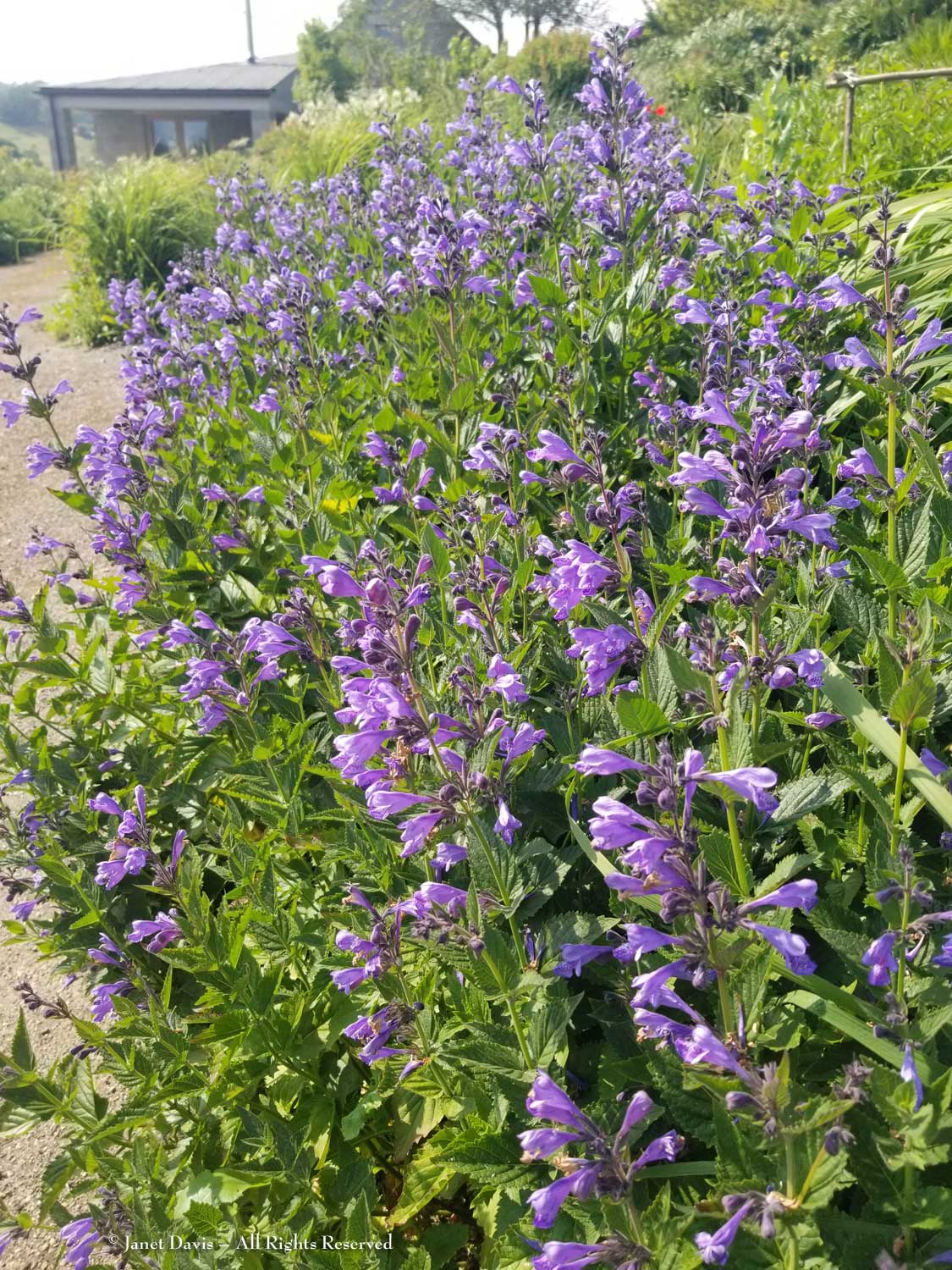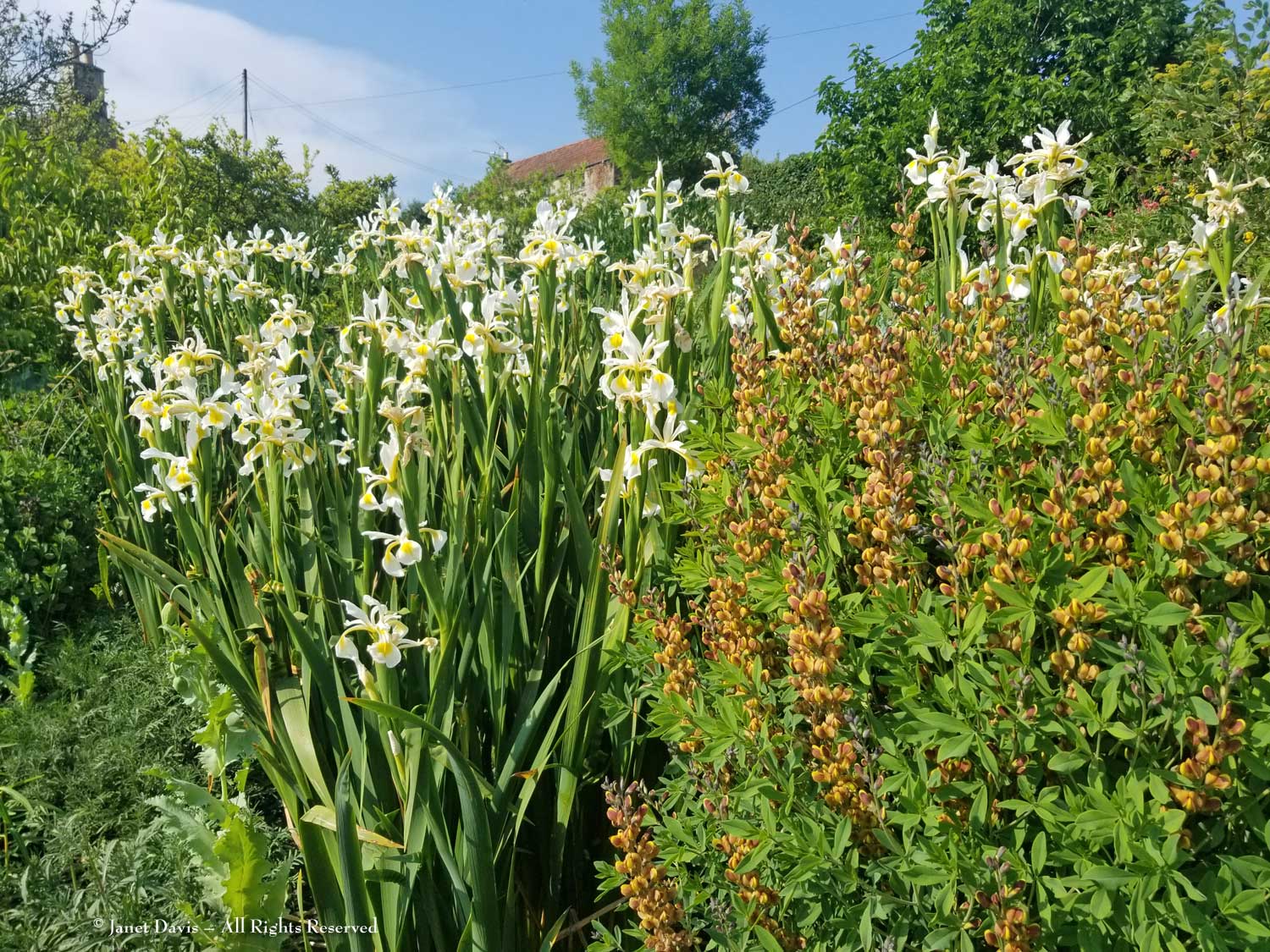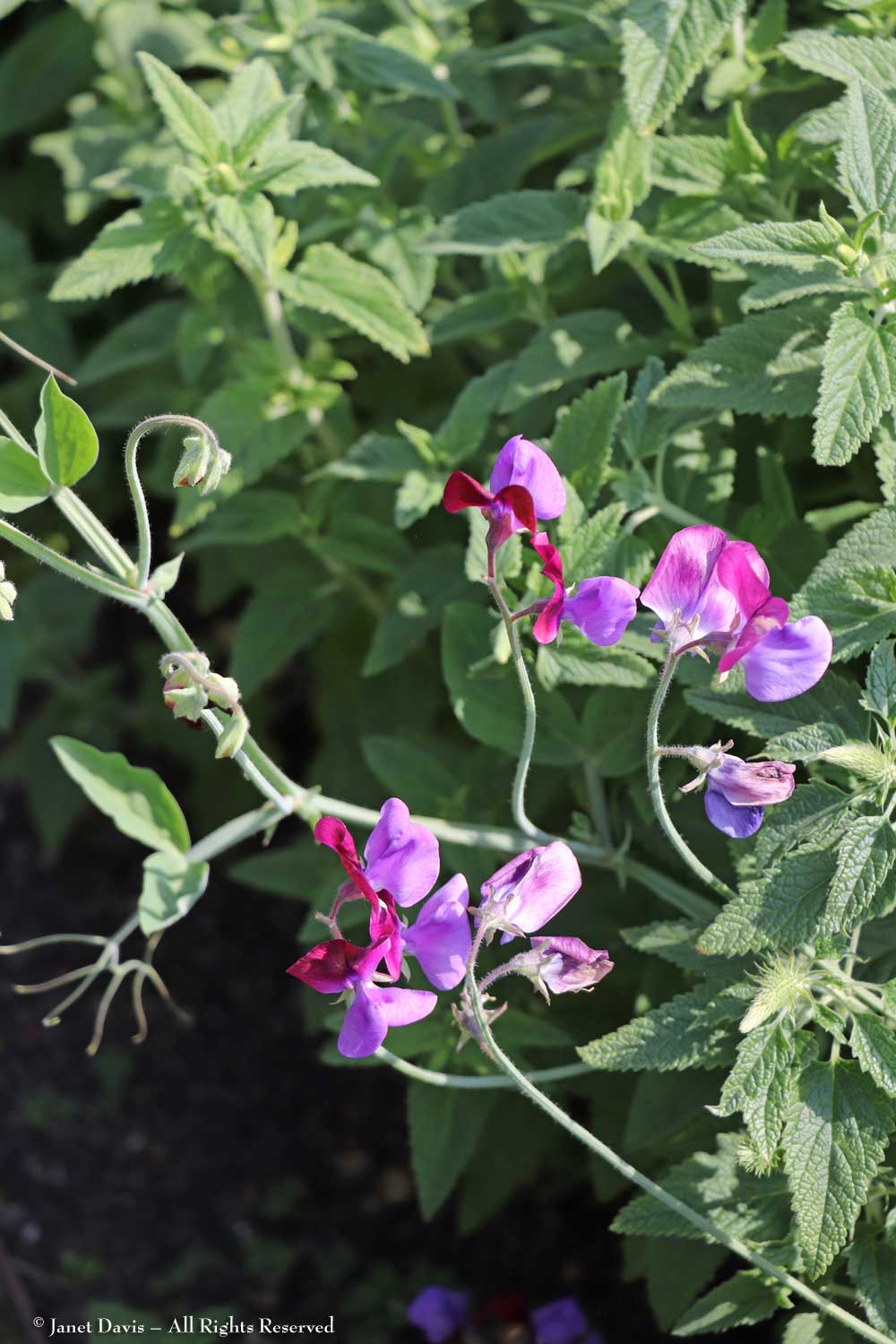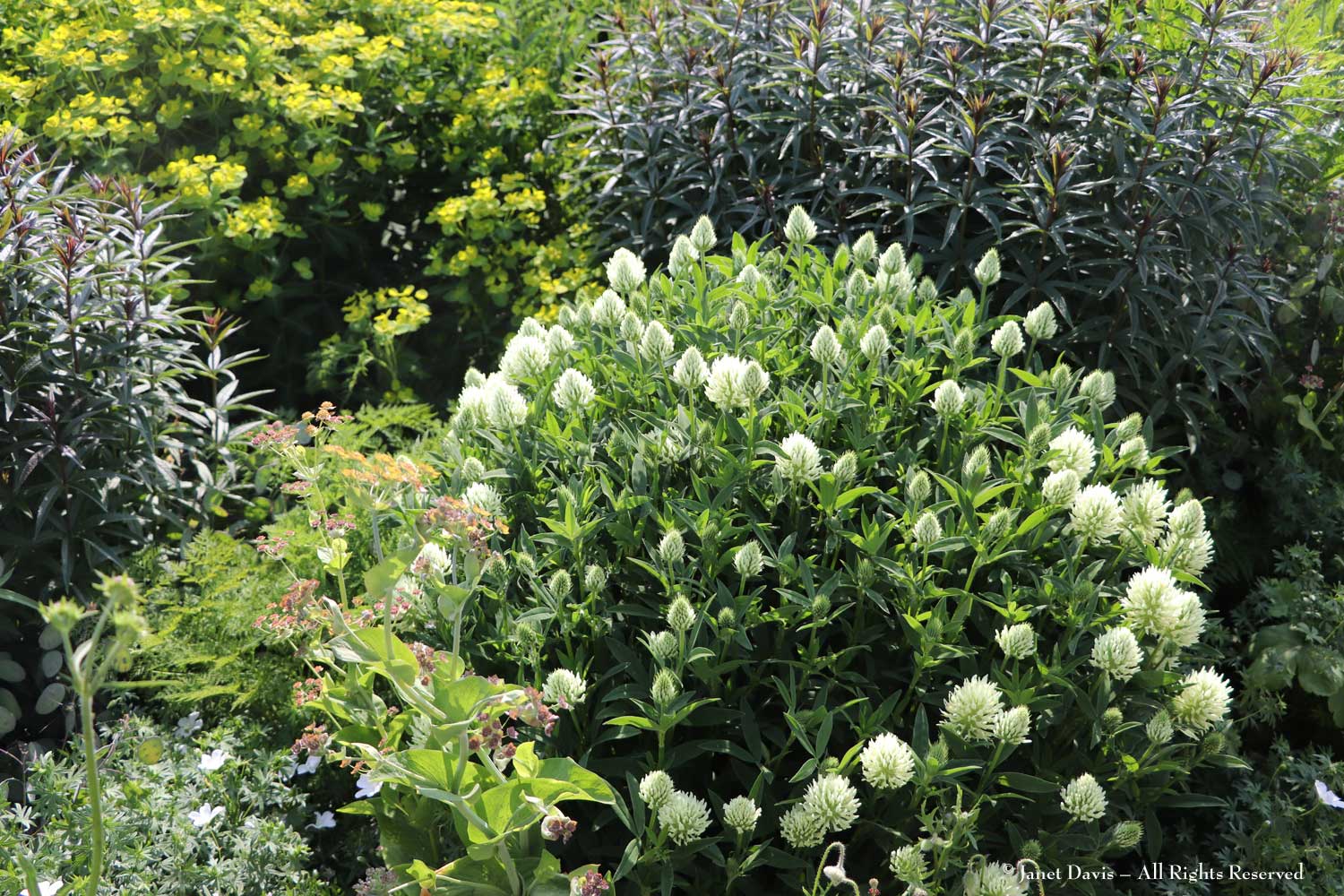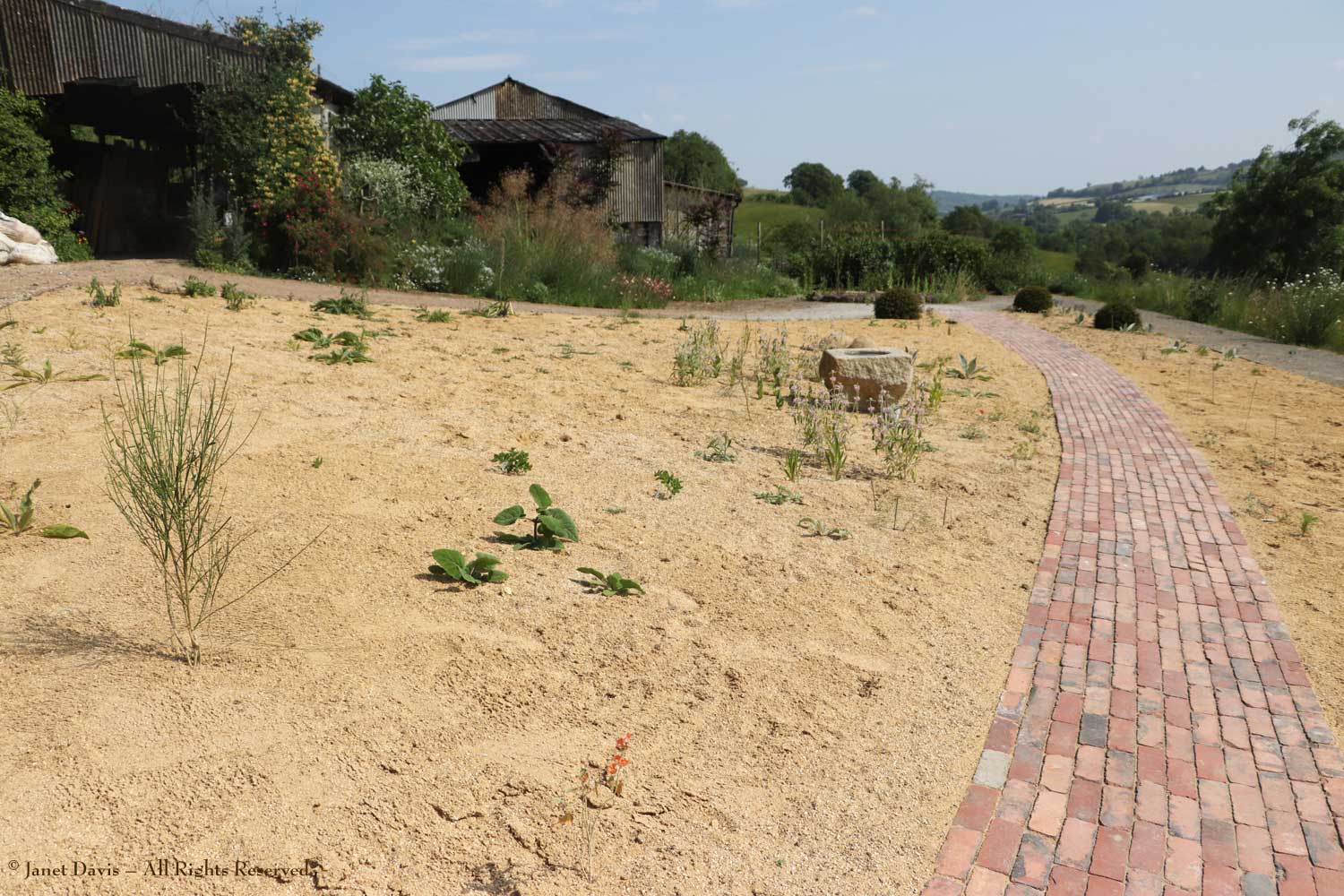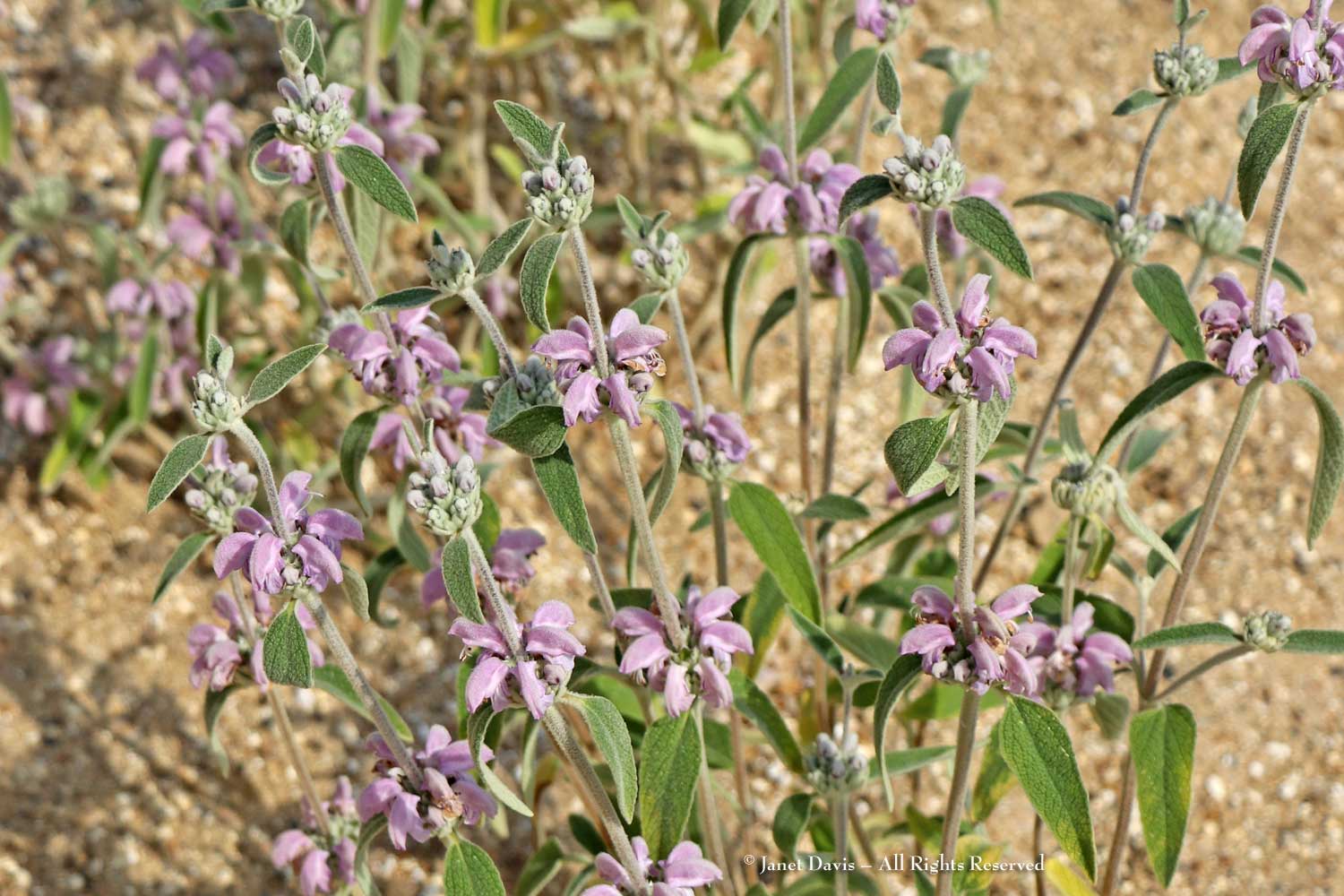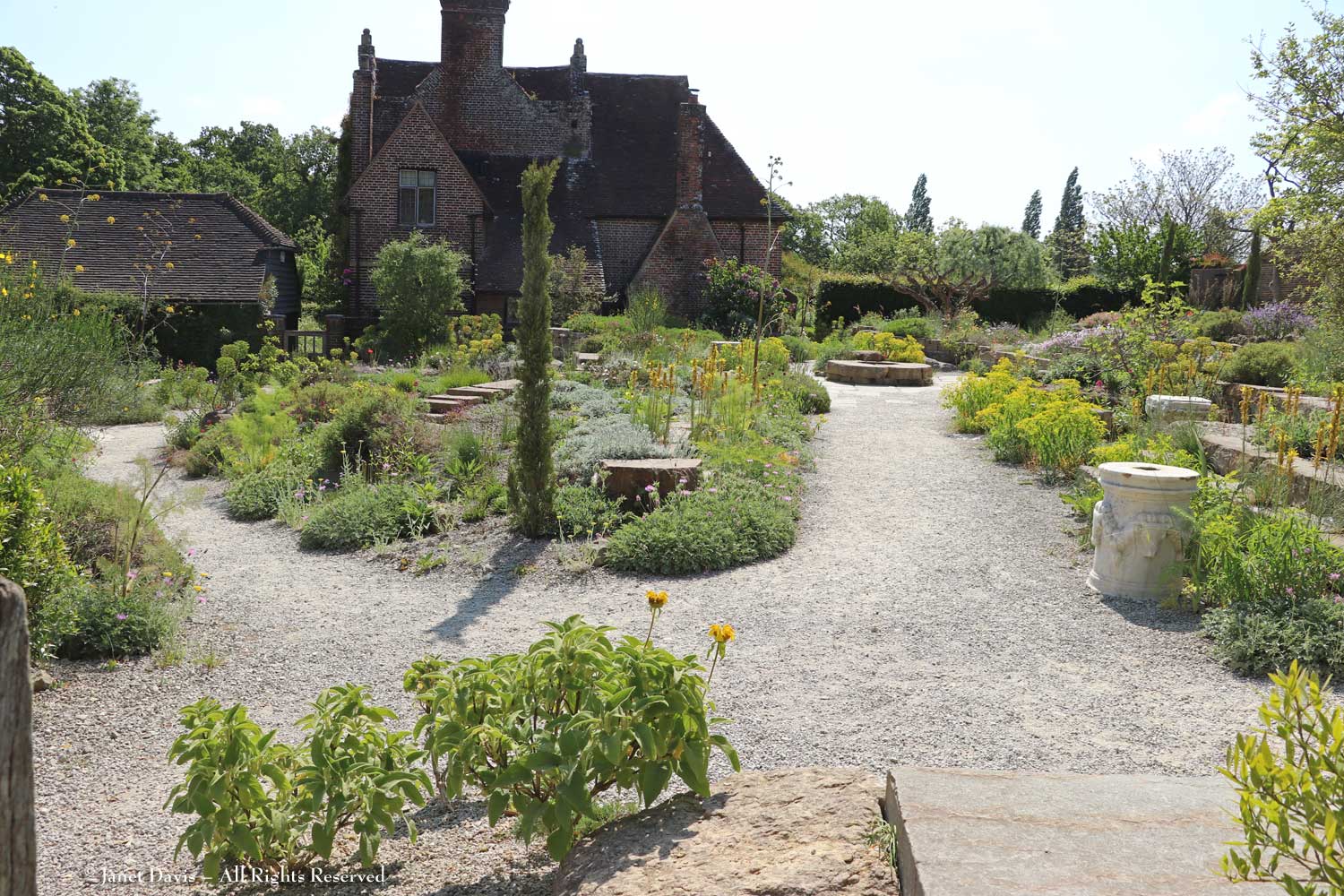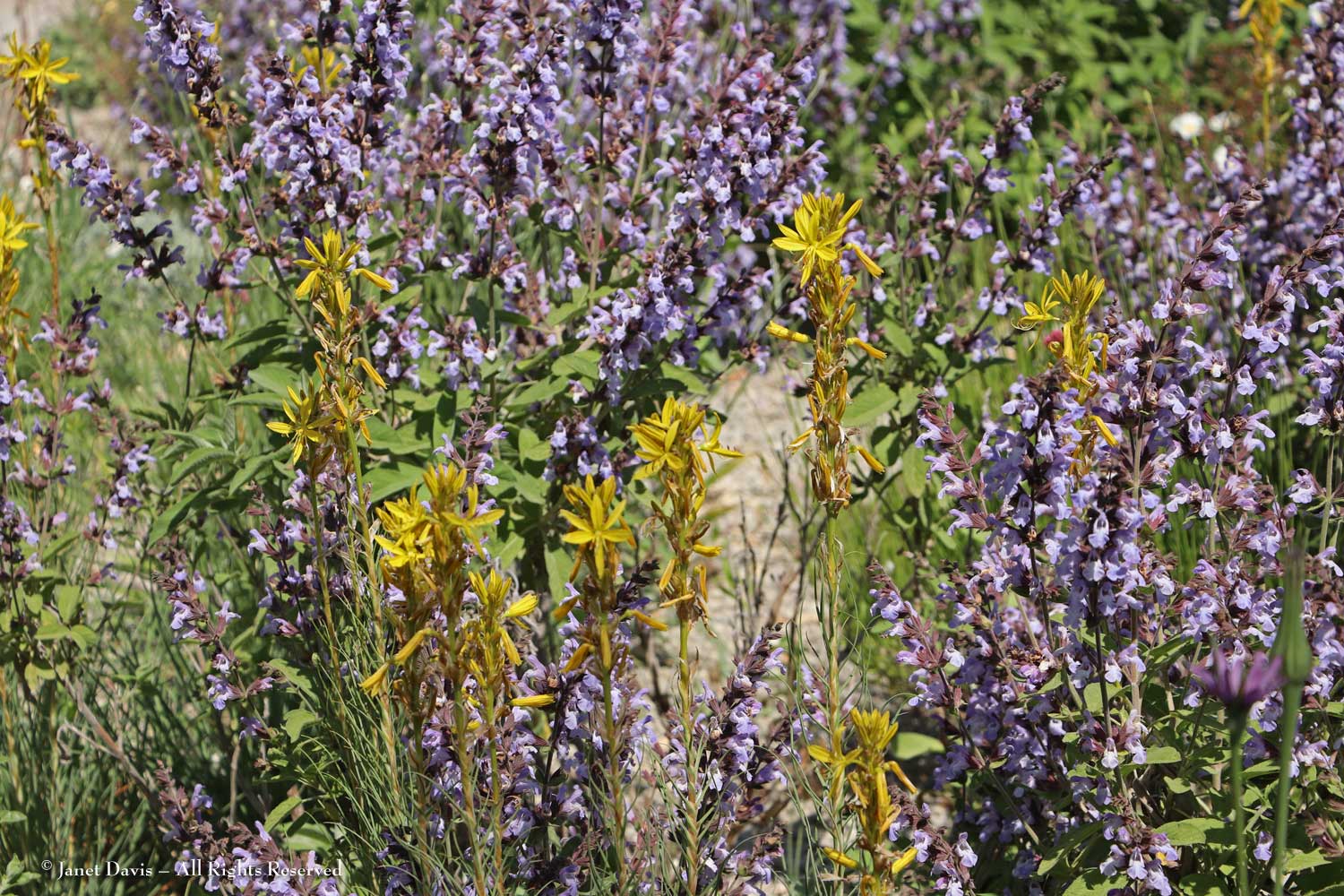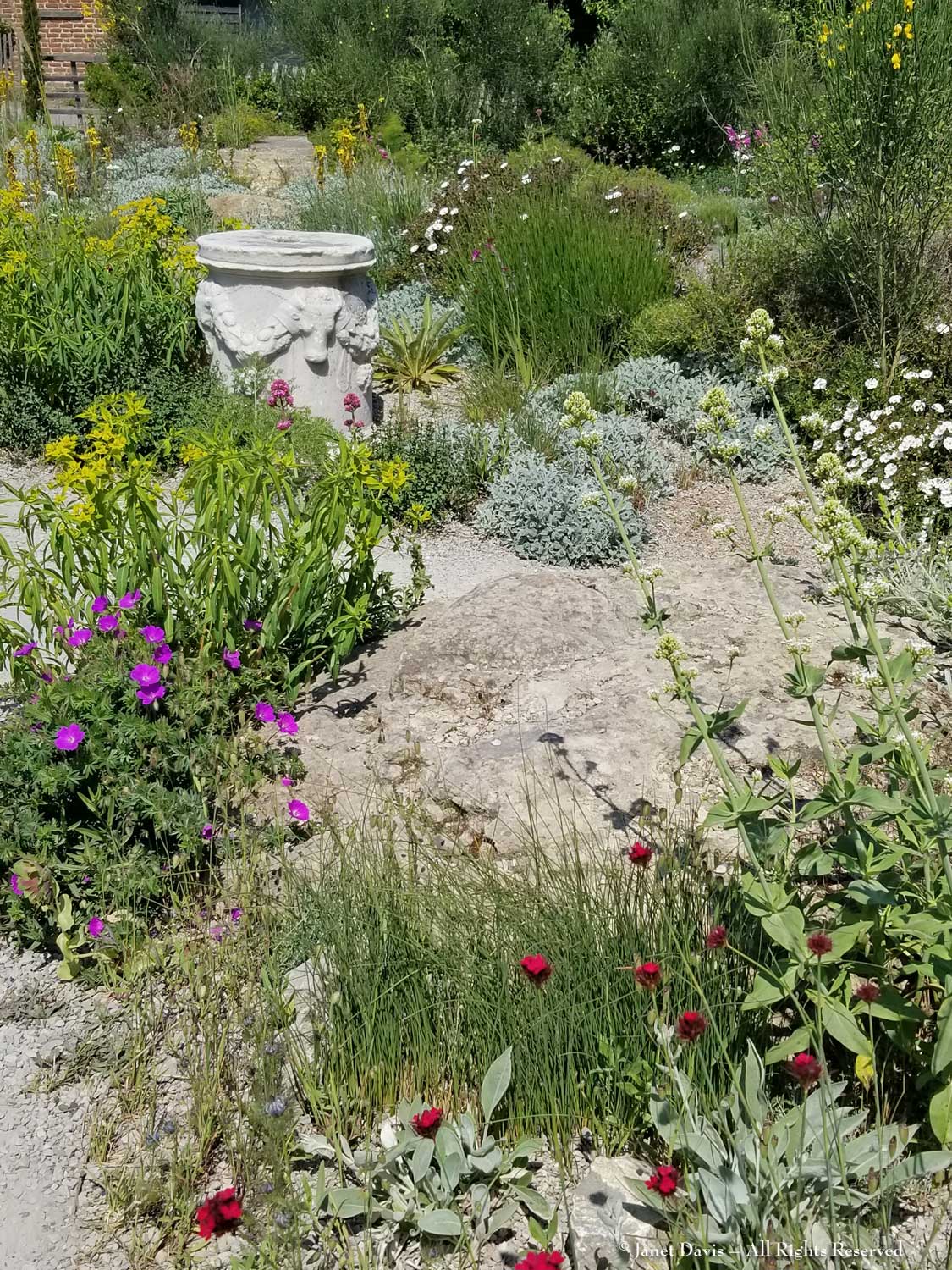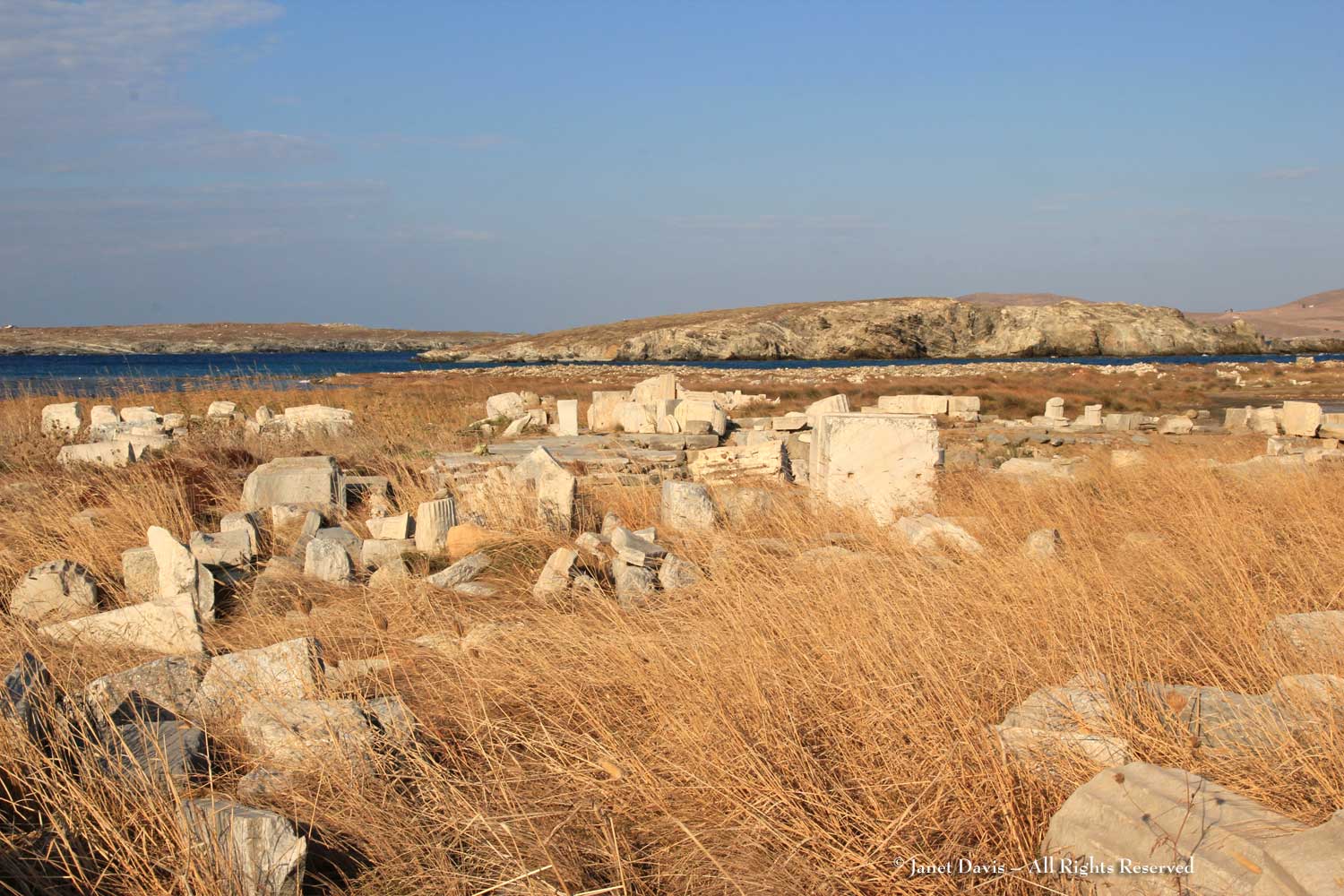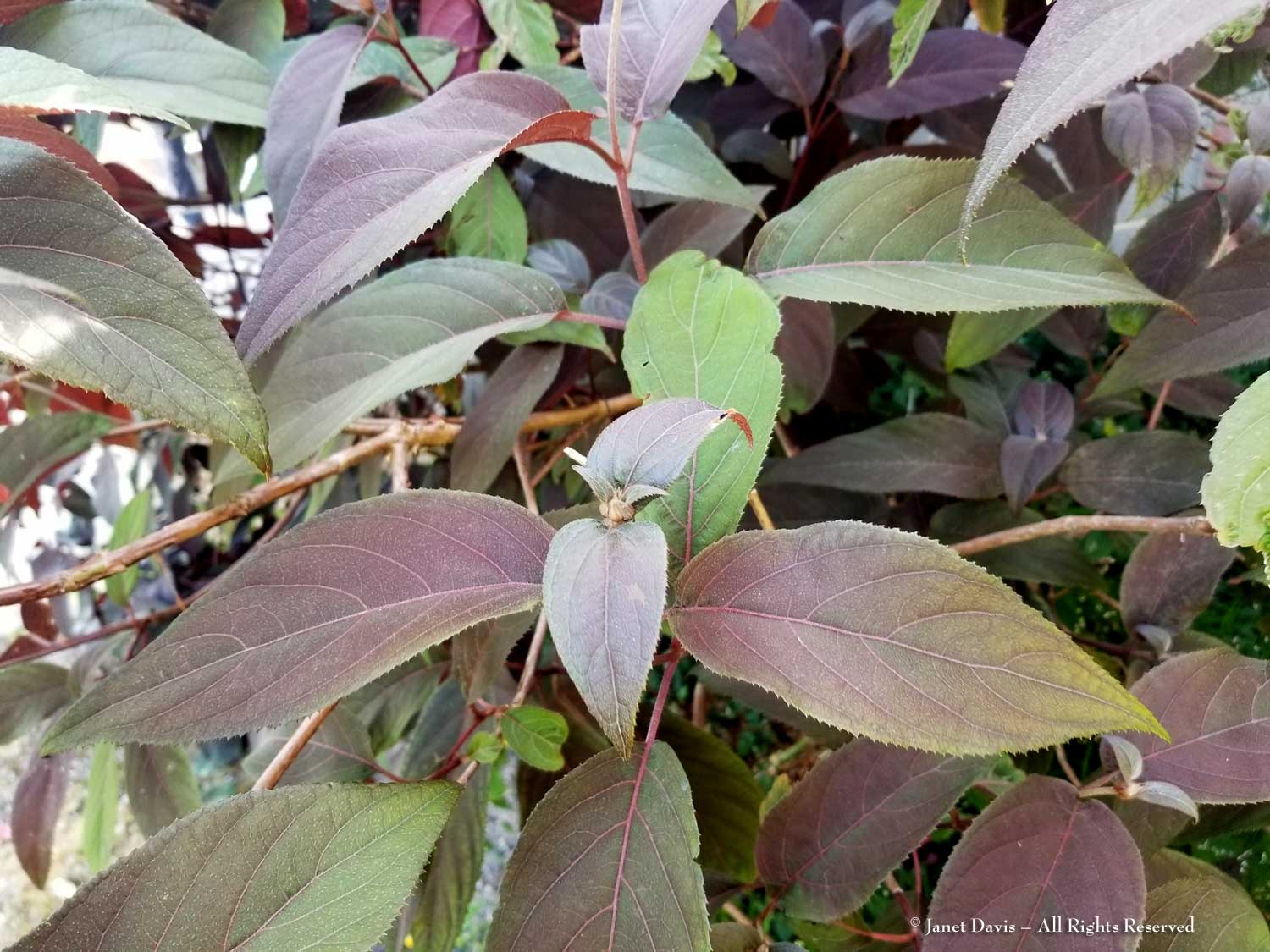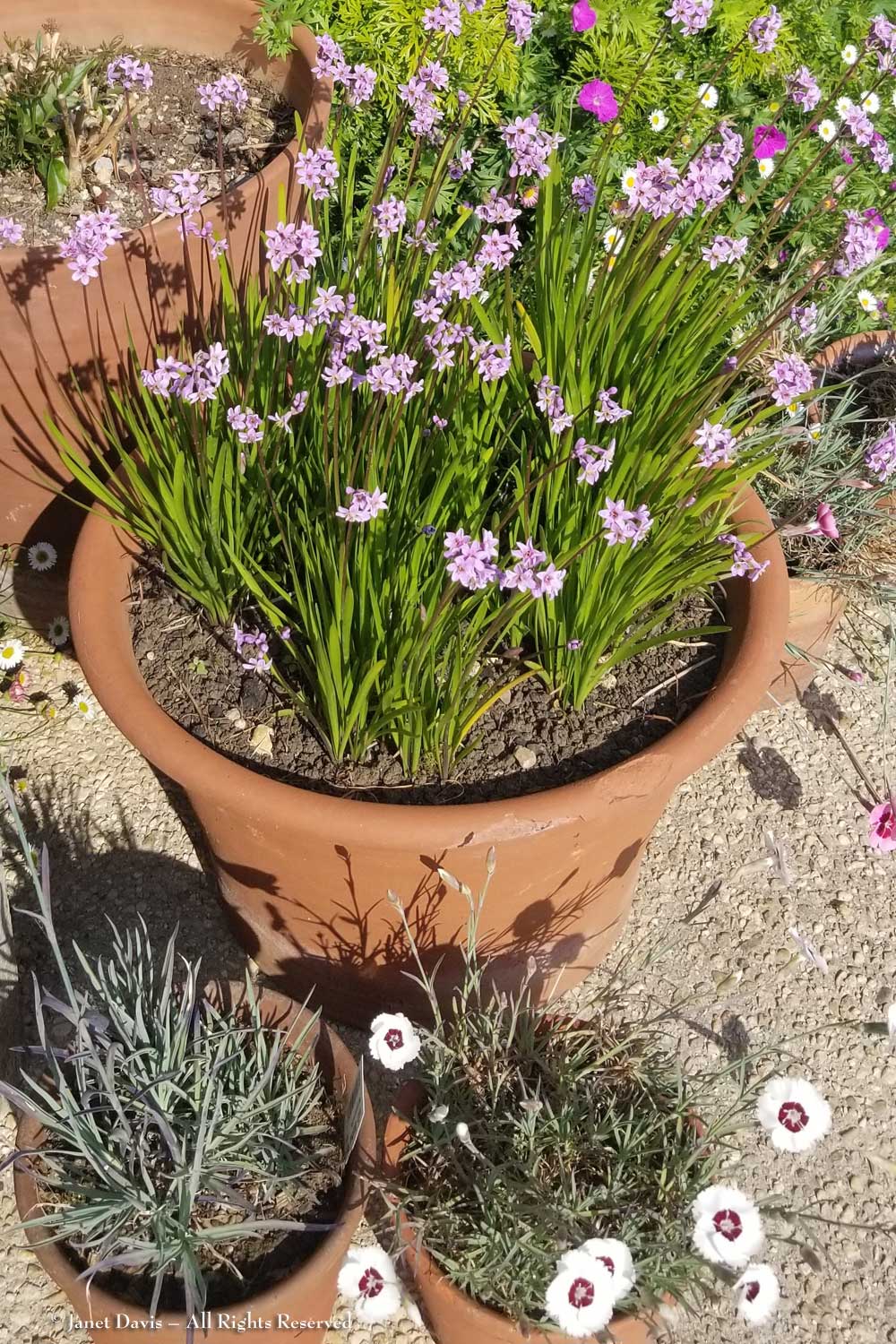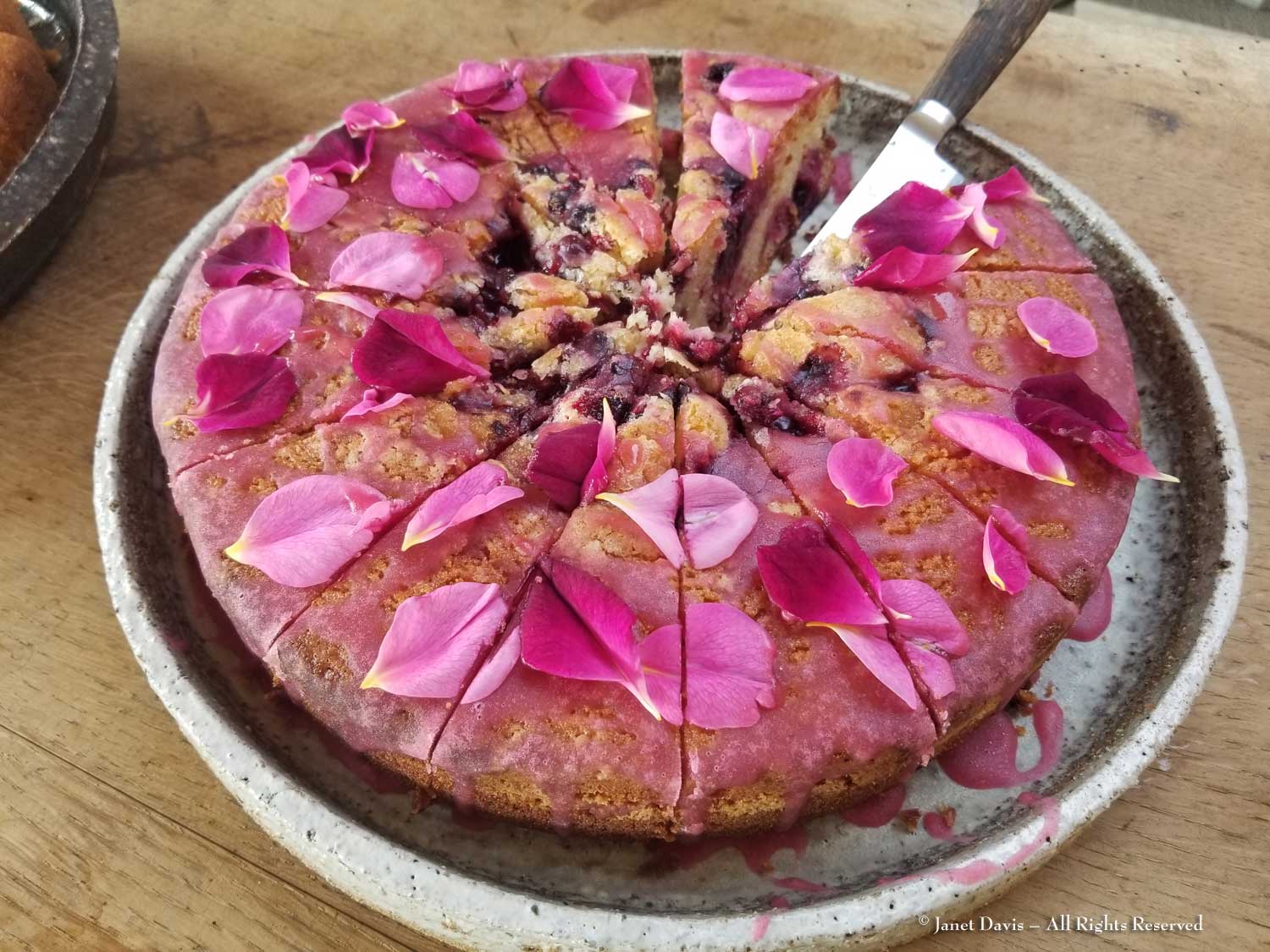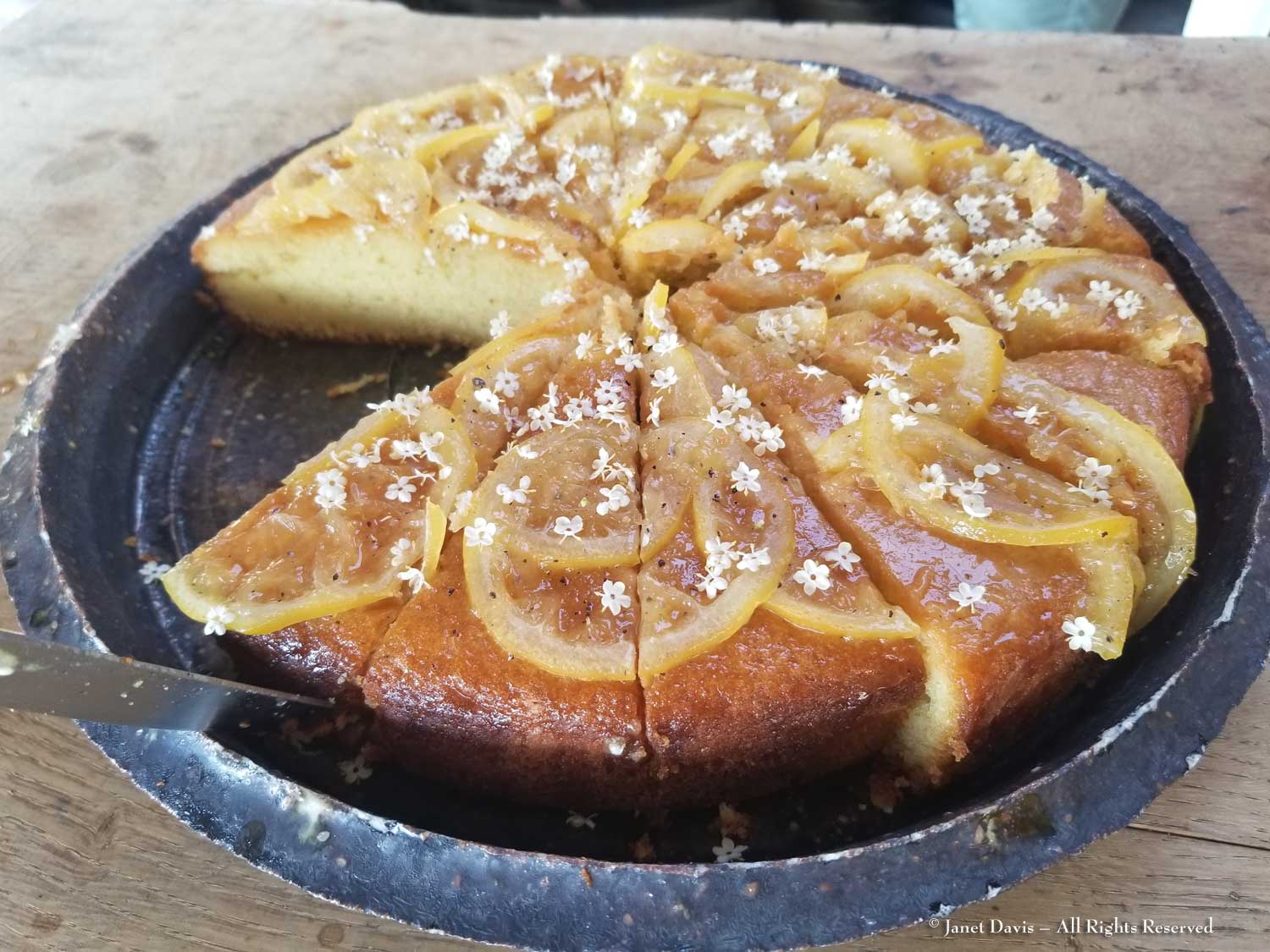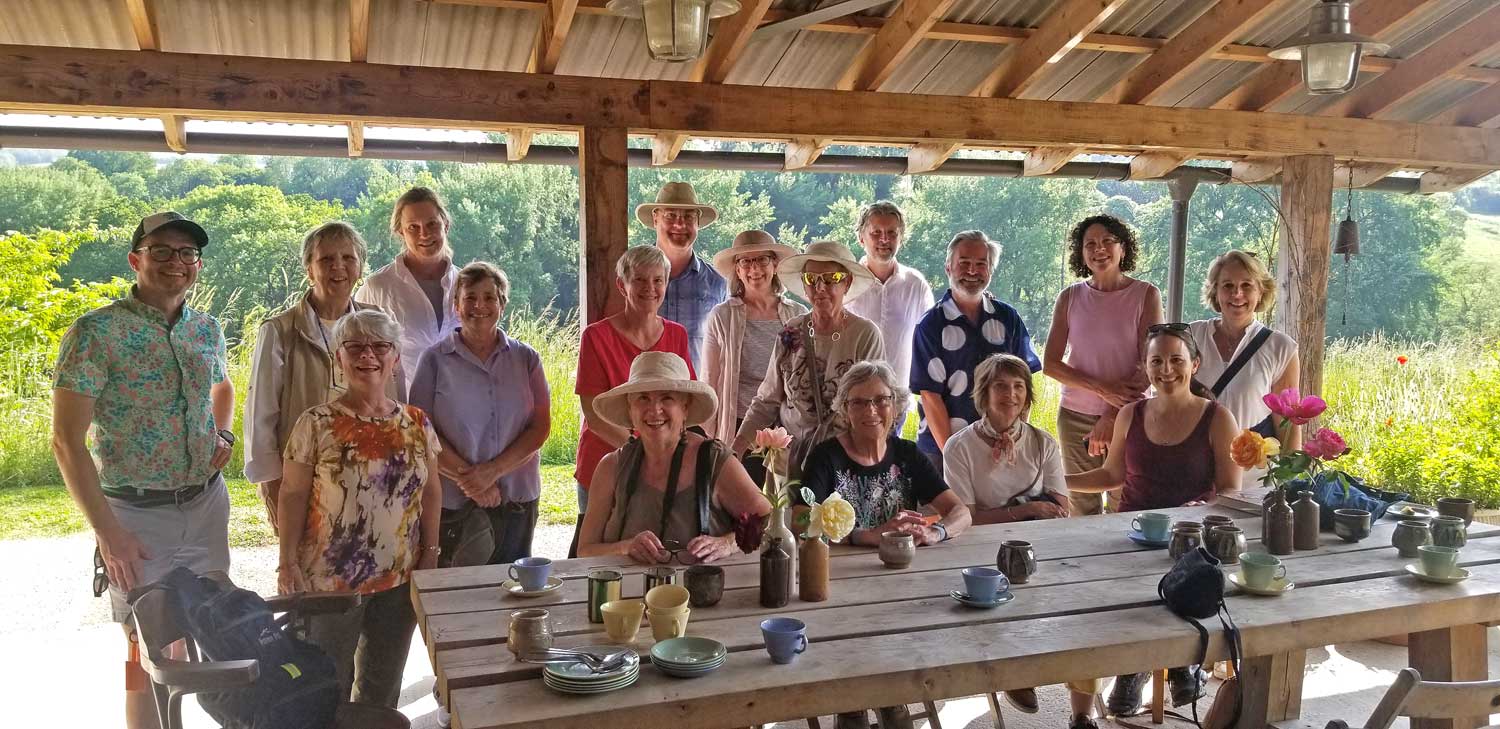On my recent trip to England with Carolyn Mullet’s Carex Tours, one of the most beautiful gardens we saw was Malverleys, a private home in East Woodhay, Hampshire featuring an 1870s house on a 60-acre estate, of which 10 acres are intensively gardened, and the rest parkland or sheep pasture. We strolled in past the Topiary Meadow, formal yew topiaries in an ebullient meadow of wildflowers and grasses, reminiscent of the meadow at Great Dixter that I’d seen just days earlier. That isn’t surprising, perhaps, since Malverleys’ grounds manager is…..
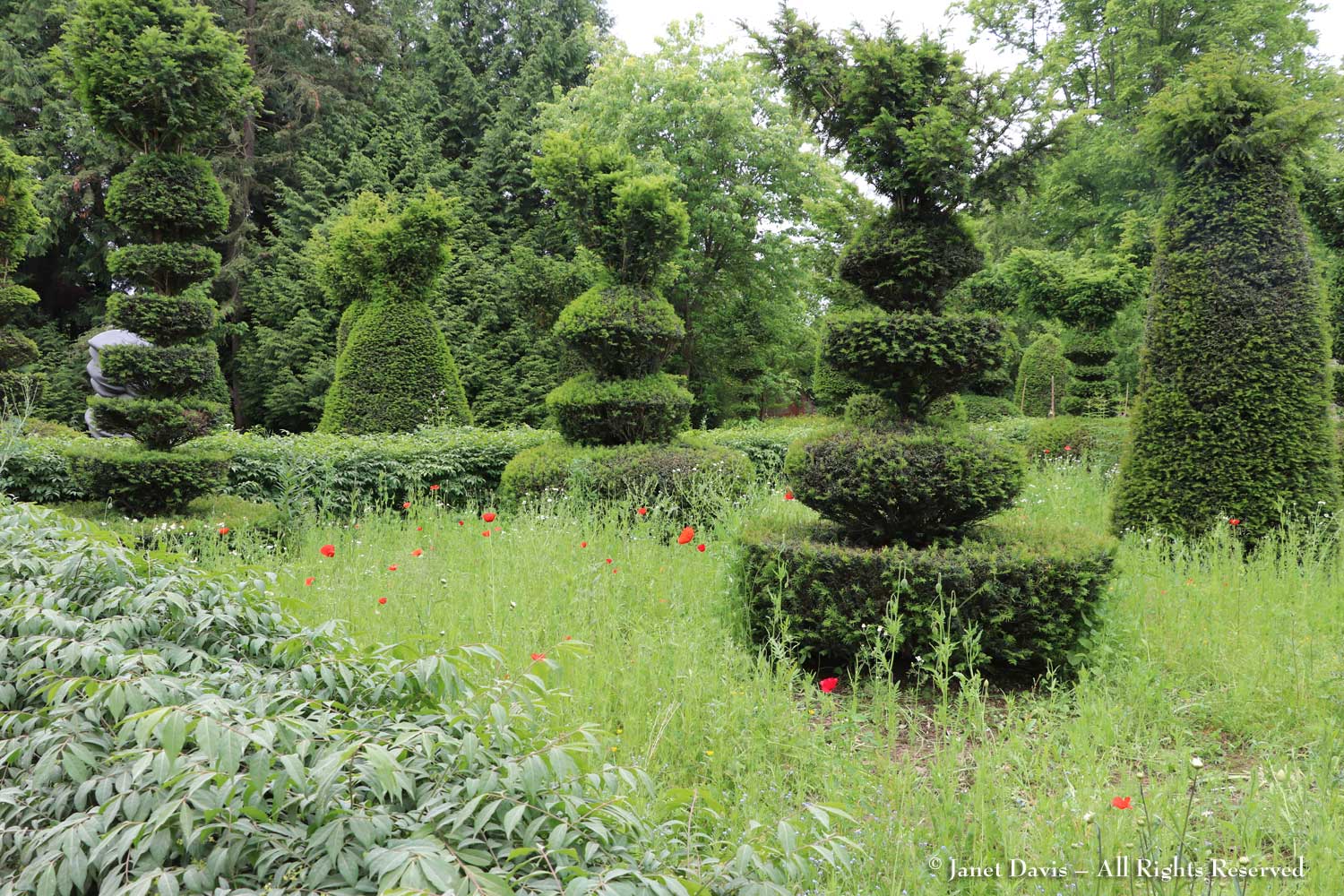
……Mat Reese, who after training in horticulture at college, worked at Wisley, then Kew, before working with the late Christopher Lloyd at Dixter. Mat has become well-known in English gardening circles for his regular features in Gardens Illustrated that explore design principles he’s used at Malverleys. He makes a few introductory remarks, then leads us on our tour.

We begin in the Cloister Garden with its long rill and arching fountains leading from a statue of Neptune under a double allée of Japanese cherries.
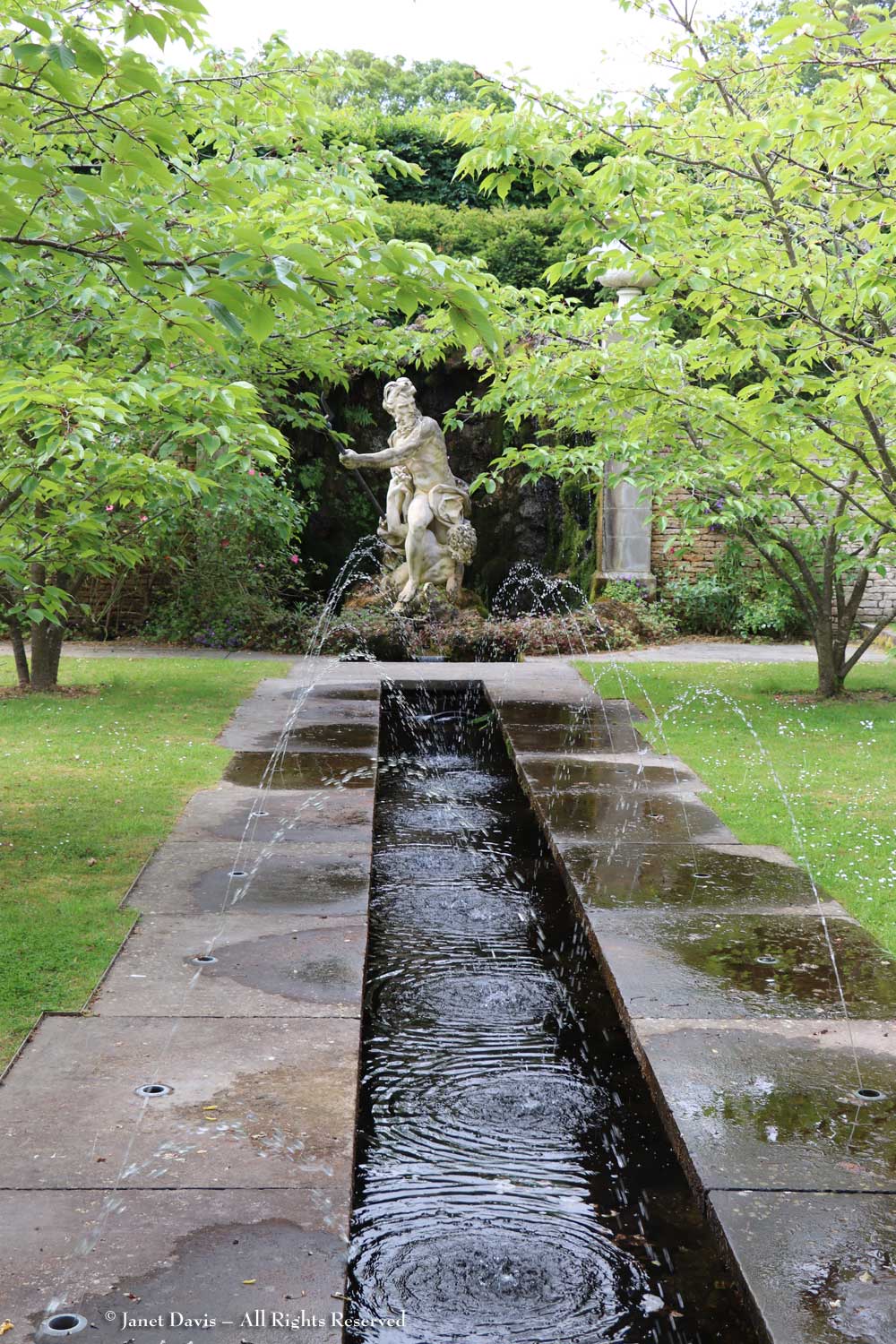
The walls of the Cloister Garden are layered Cotswold stone topped with curved York stone slabs and adorned here and there with red valerian (Centranthus ruber). On our visit, the beautiful climbing rose ‘Meg’ was in full bloom.
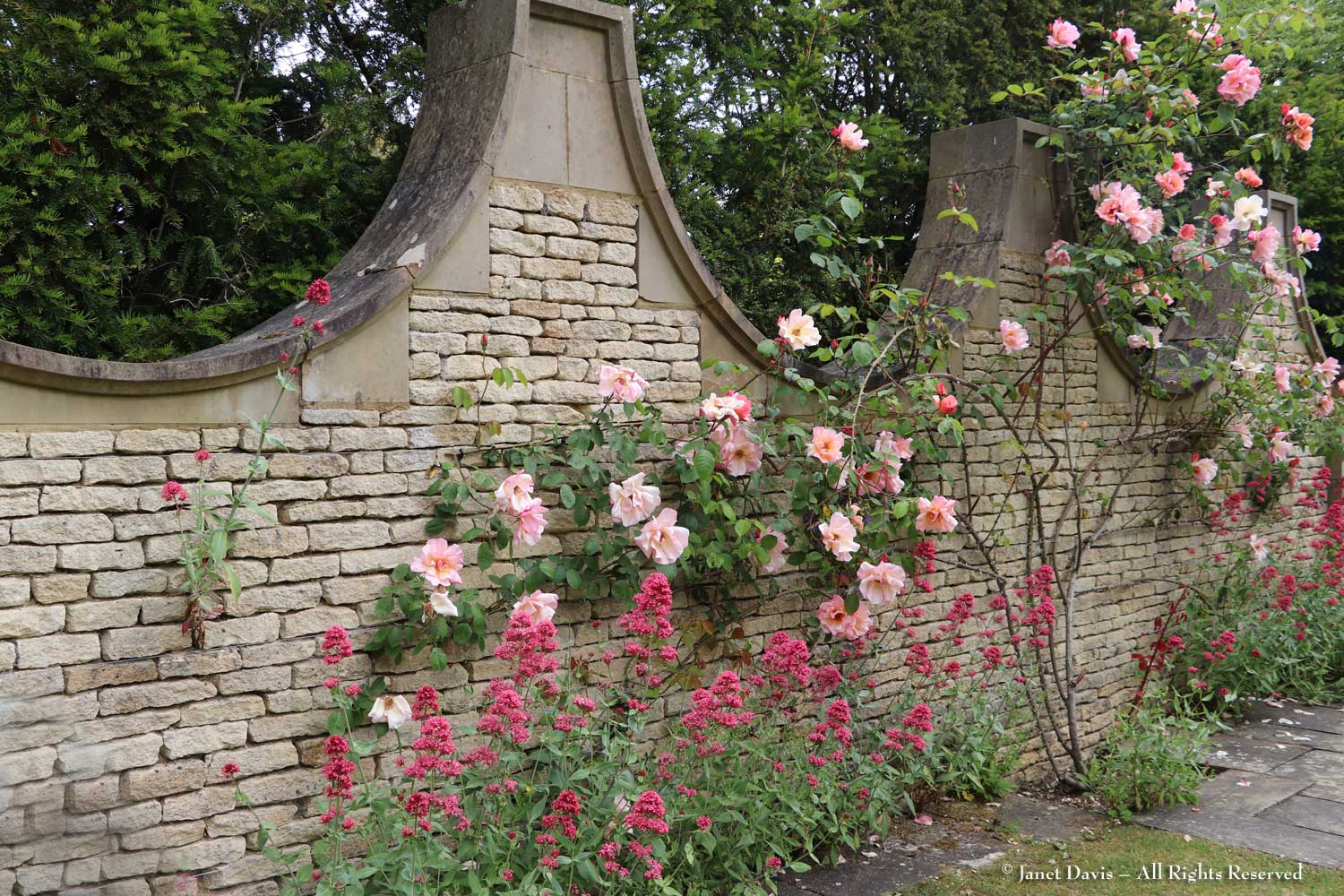
‘Meg’ is a repeat-flowering, fragrant climber introduced in 1954 and still winning plaudits.
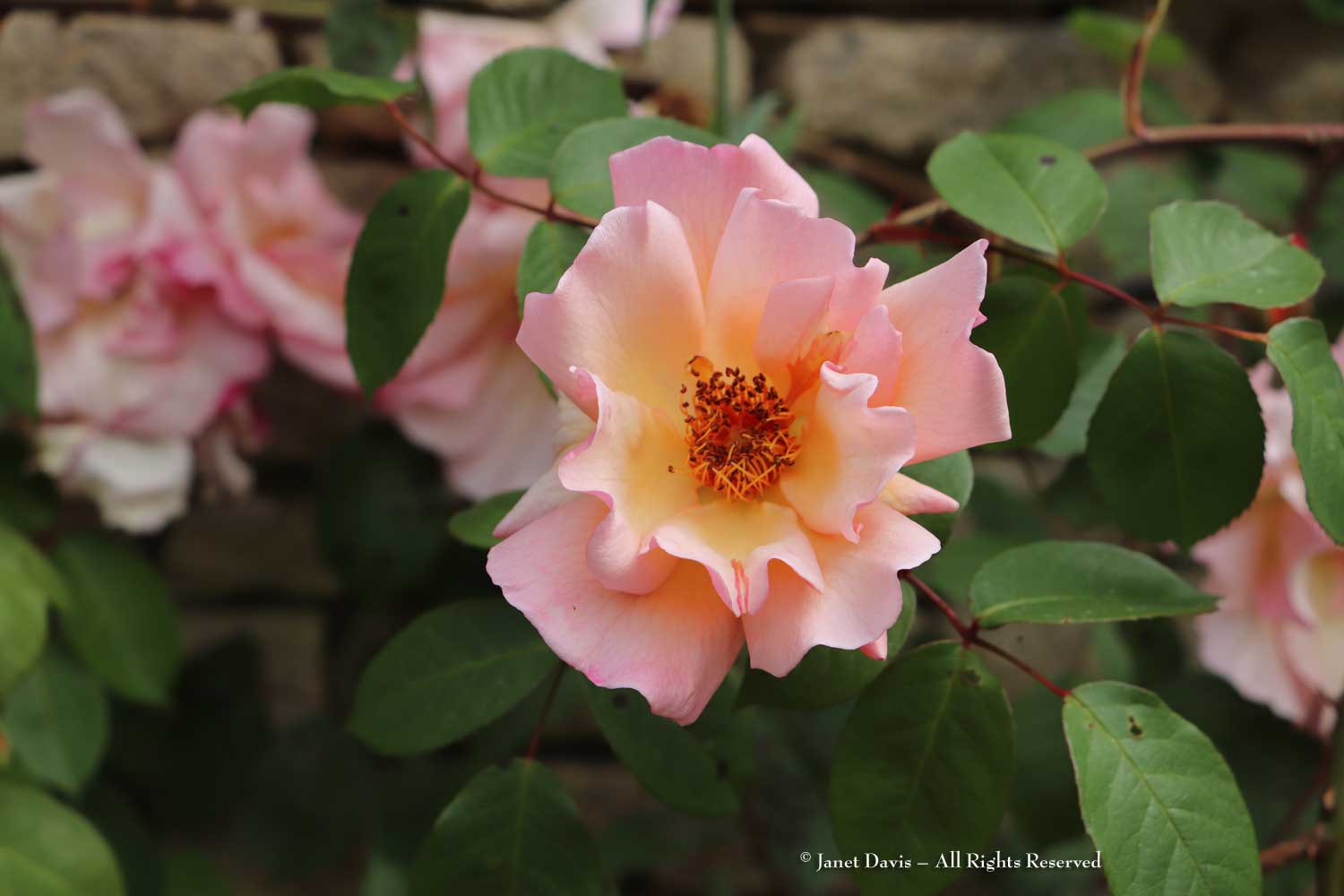
One of the notable features at Malverleys is that the gardens almost always frame the view from one garden into another . Here we see the neighbouring Hot Garden from the Cloister….
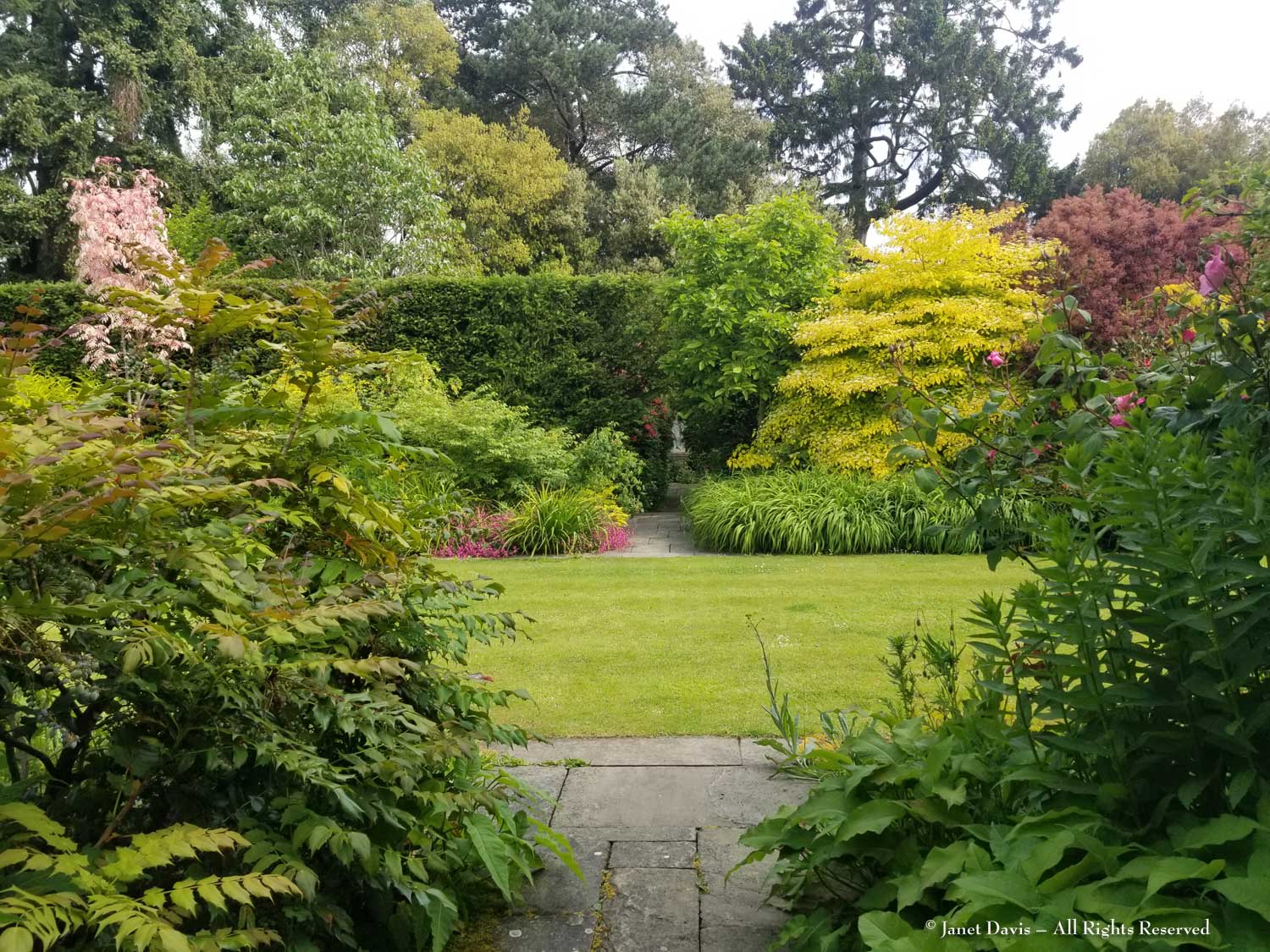
…… and the perfect frame of the statuary in the Cloister looking back from the Hot Garden.
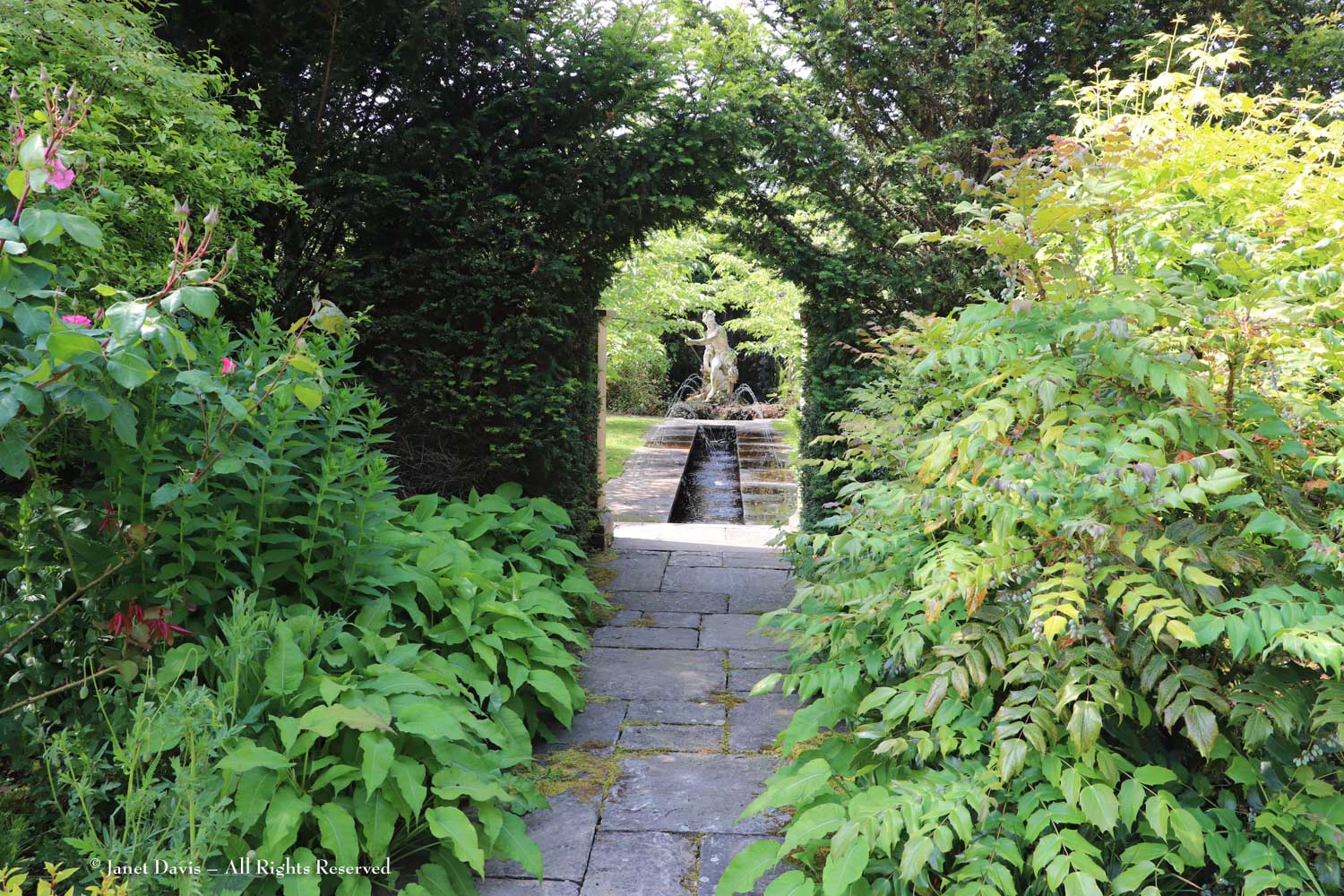
Note the view from the sunken Hot Garden to the ornate chicken house/dovecote across the way. Though this garden was going through what the English call “the June gap” between the bulbs and early perennials of spring and the fulsome bloom of midsummer, it features a host of vibrantly-coloured trees, shrubs and herbaceous plants. The shrub rose at left, below,
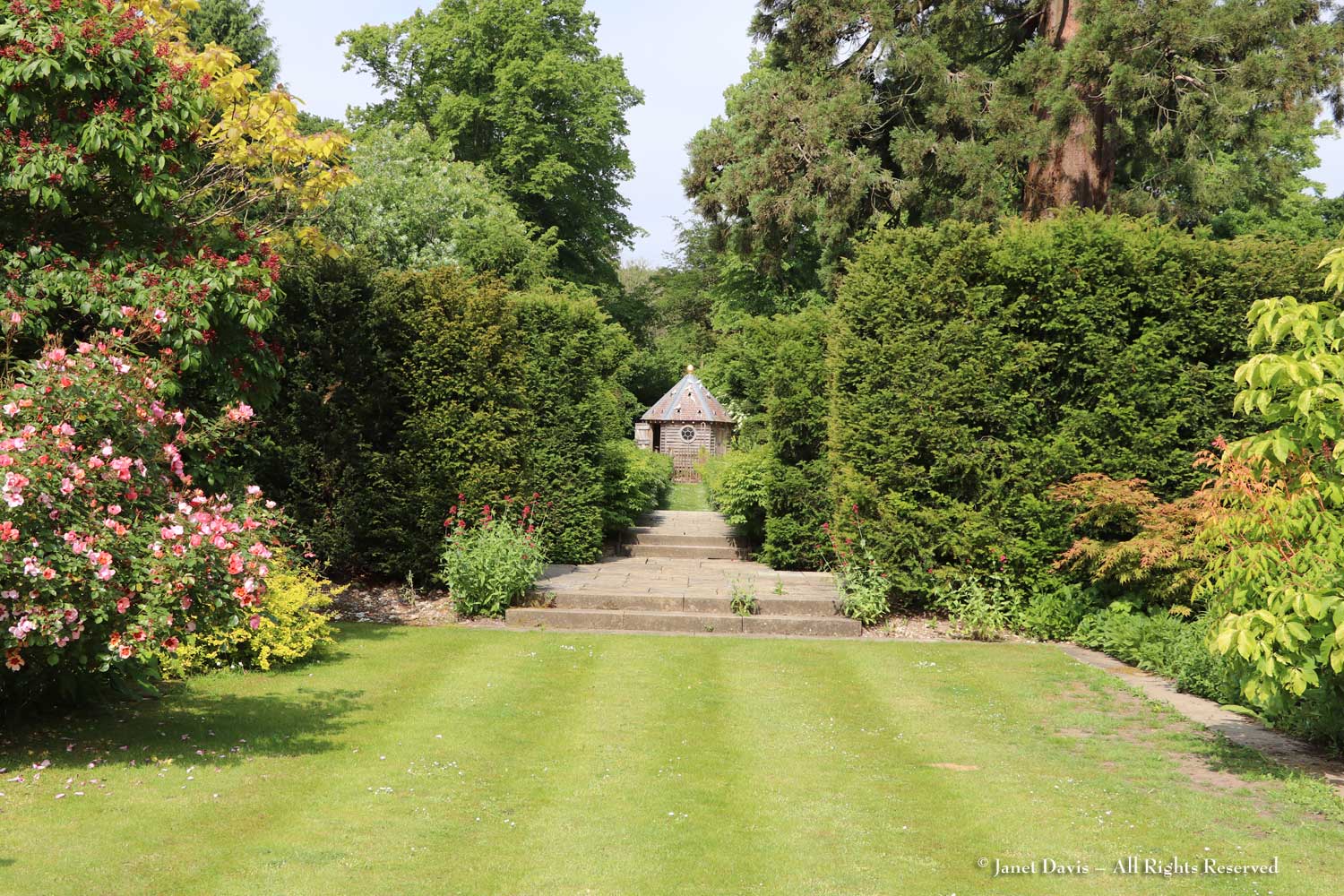
…. is a dark-eyed cultivar called ‘For Your Eyes Only’, part of a trend in rose hybridization to use Rosa persica, which was once classified as Hulthemia persica but has now joined the Rosa genus.
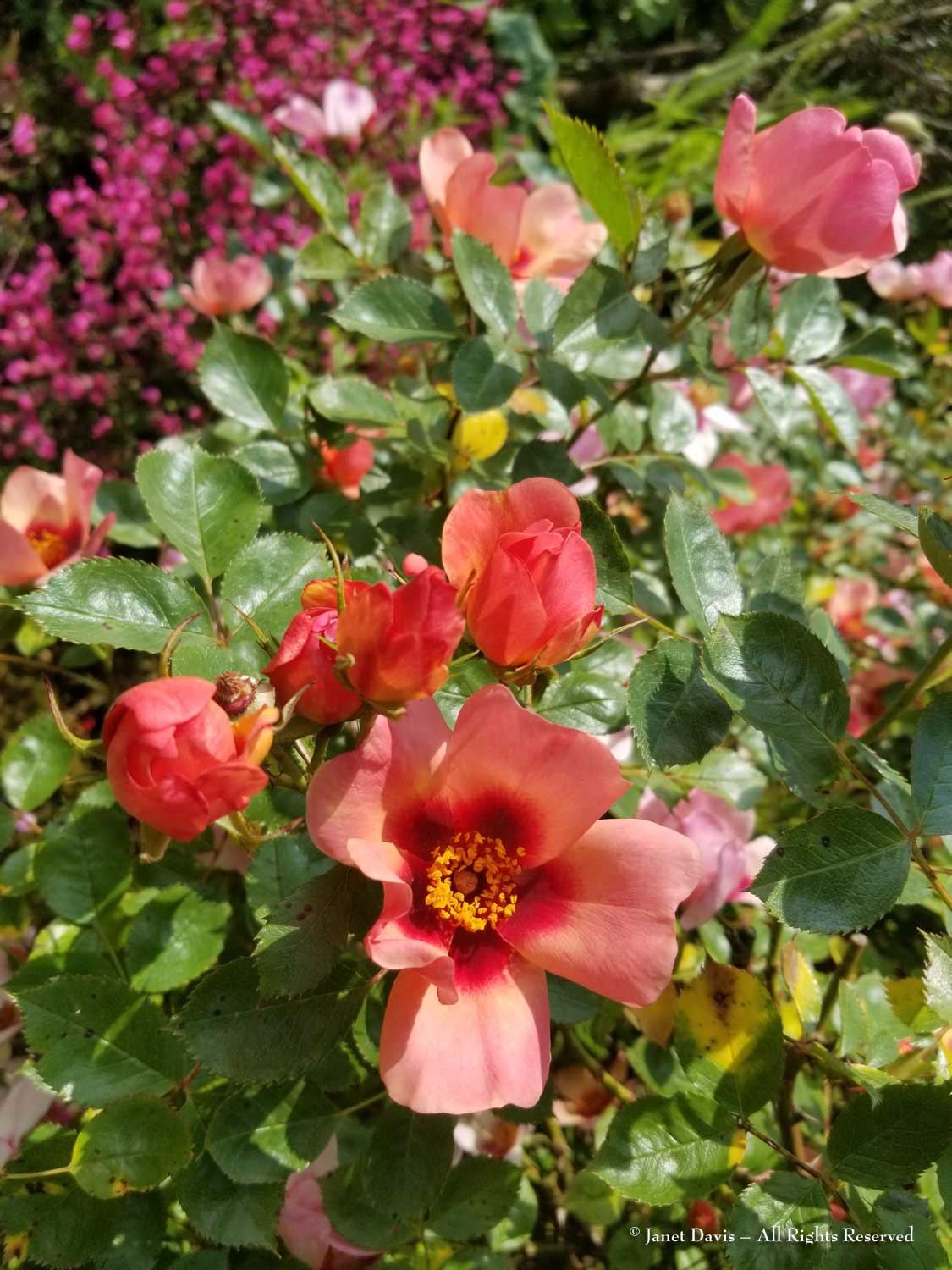
The Hot Garden features strong colours of red, orange, pink and yellow with foliage extending from purple to chartreuse-gold. Aquilegia ‘Yellow Star’, Cotinus coggygria ‘Royal Purple’ and a lupine I believe is ‘Beefeater’.
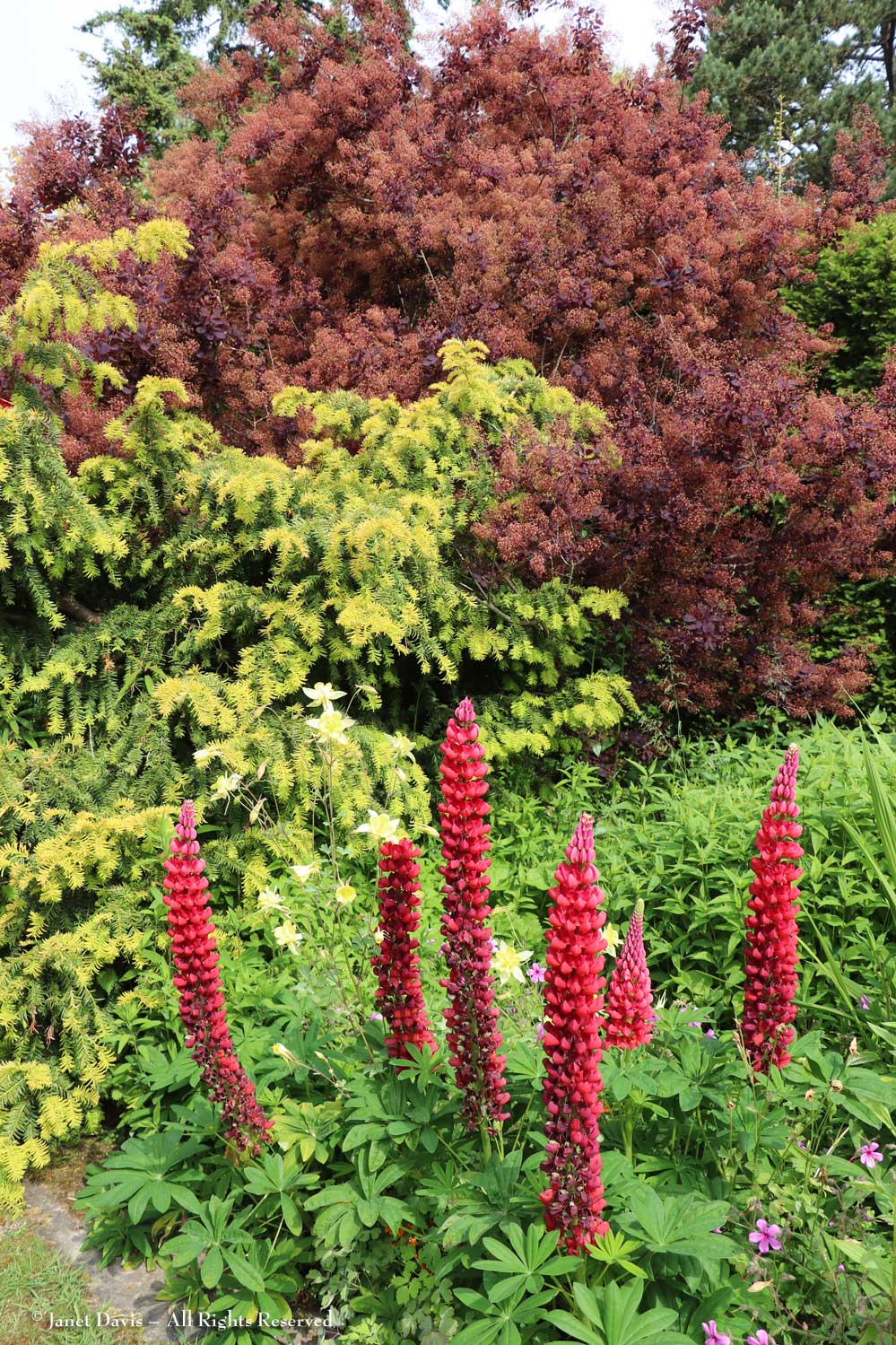
Special plants are used here and in all the gardens. Below is Toona sinensis ‘Flamingo’ with its pink spring foliage that turns yellow before becoming green in summer.
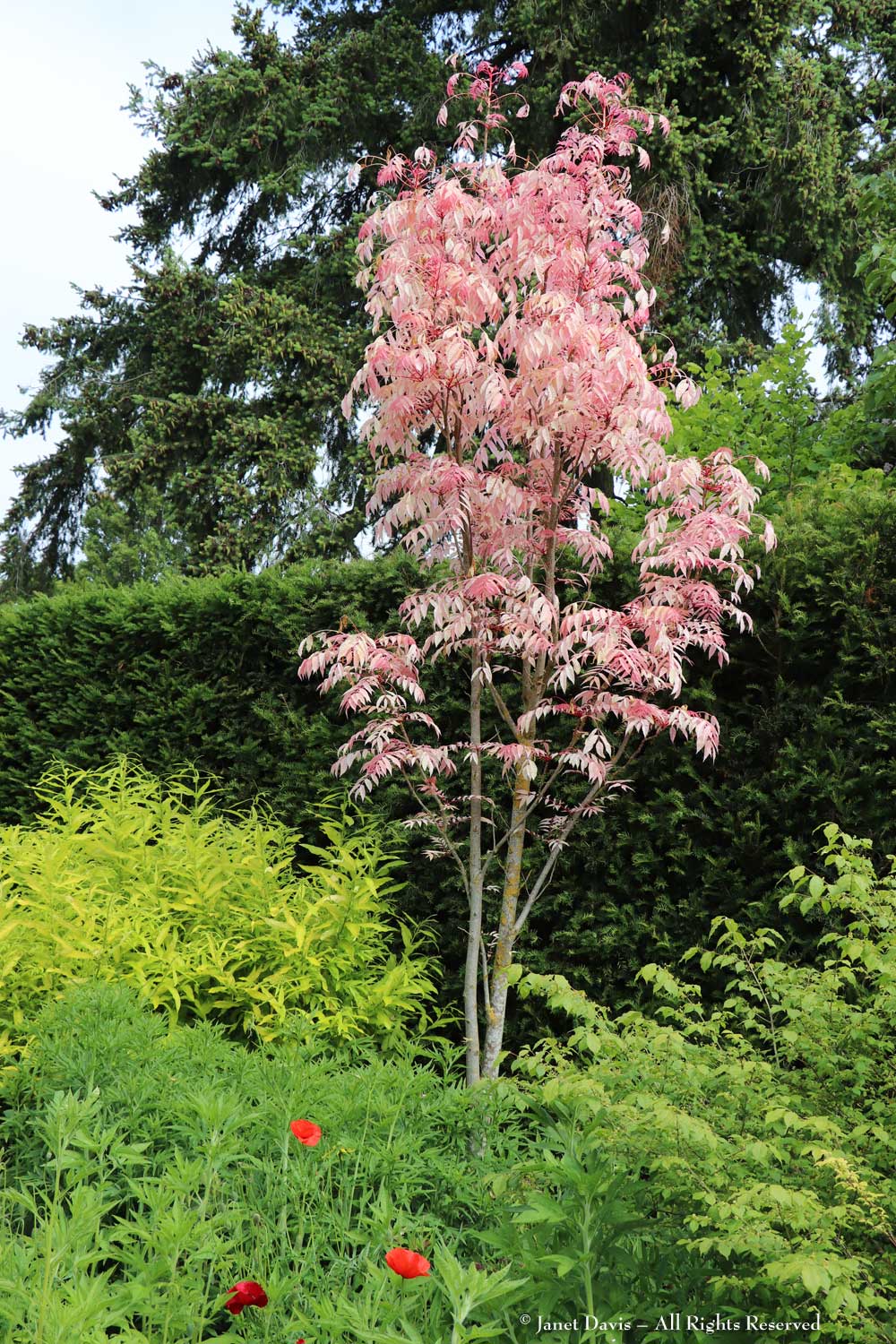
I’m a great fan of lime and chartreuse foliage to liven the garden, and Cornus controversa ‘Aurea’, below, with its layered branching is one of the finest large shrubs.
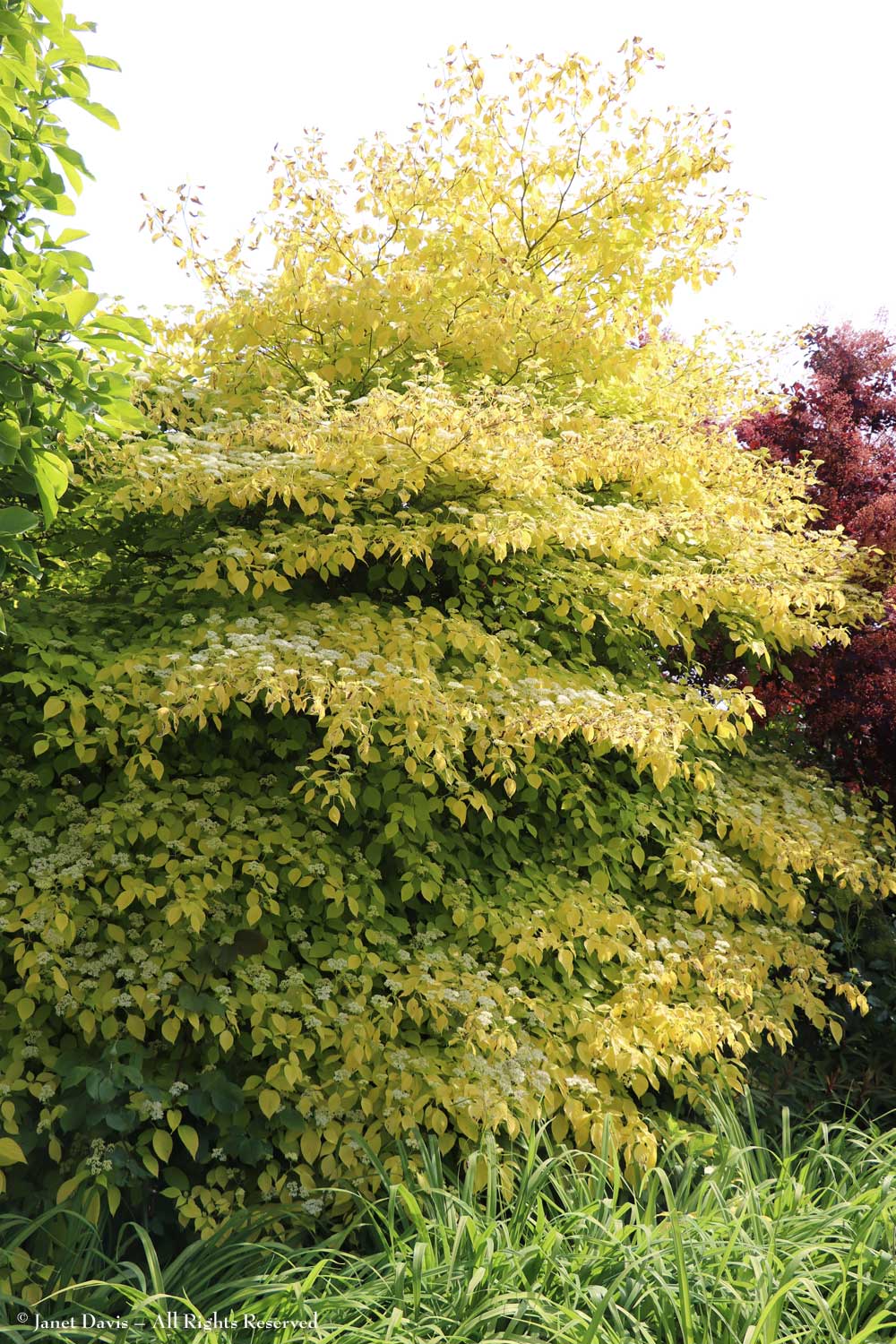
At a different scale, but also bearing delightful gold leaves is the golden ghost bramble, Rubus cockburnianus ‘Goldenvale’.
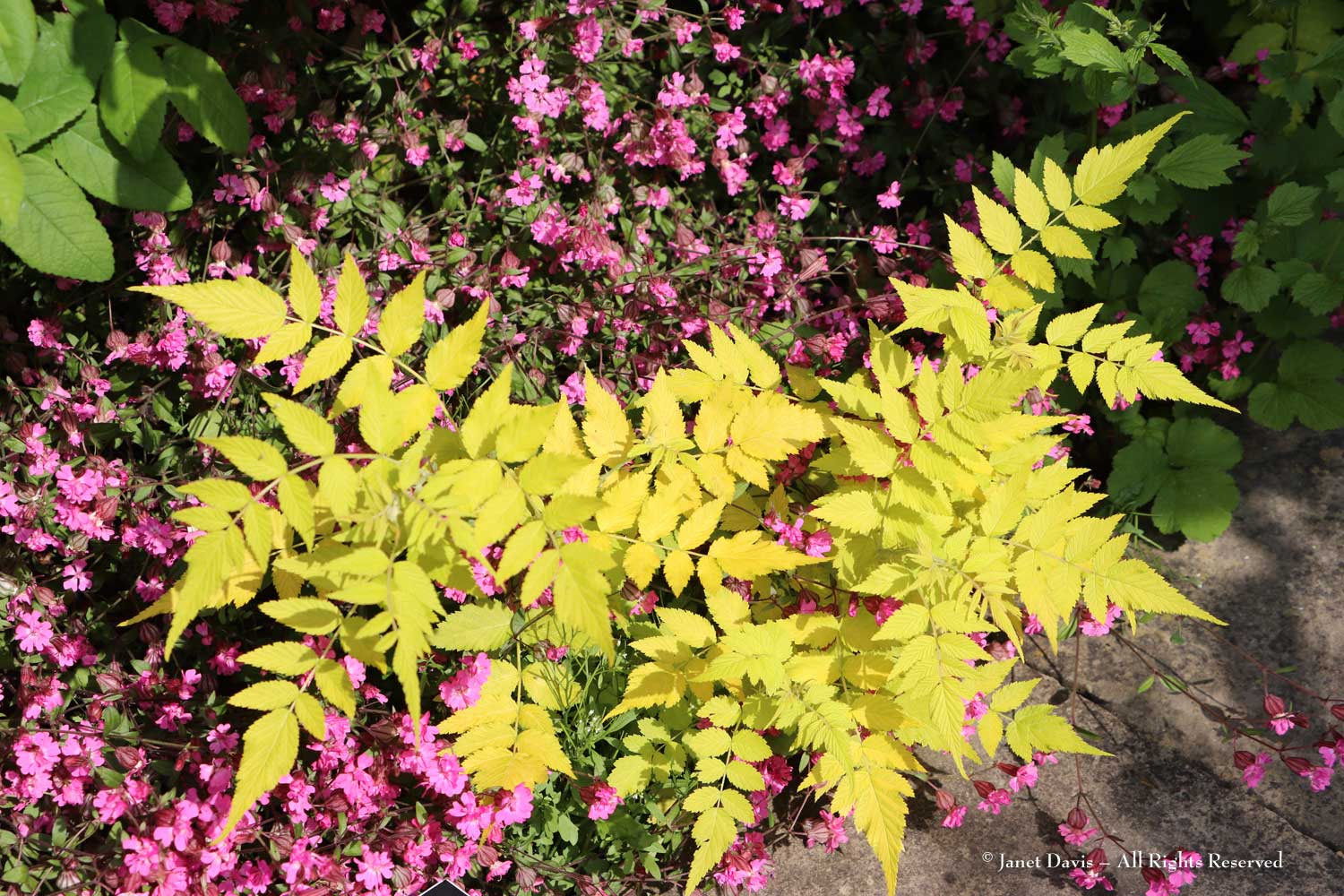
The view, below, at the entrance into the Pond Garden from the Hot Garden is one of my favourite images from my stay in England. The statue is framed by Magnolia ‘Susan’ and the cascading flowers of Wisteria x valderi ‘Burford’. To the right are the yellow umbel flowers of giant fennel, Ferula communis and at lower right, Phlomis fruticosa. The wisteria is a hybrid of W. brachybotrys x W. floribunda, by wisteria expert James Compton, formerly head gardener at Chelsea Physic Garden.
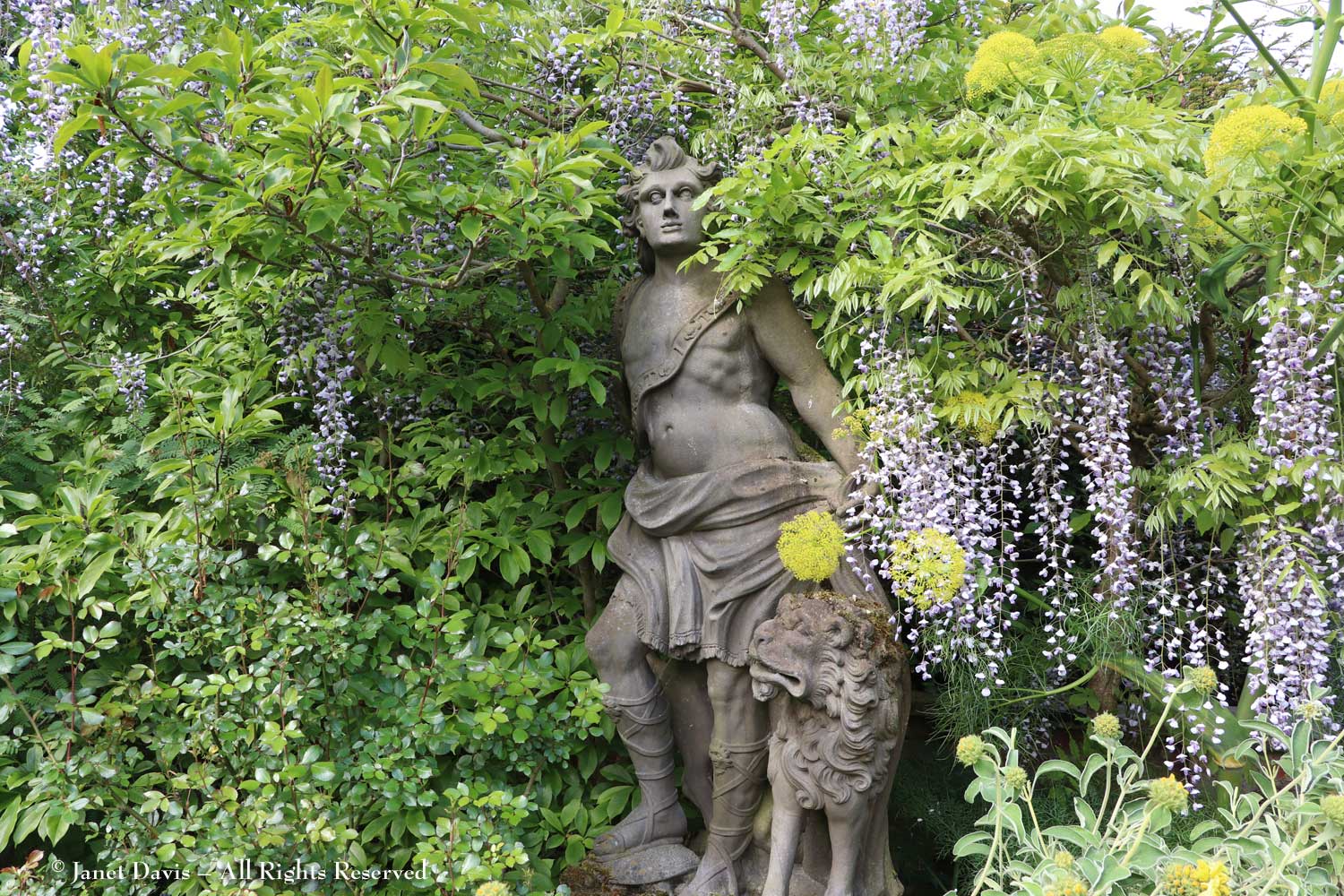
Though the pond is a formal rectangular shape, its plantings are naturalistic, evoking a pond in a wild setting. Once again, you also see the view right through to the chicken house.
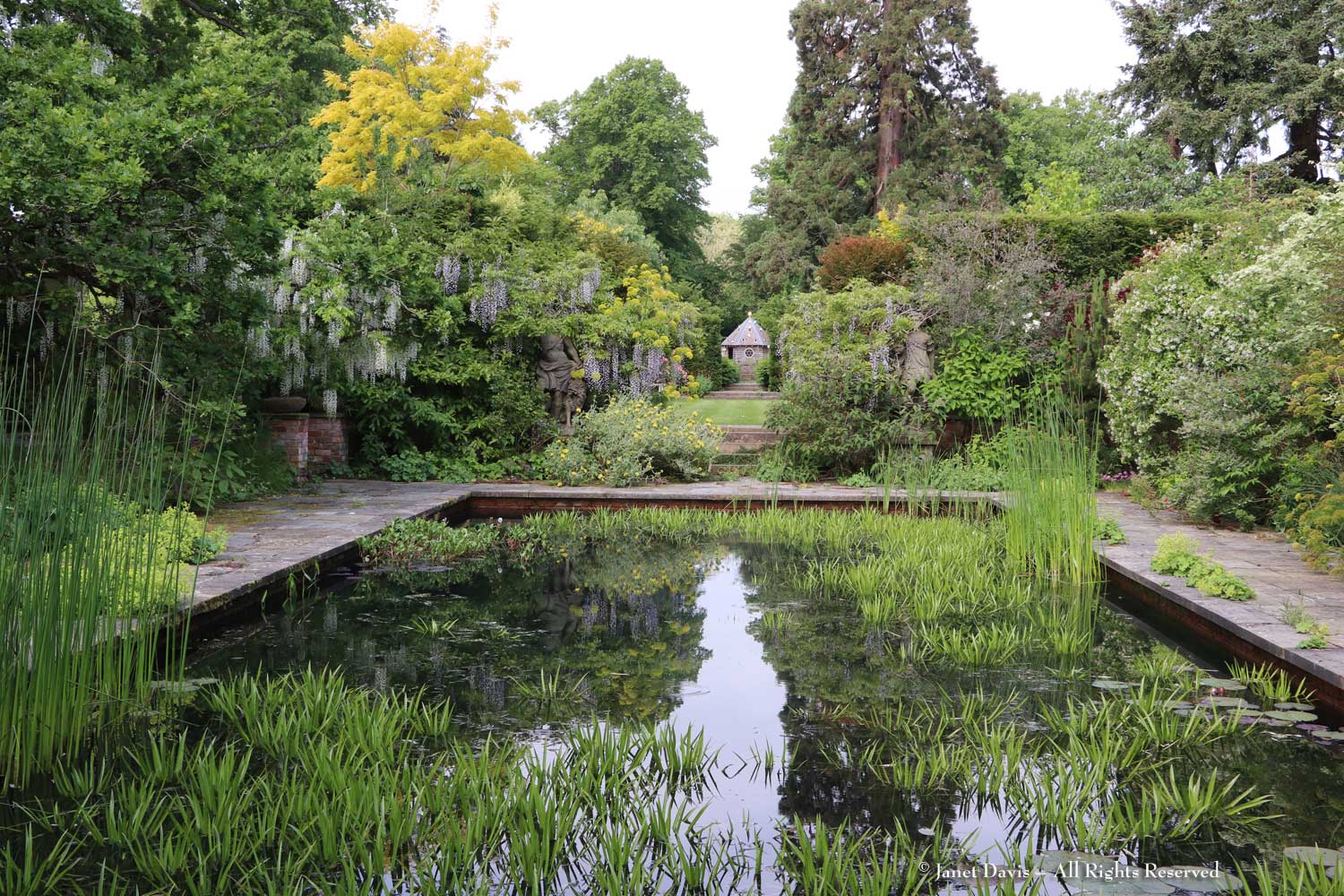
Next up is the Cool Garden with its copper water basin and relaxed planting scheme of blues, lavenders, whites and mauves.
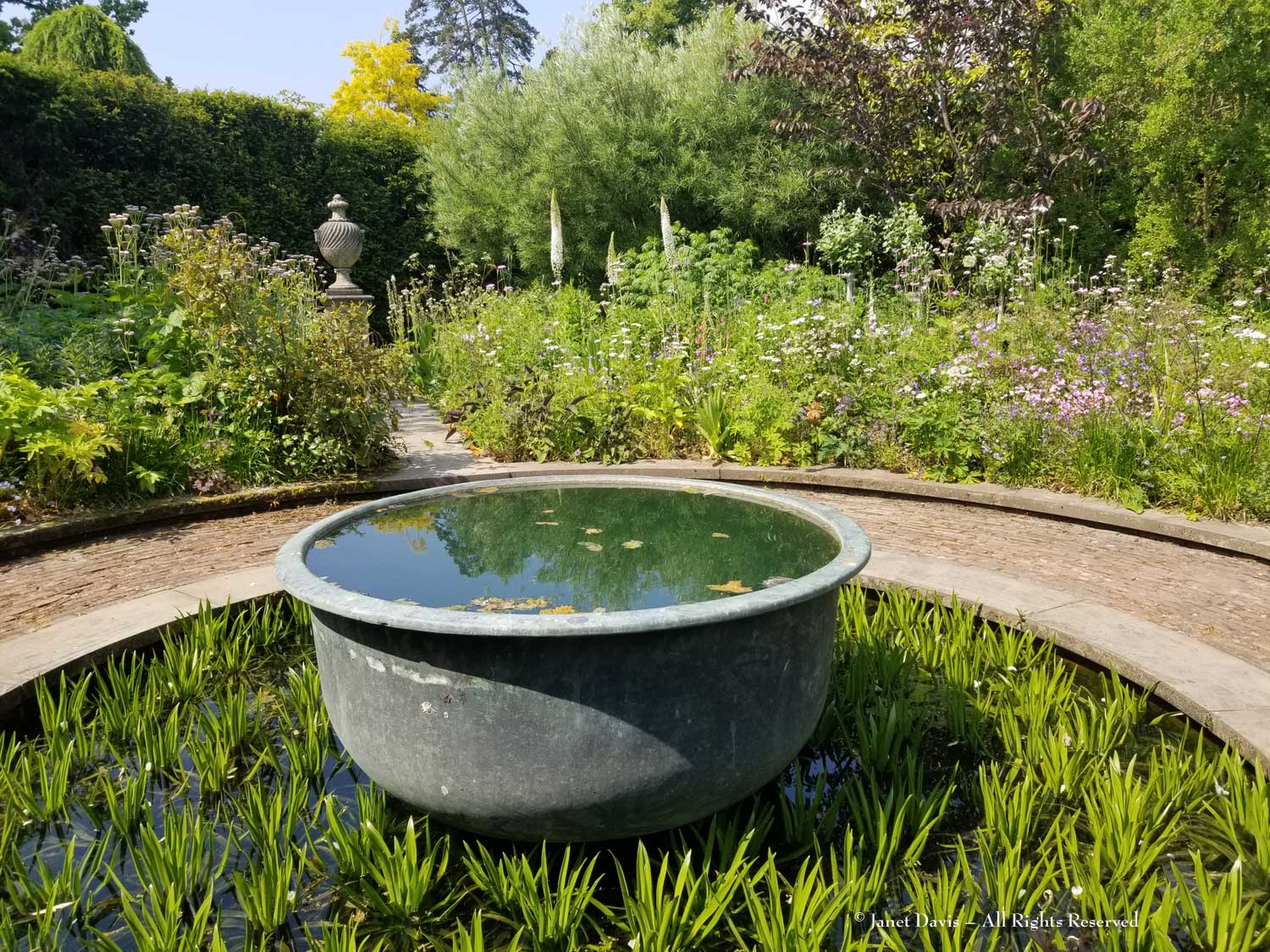
Here the formality of the statuary contrasts with the cottage garden ethos
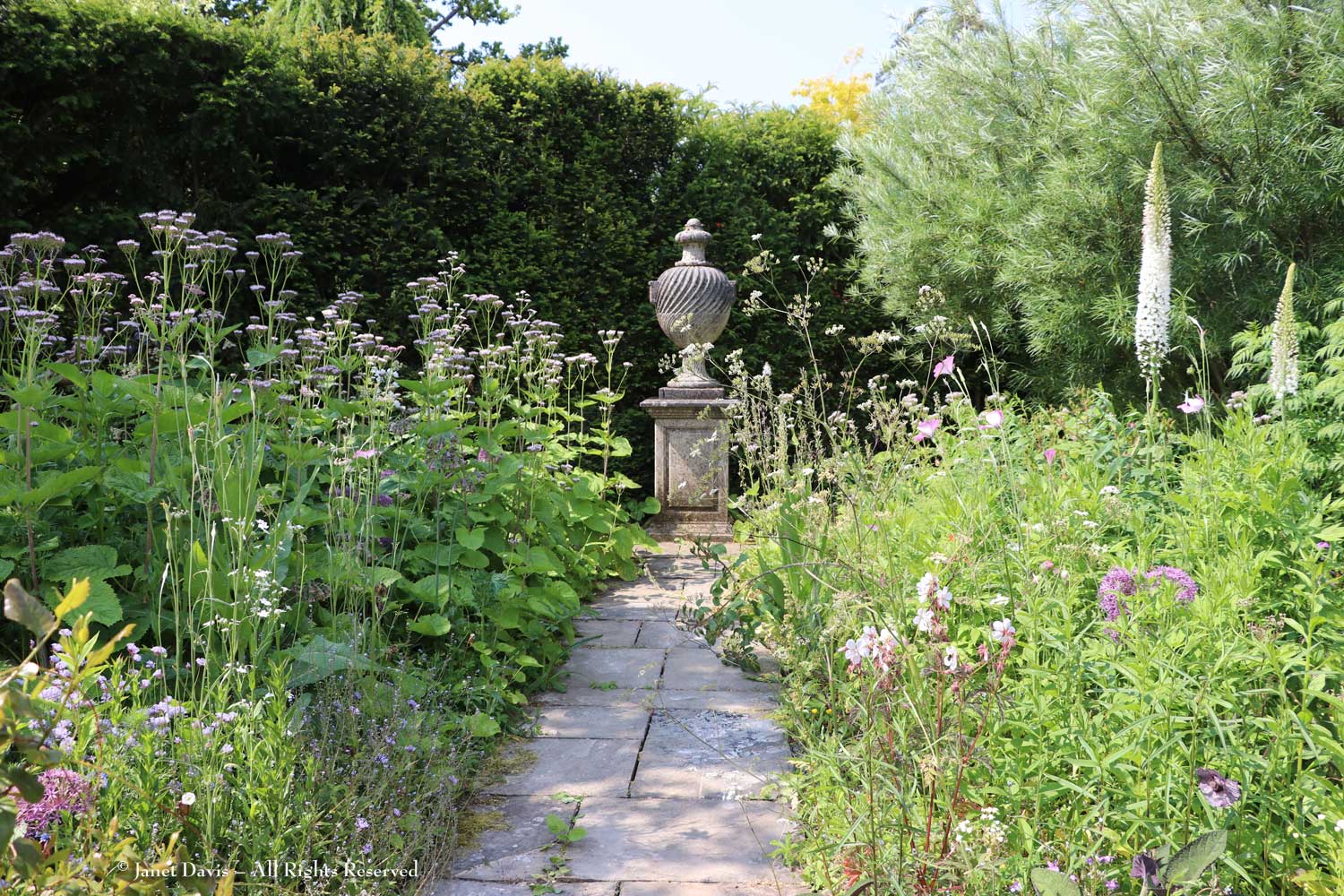
There’s a meadow-like quality to combinations here, like the columbines, blue woodruff and pink chervil.
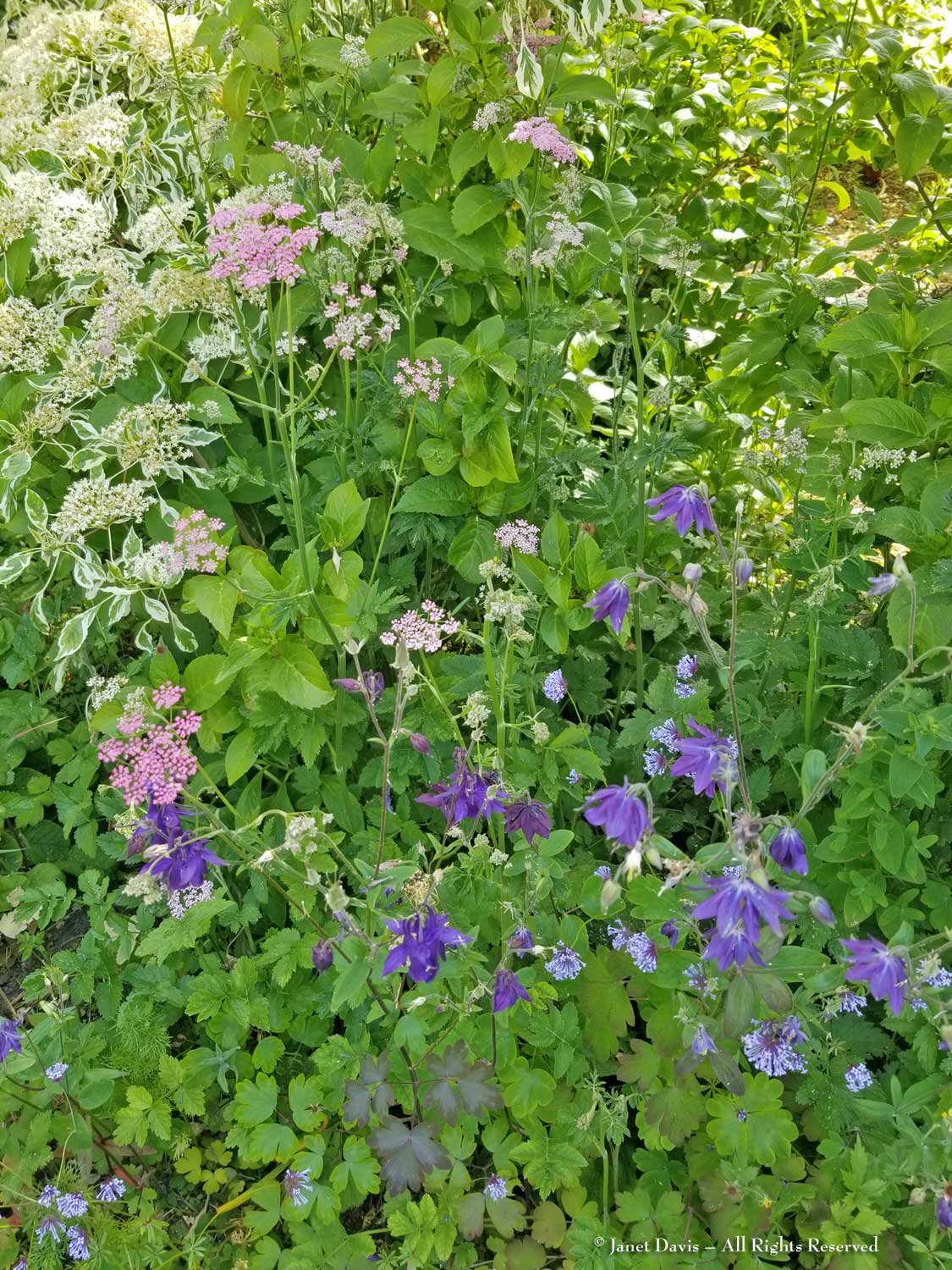
Annuals such as blue woodruff (Asperula orientalis), below, are used throughout Malverleys to lend colour thorughout the season.
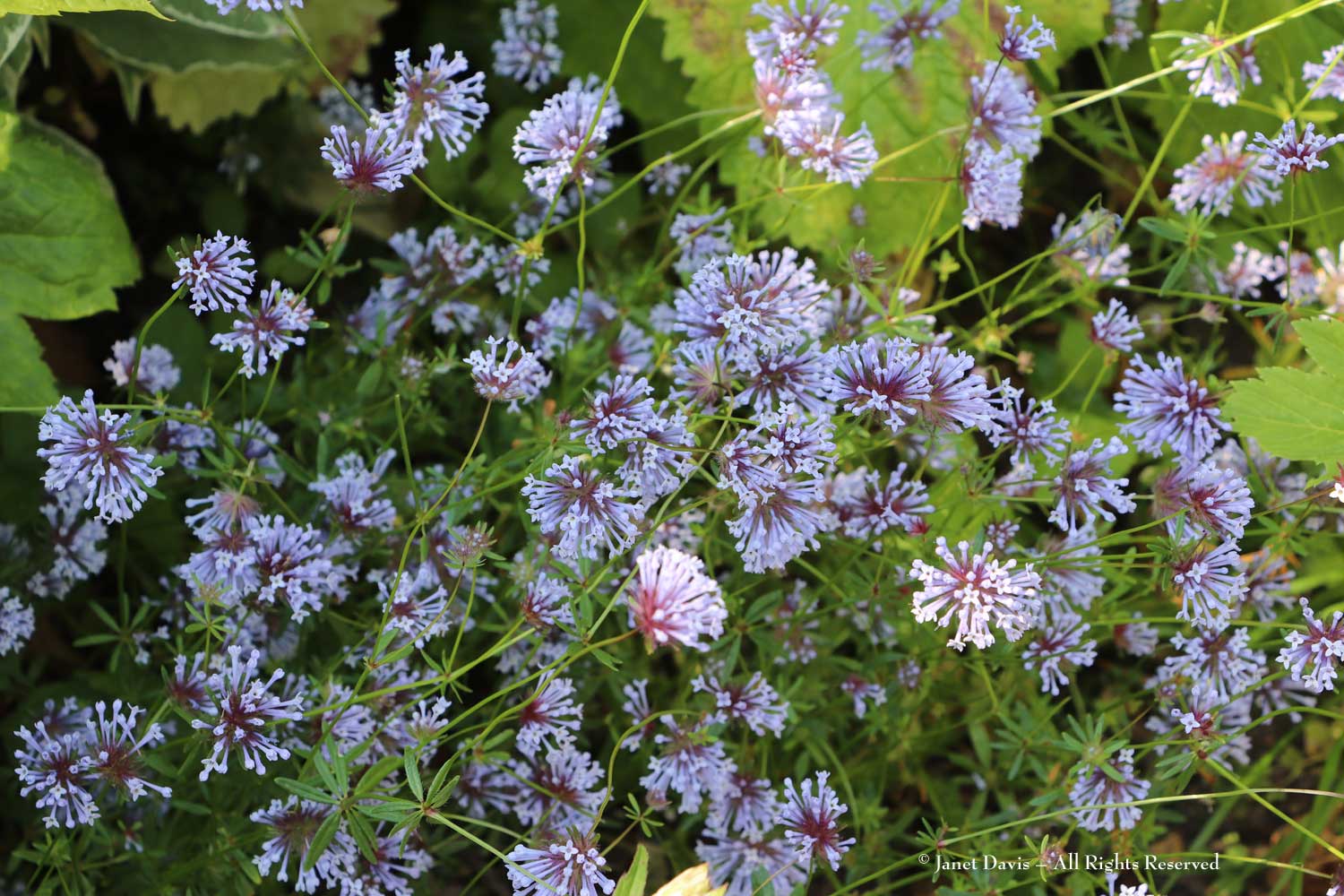
I love the delicate pink flowers of hairy chervil (Chaerophyllum hirsutum ‘Roseum’), one of many perennial umbellifers used at Malverleys.
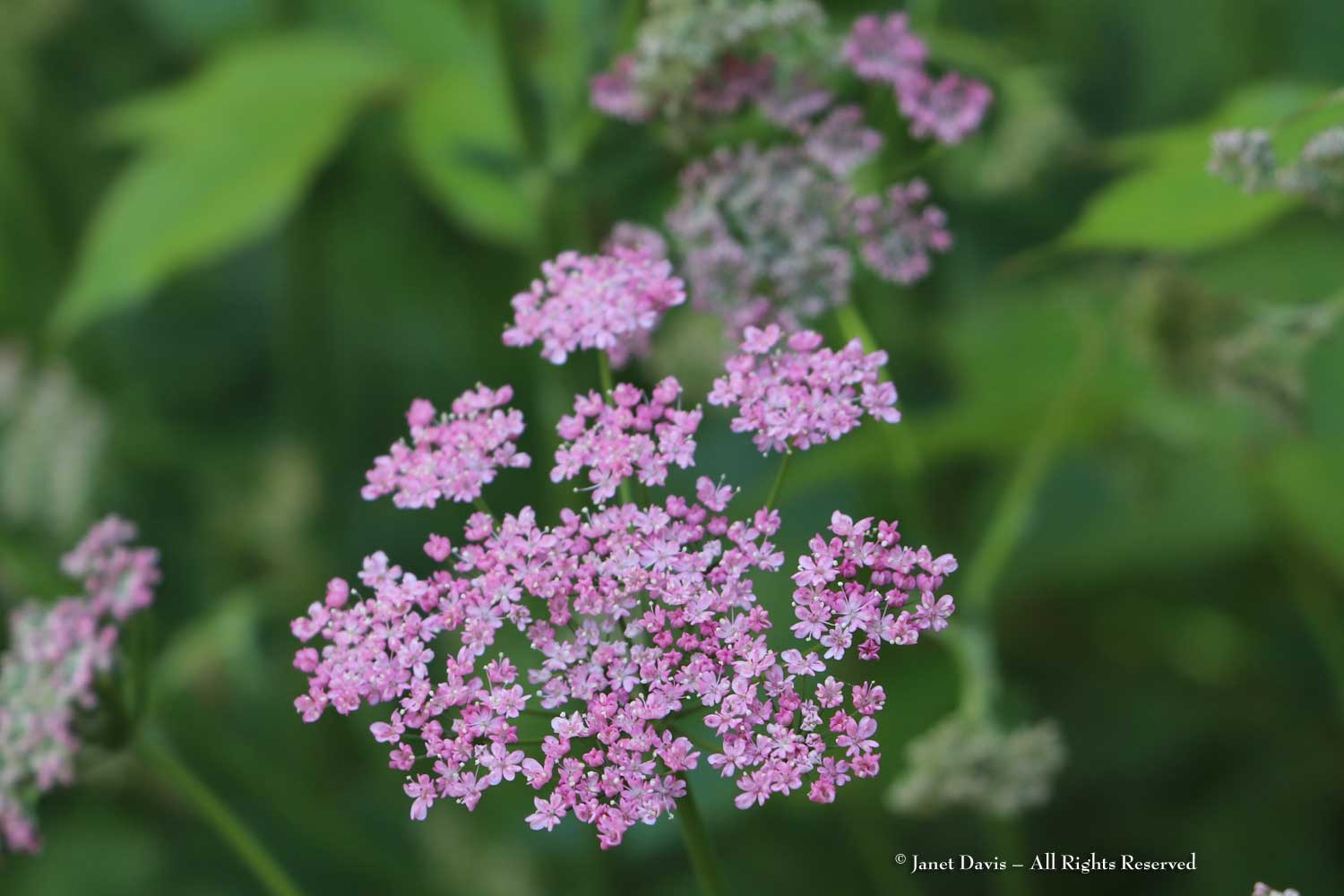
Another annual used extensively by Mat in several gardens is slender corn cockle, Agrostemma gracile ‘Pink’, native to Greece. Below we see it with creeping navelwort, Omphalodes verna.
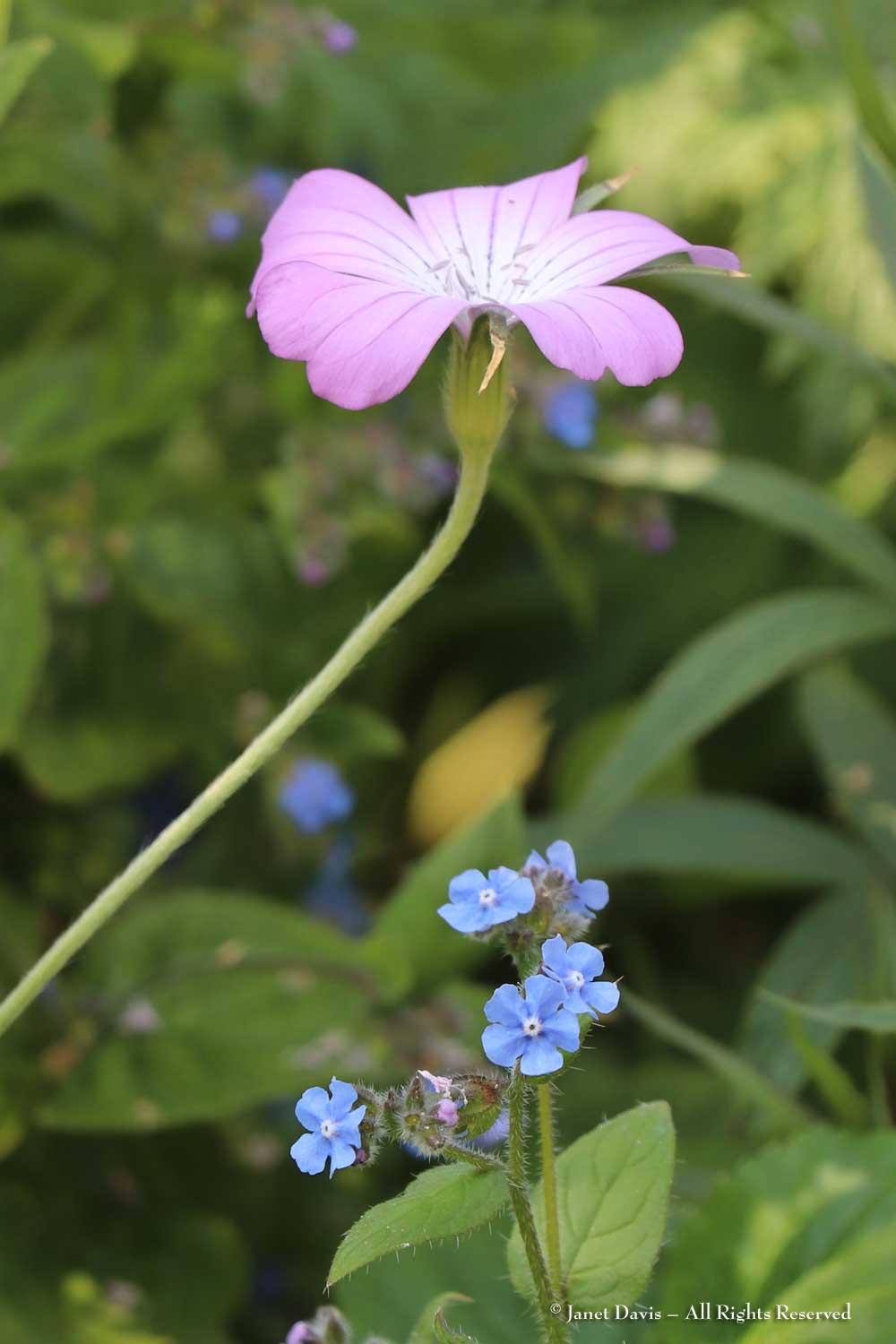
The most intensively-gardened part of Malverleys is the area around the 1870s house – a parallel border along the terrace, the East Border separating it from the other gardens and the Wedding Ring Border leading from the entrance, where Mat Reese lost his ring many years ago. Here, a late lilac was in flower, Syringa x josiflexa ‘Bellicent’ bred in 1936 by the renowned Canadian hybridist Isabella Preston.
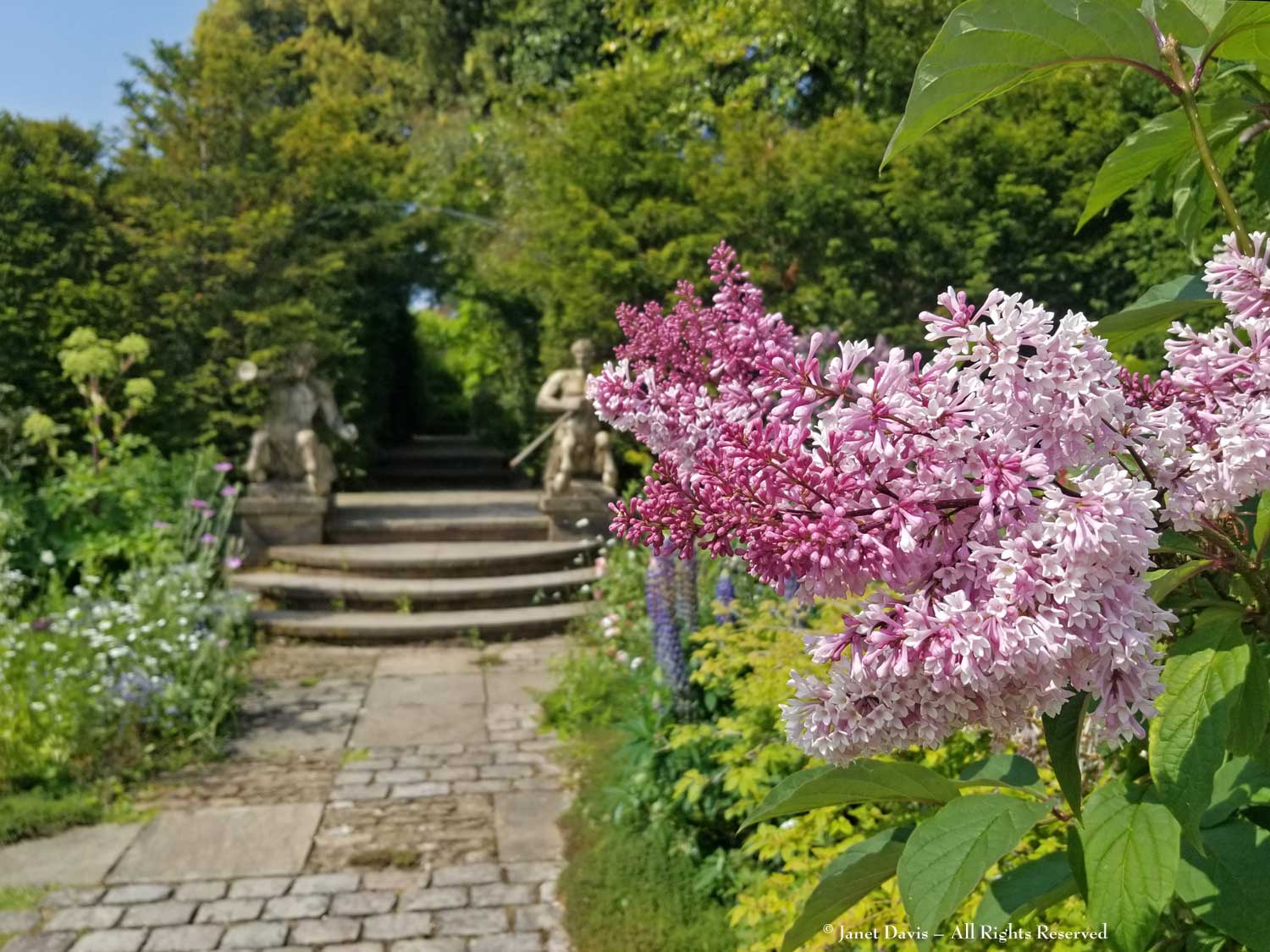
Colours in the house borders are rich and jewel-like, with lots of purple, blue, magenta and red.
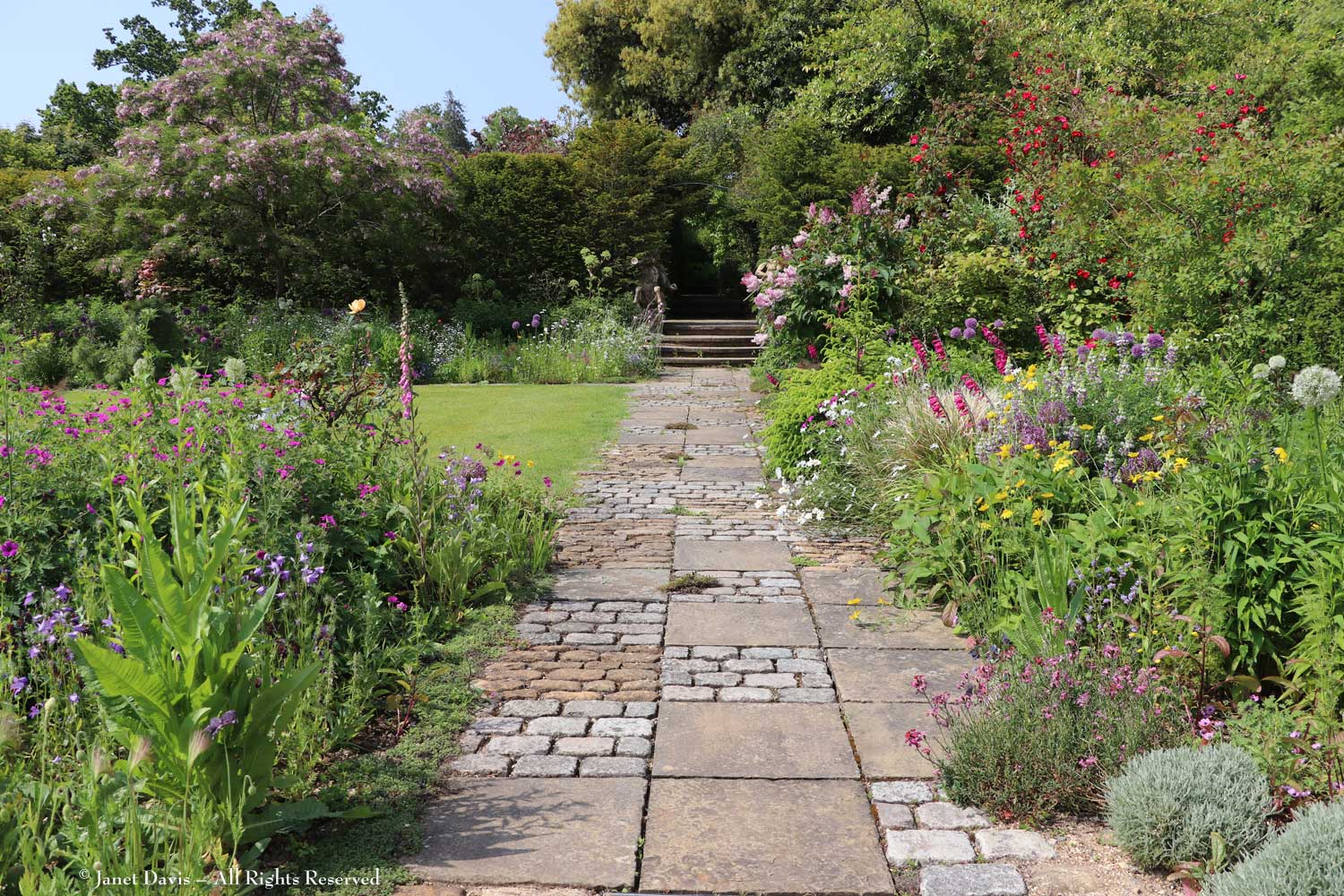
The walls of the 1870 Victorian mansion are cloaked with climbers……
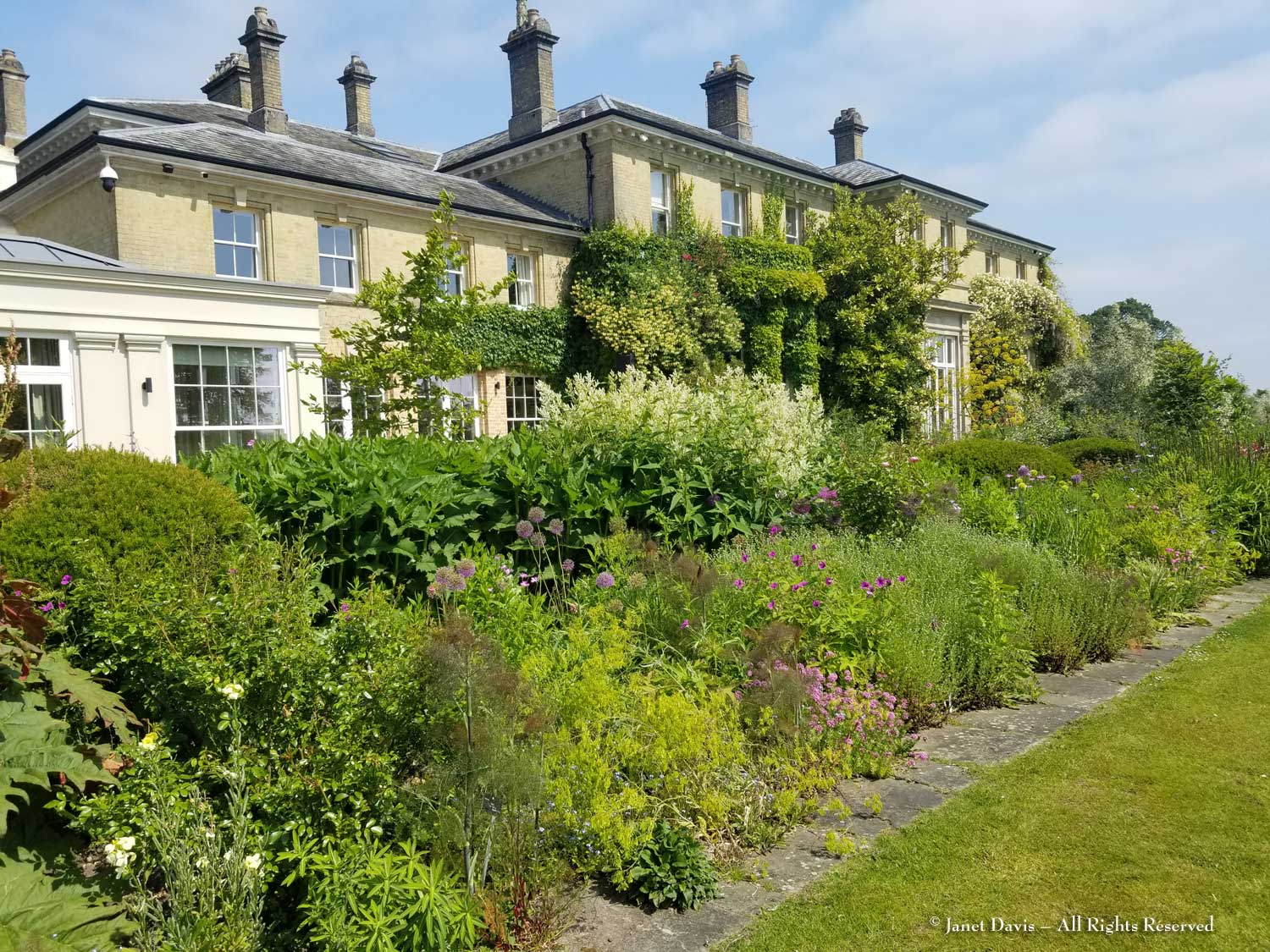
….including Rosa ‘Buff Beauty’ and the yellow form of Lady Banks’ rose, R. banksiae ‘Lutea’. Plants like santolina are allowed to spill across the paving.
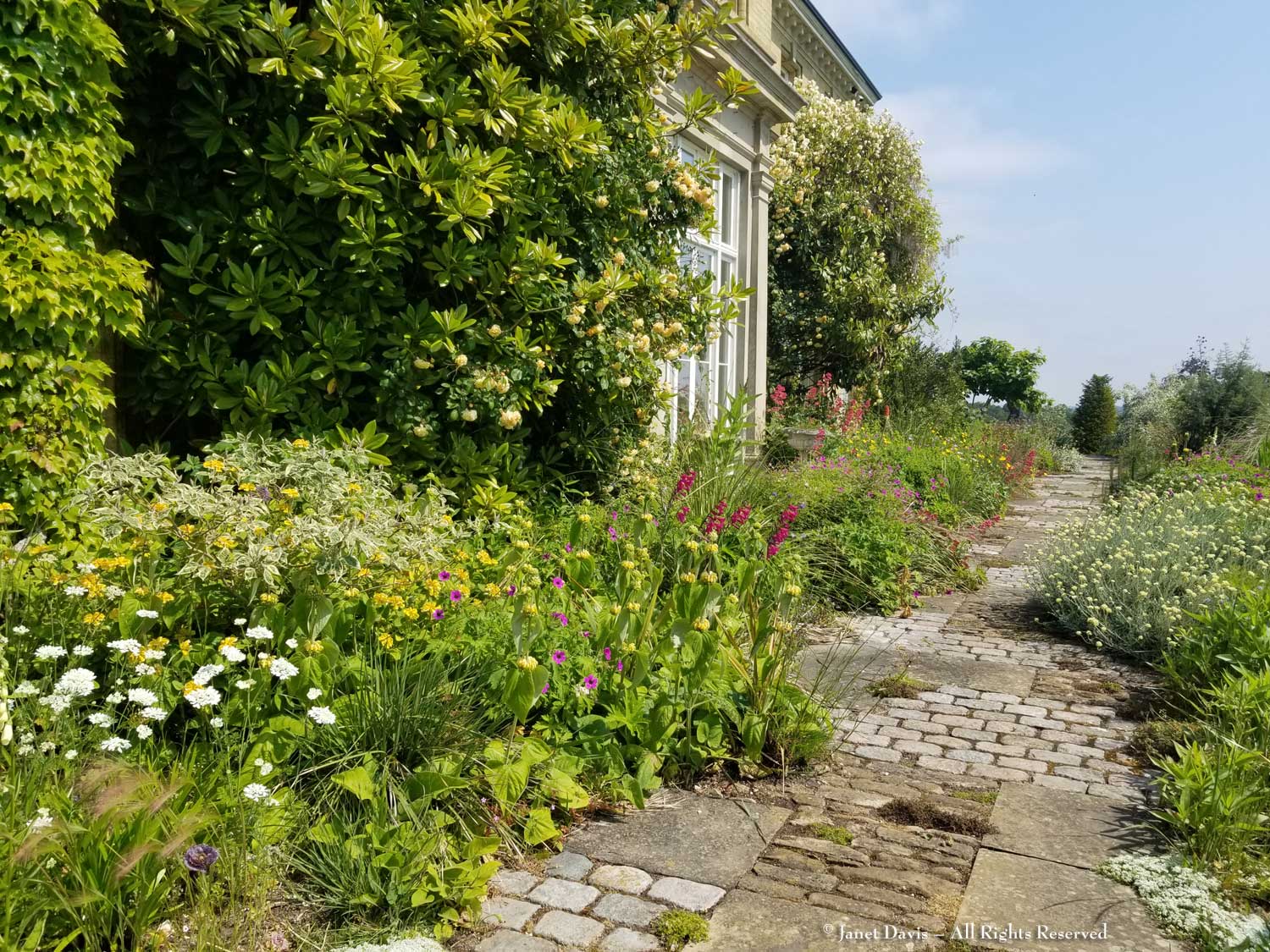
In the Terrace Garden is a single hybrid tea whose interesting pedigree resonated with Mat Reese. For this particular rose, ‘Mrs. Oakley-Fisher’, from 1921, is a cutting that came from a rose at Great Dixter that was in turn grown as a cutting sent by Vita Sackville-West to Christopher Lloyd many decades ago.
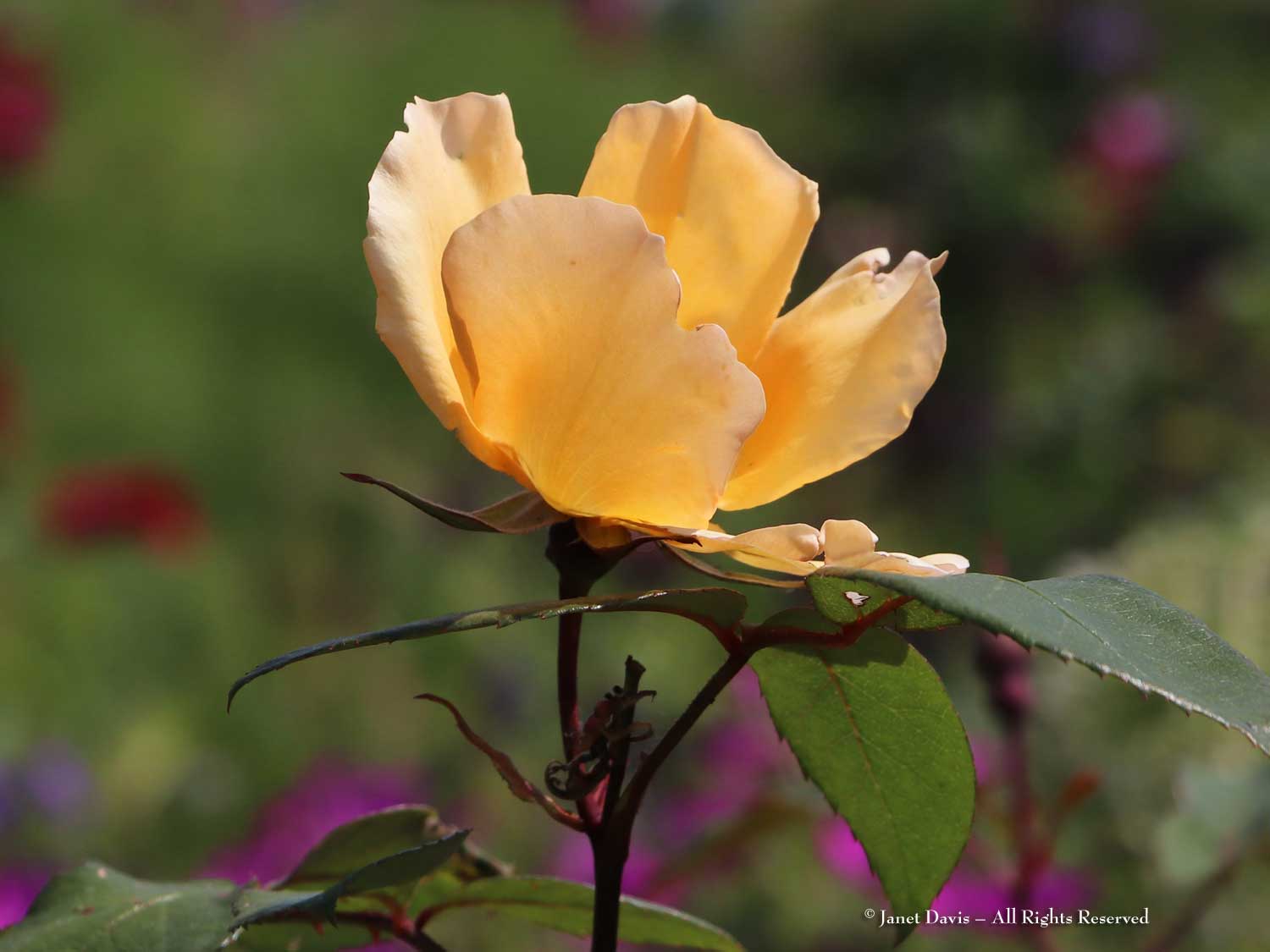
Again, we see the beautiful Lupinus ‘Beefeater’ in the house border, paired with the lilac-purple Californian native lacy phacelia, Phacelia tanacetifolia.
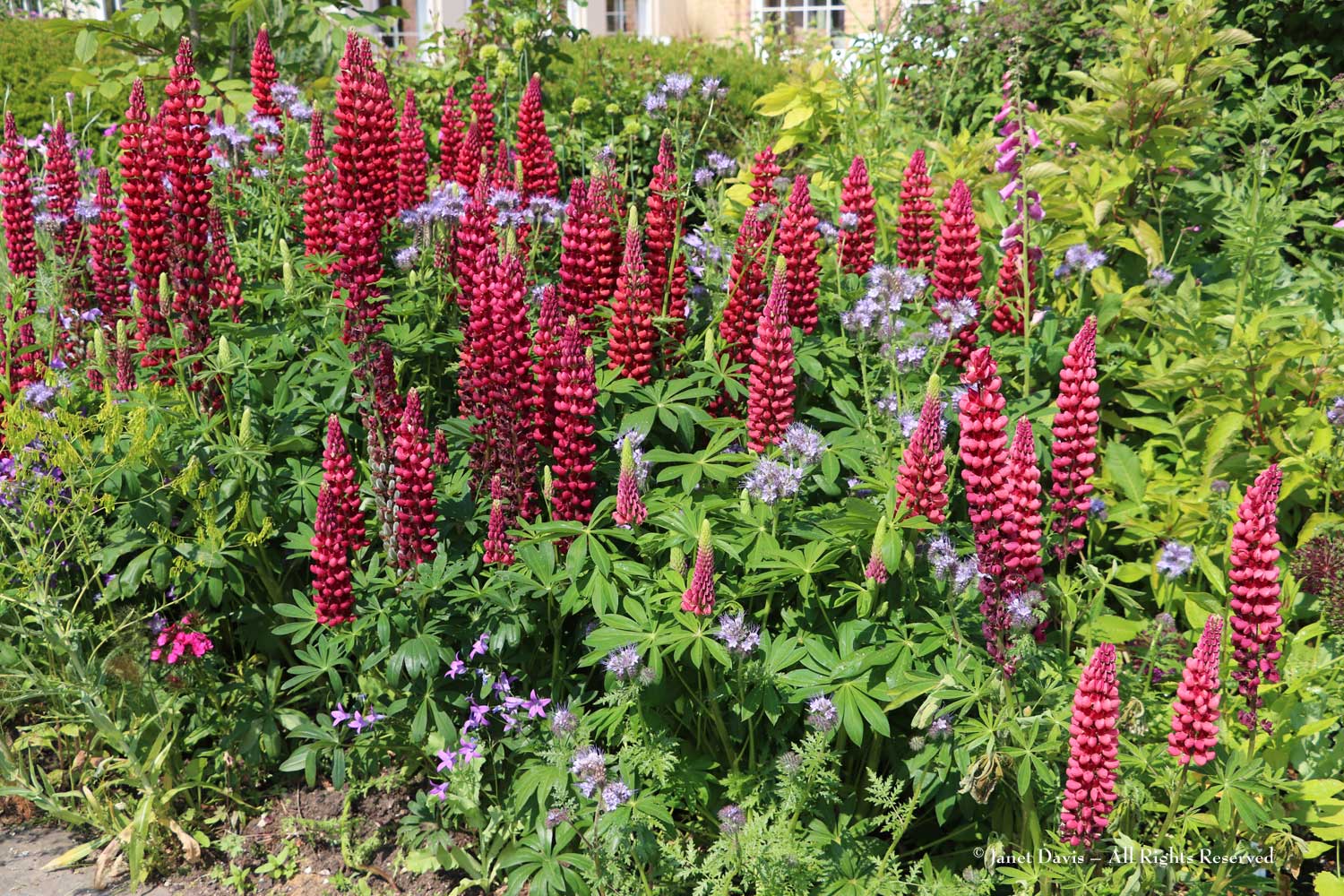
The bright magenta Byzantine gladiolus, G. communis var. byzantinus, plays a starring role in the house border, along with various alliums, perennial geraniums, eryngium, honeywort (Cerinthe major ‘Purpurascens’) and tall mauve corn cockle (Agrostemma gracile ‘Pink’).
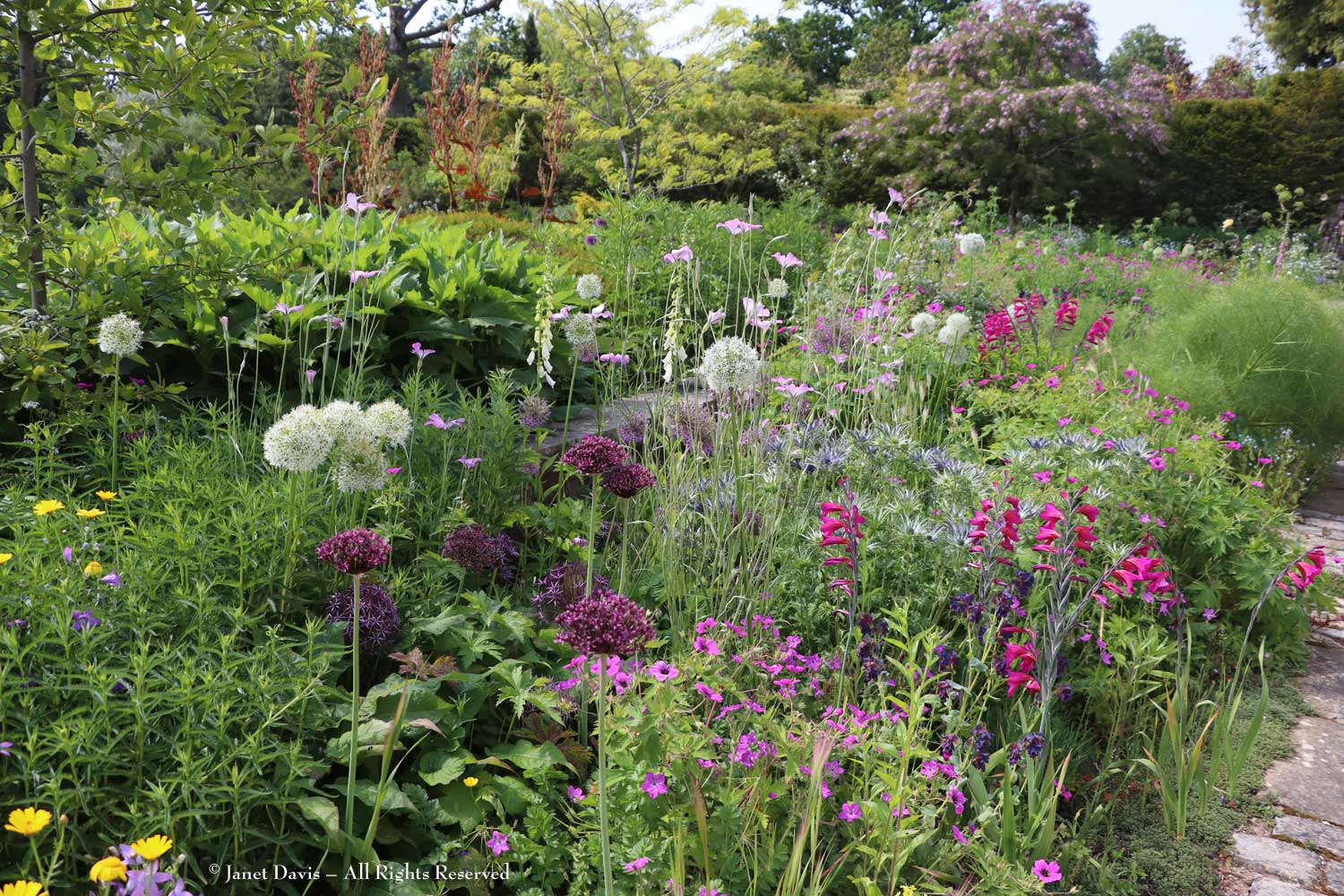
Here is a detail from this lovely purple-blue-magenta border: Eryngium x zabelii ‘Big Blue’ & Geranium ‘Dragon Heart’
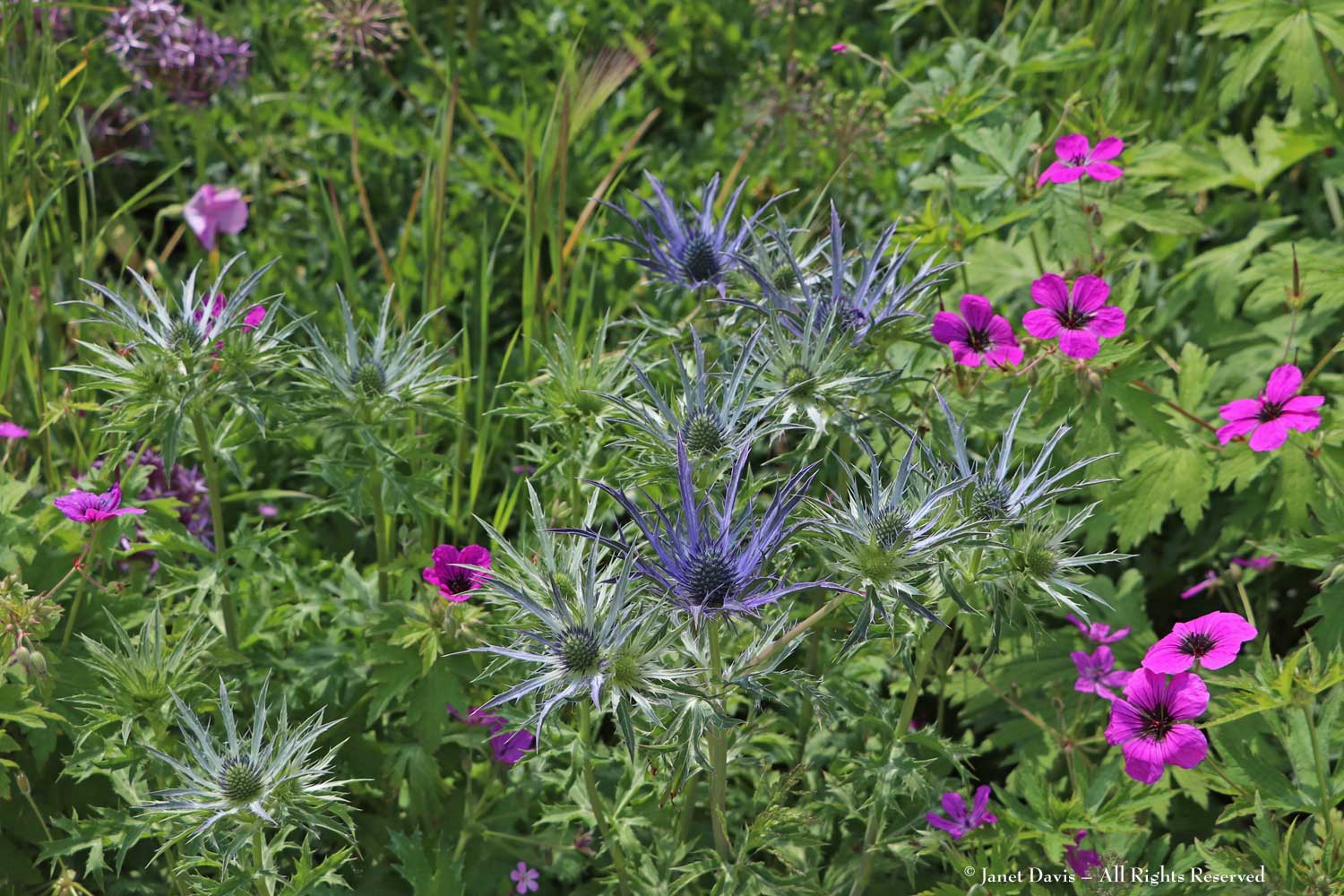
And another pretty pairing with slender corn cockle, Agrostemma gracile ‘Pink’ and Geranium ‘Brookside’
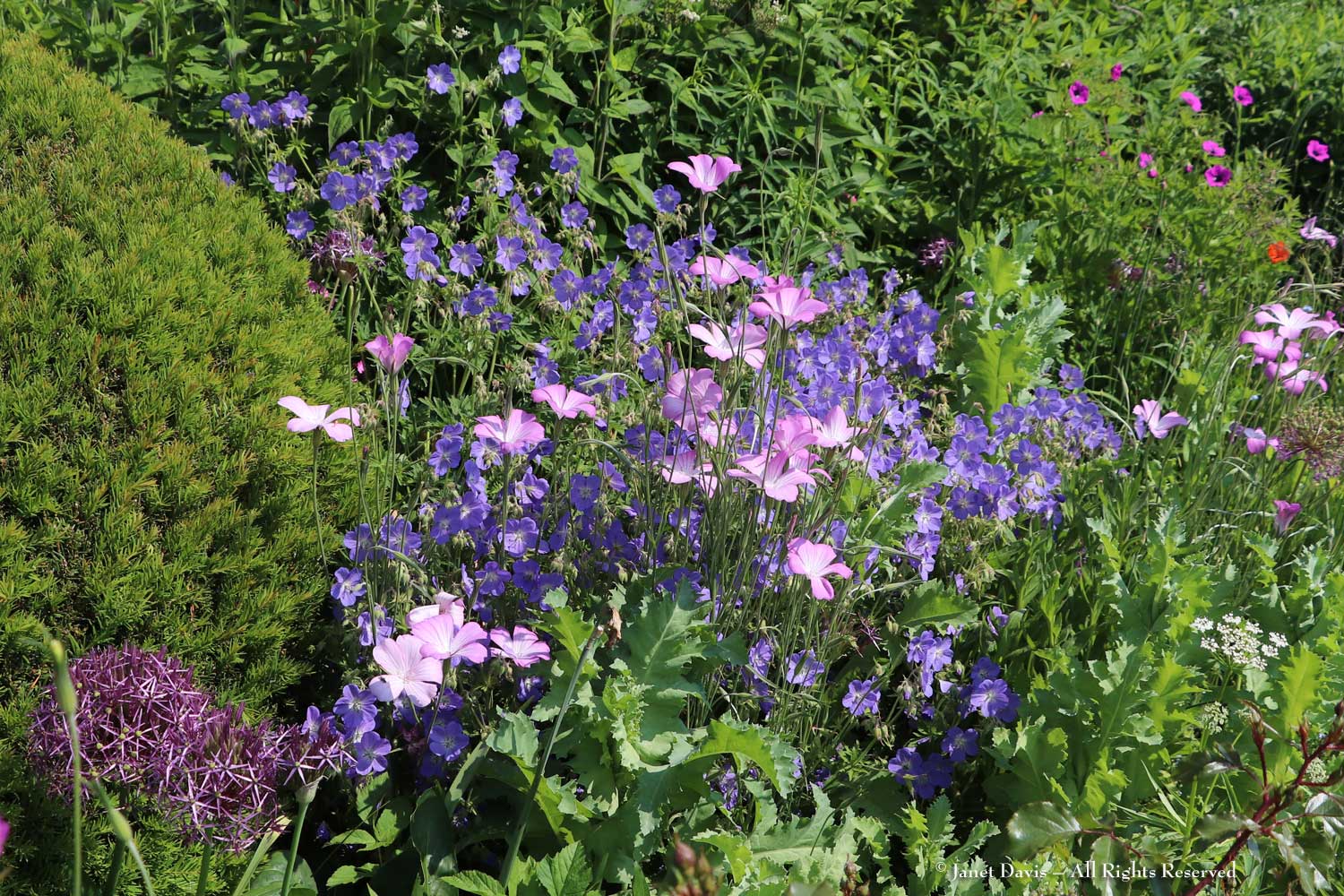
Leaving the House Garden, we come to The Stumpery. Popular in the Victorian era, it is described on the Malverleys website as a “woodland folly constructed out of a collection of old tree stumps positioned at dramatic angles”. Irrigated via overhead misting, it creates moisture needed for tree ferns and other shade-lovers.
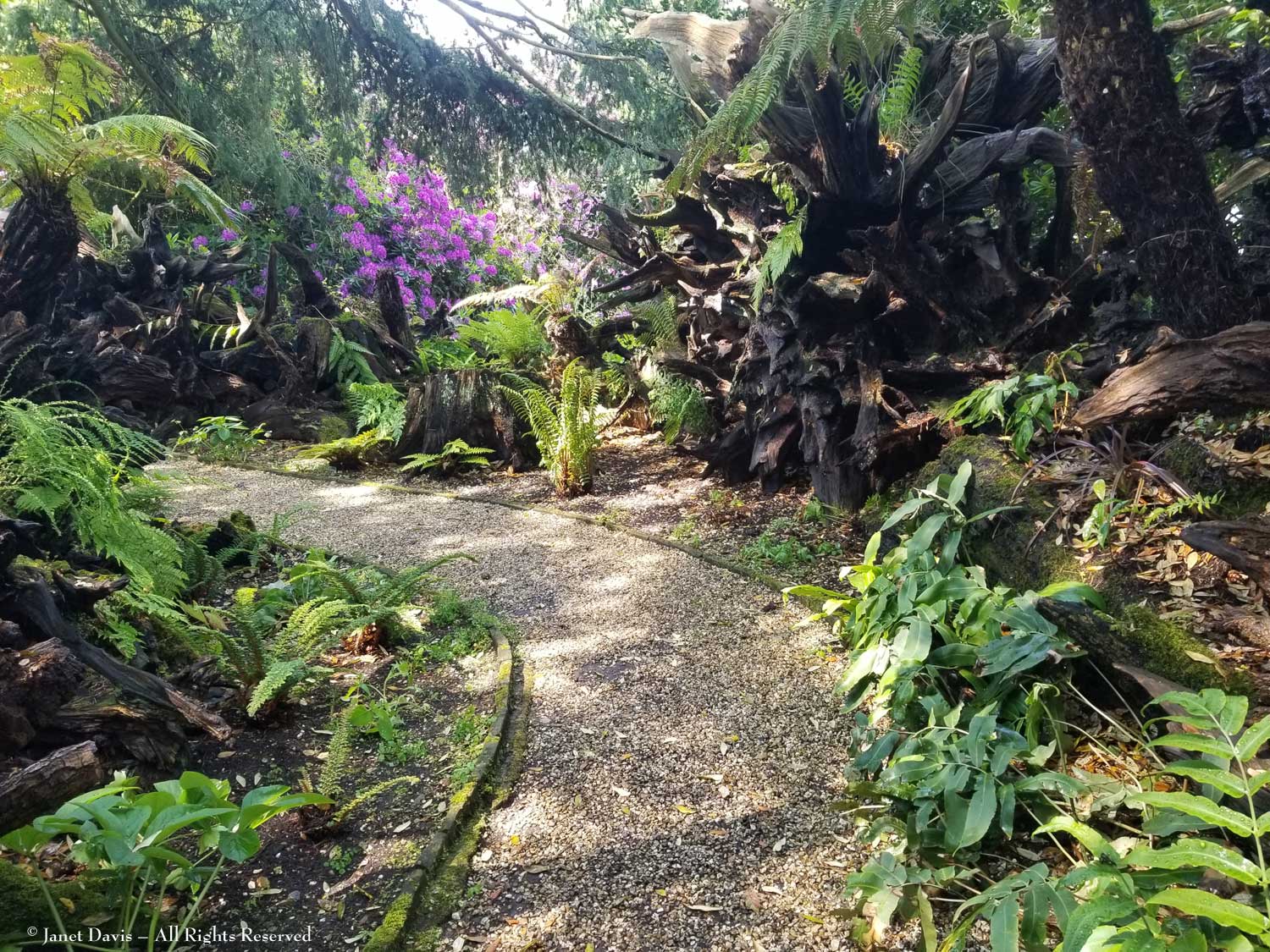
There is a slightly Jurassic Park feeling to this little garden.
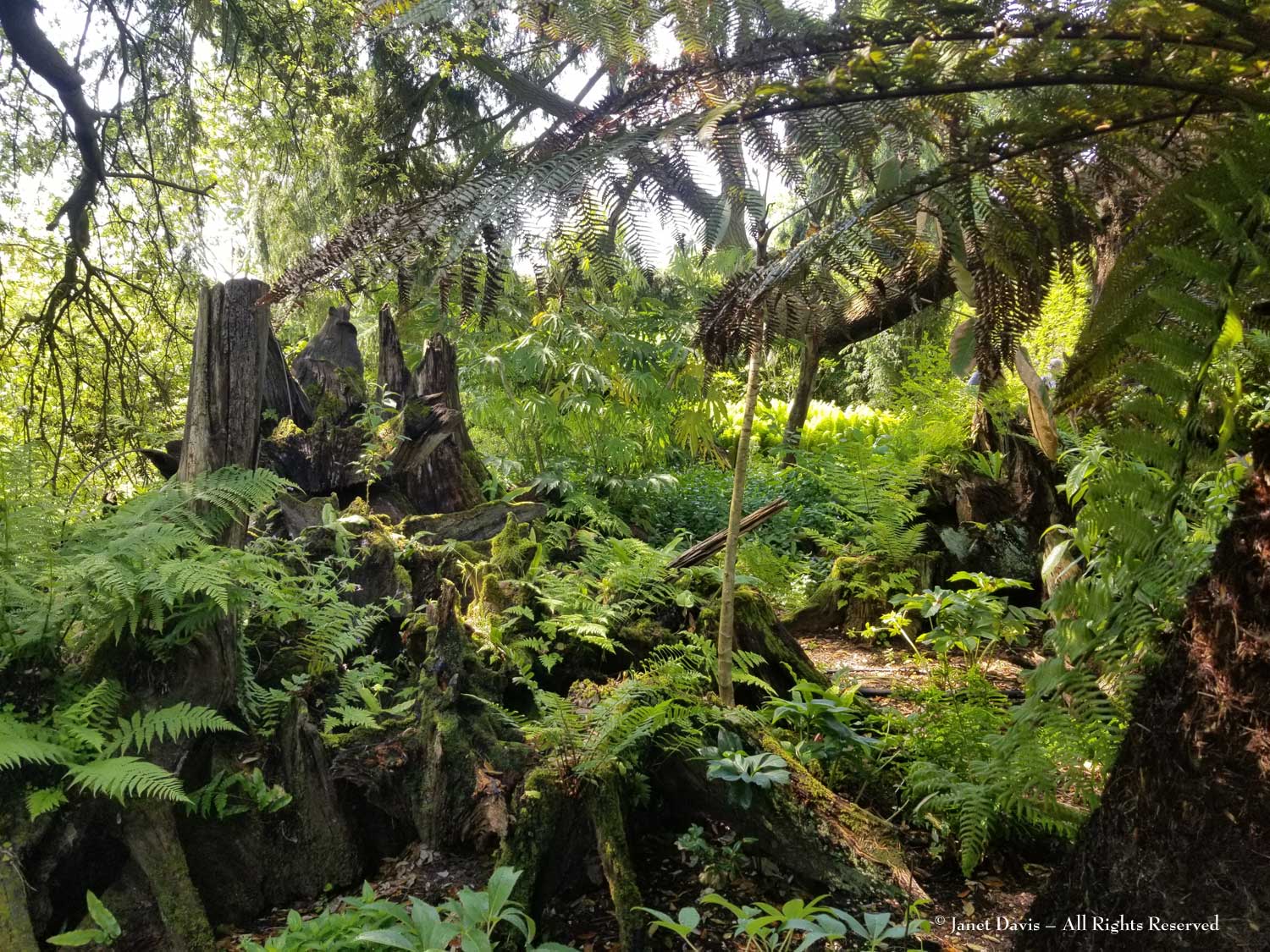
Heading into the big Walled Garden, we come to a spectacular sight whose flowering was timed just perfectly for our visit: the magnificent laburnum arch (L. watereri var. vossii). I have visited the late Rosemary Verey’s famous laburnum arch at Barnsley House (and chatted with her in her dining room) and have strolled the lovely laburnum walk at Vancouver’s VanDusen Botanical Garden, but neither was as lusciously floriferous as Malverleys.
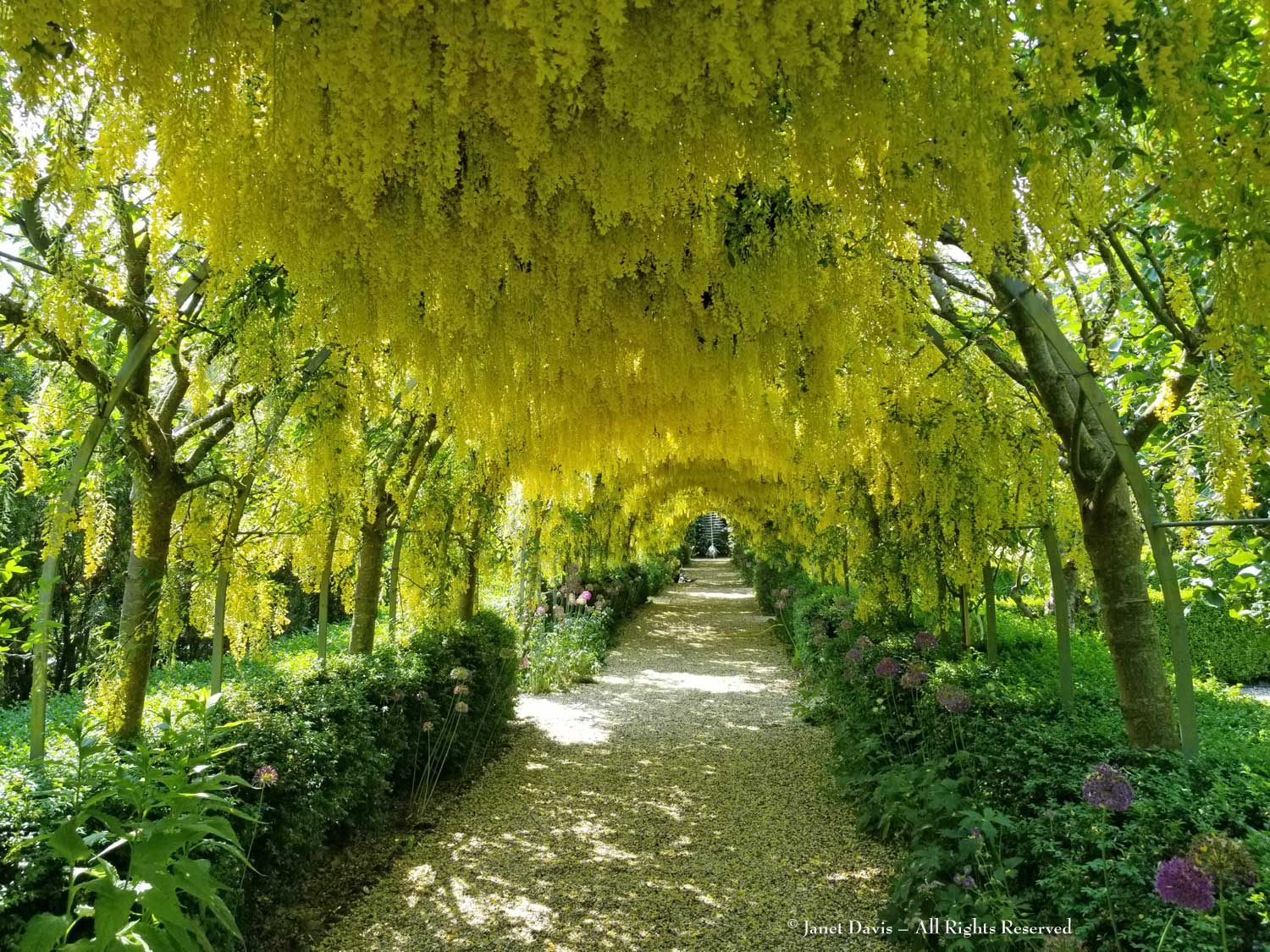
The Walled Garden is large and diverse. It features cutting gardens, a peony border, a tennis court (below)……
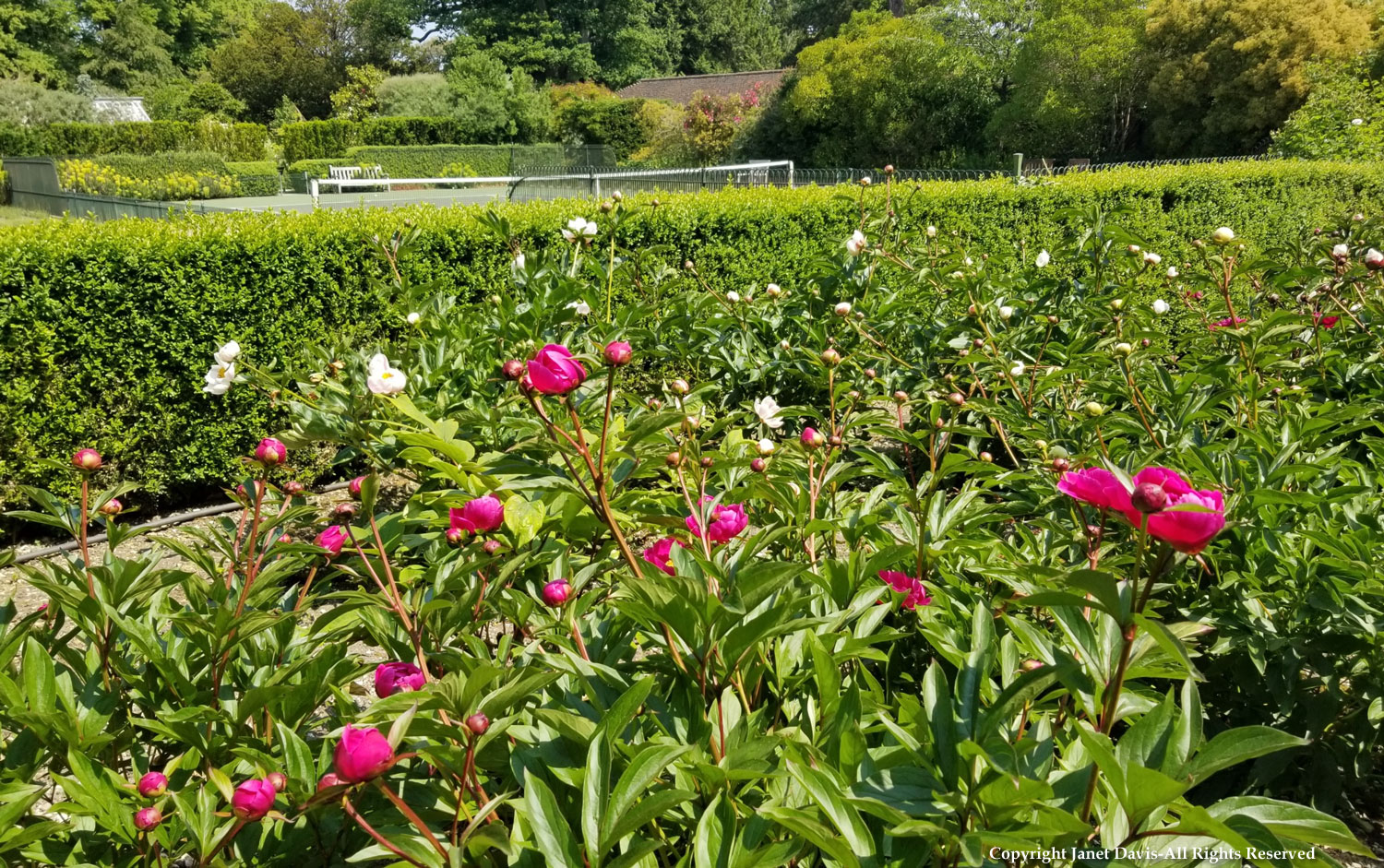
….. and ornate fruit cages.
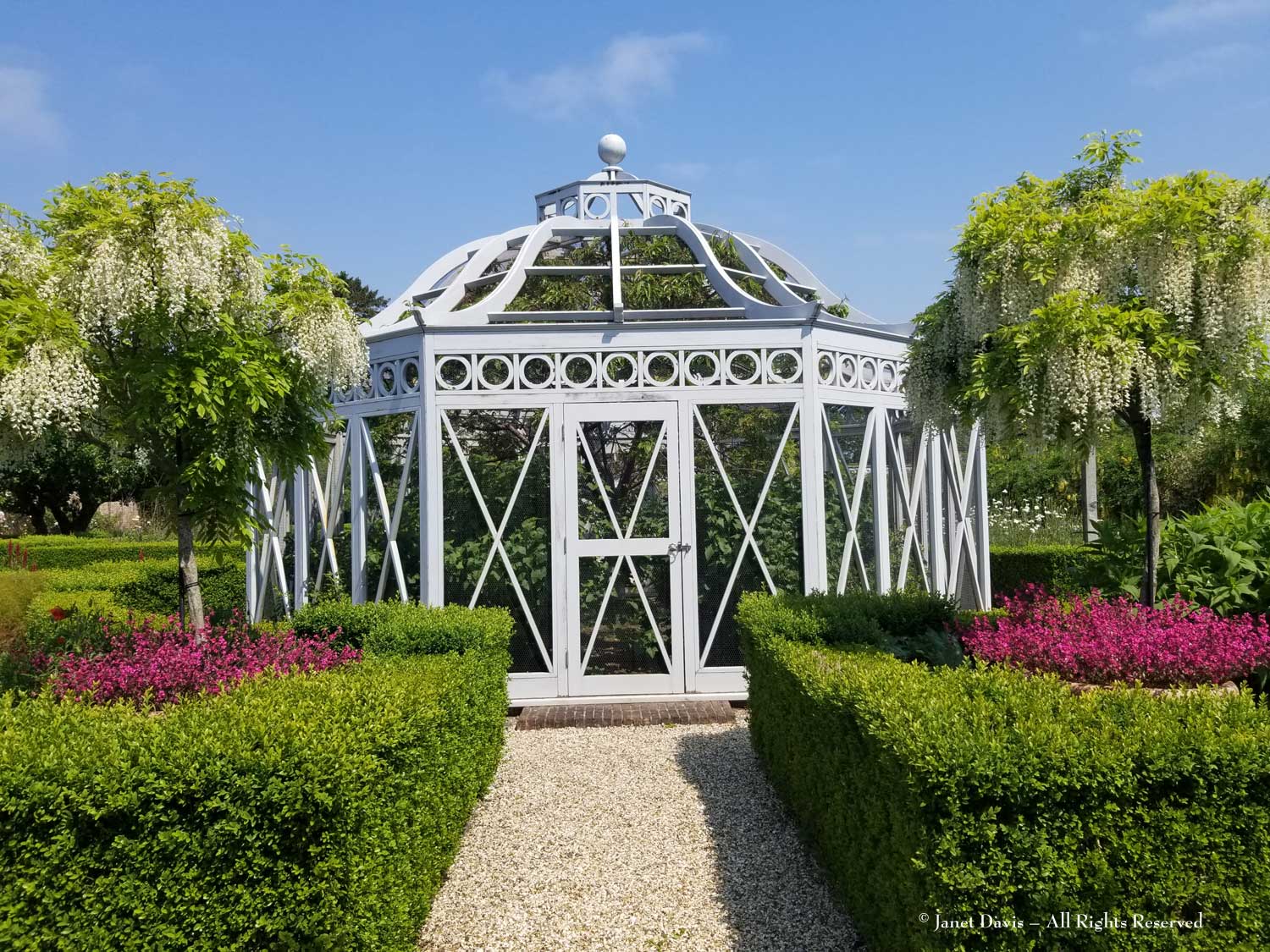
I am delighted to see Malverleys’ fabulous specimen of the famous Rosa ‘Climbing Cecile Brunner’ at peak bloom. How lucky to be in England in a June when the roses here and in the Rose Garden at Kew, which I visited days earlier, are perfection. This rose was introduced in California in 1894 by the German-born breeder Franz B. Hosp, who noticed the long wands of flowers sporting on one of the Cecile Brunner polyantha sweetheart shrub roses he grew and selected it as a climber. Repeat-flowering, it will reach 6 m (20 ft) when happy.
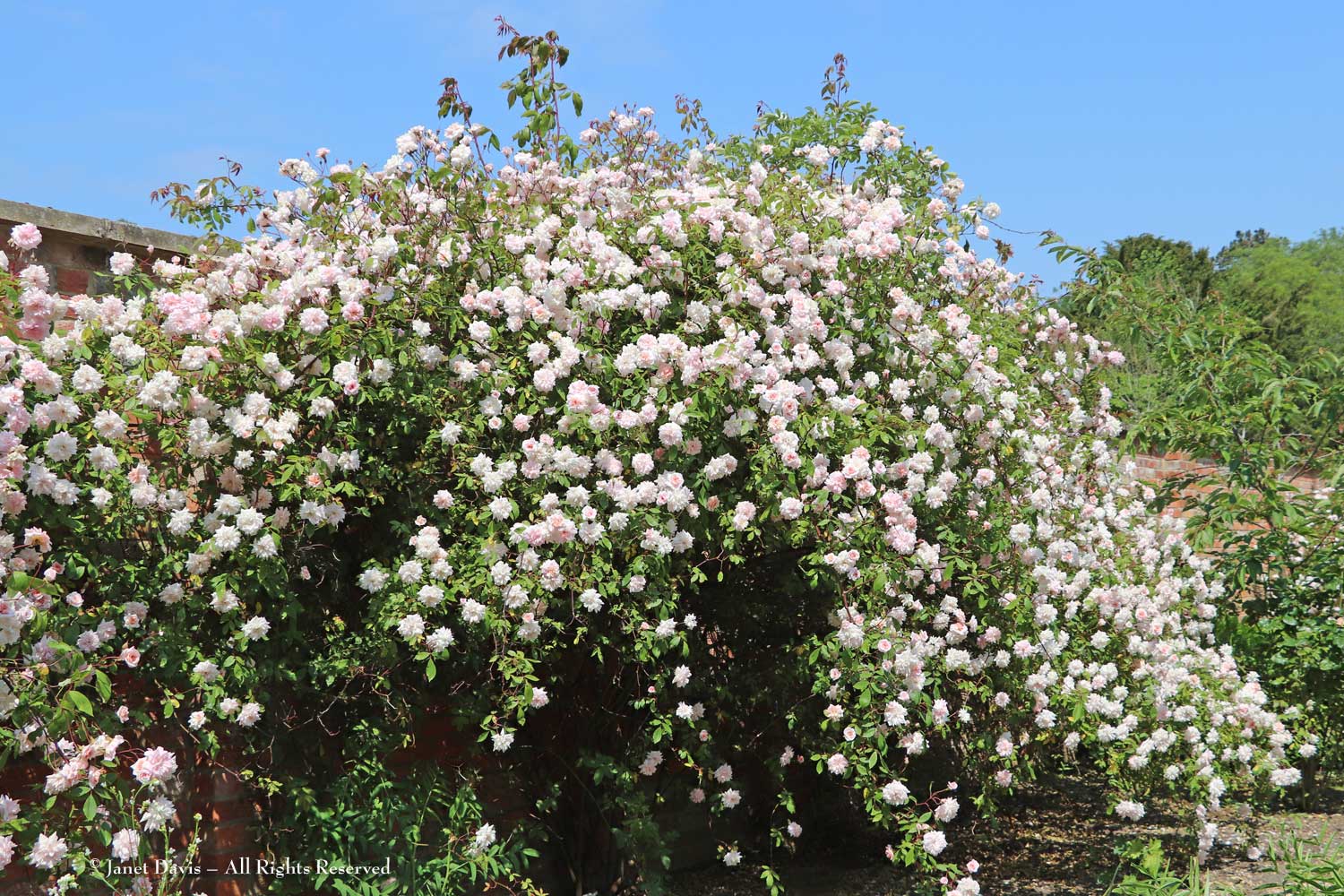
The Kitchen Garden contains a profusion of leafy vegetables, many now destined to be featured in the brand-new…..
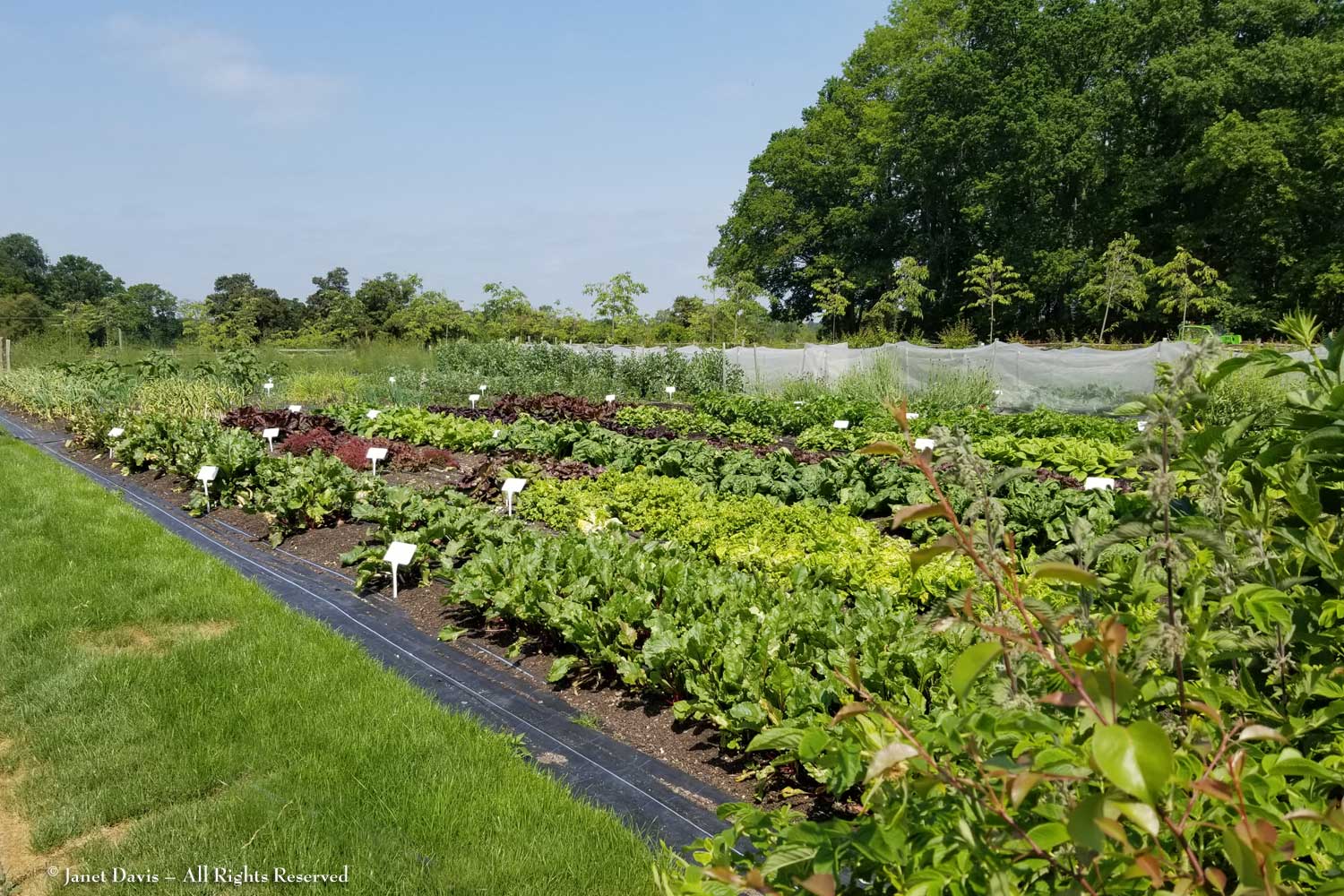
……Malverleys Farm & Dining shop which just by chance happens to have its grand opening on the day of our visit. According to a December article in the Sunday Times, Emily von Opel, who with her husband Georg owns Malverley and loves walking the paths of the garden to “escape from the hustle and bustle of life”, decided to open the space to serve dishes made from the produce of the kitchen garden, provide a workshop venue and offer British-made homewares and plants for sale.
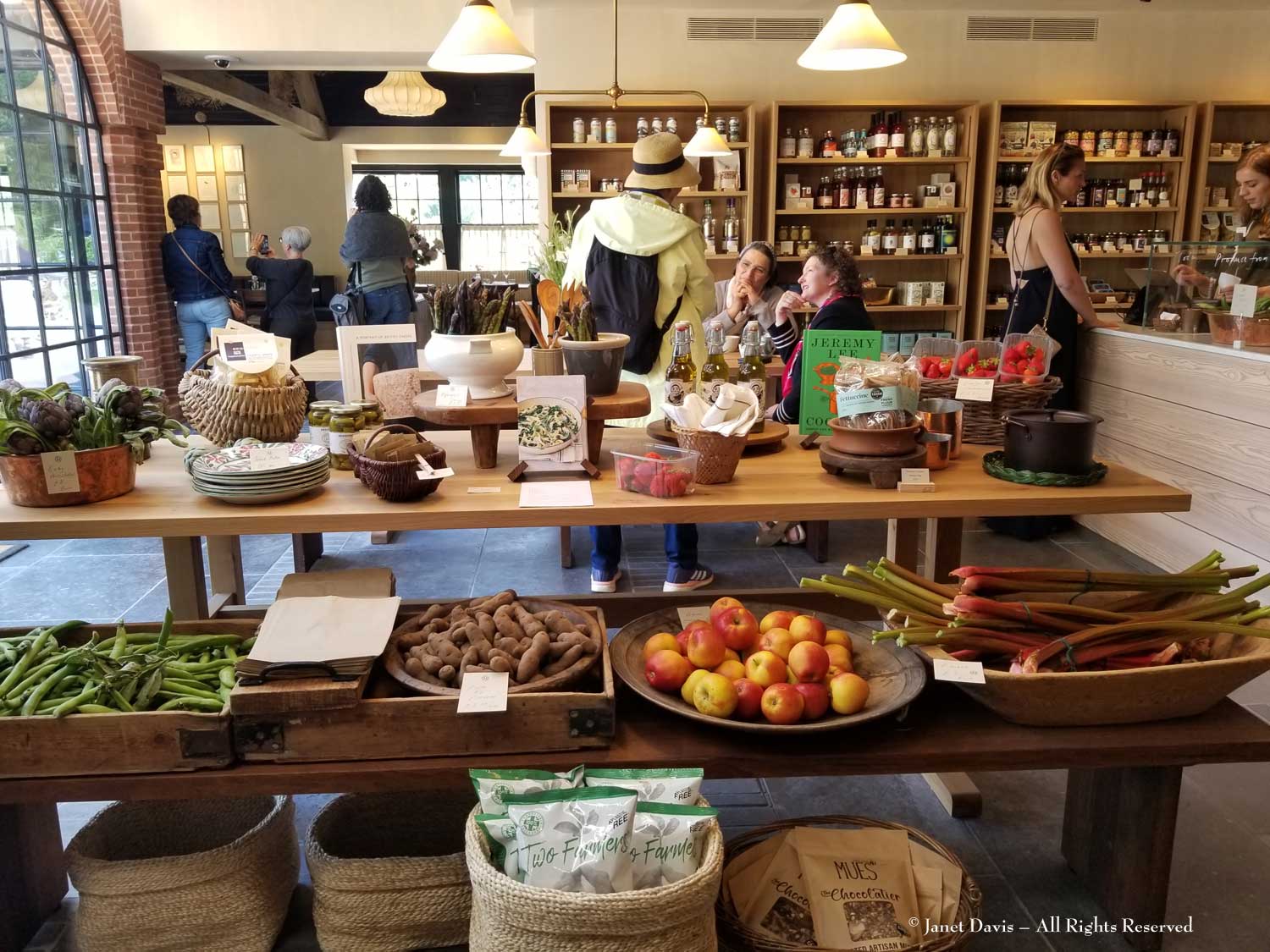
Doesn’t this bouquet say “June”, with all its romantic profusion?
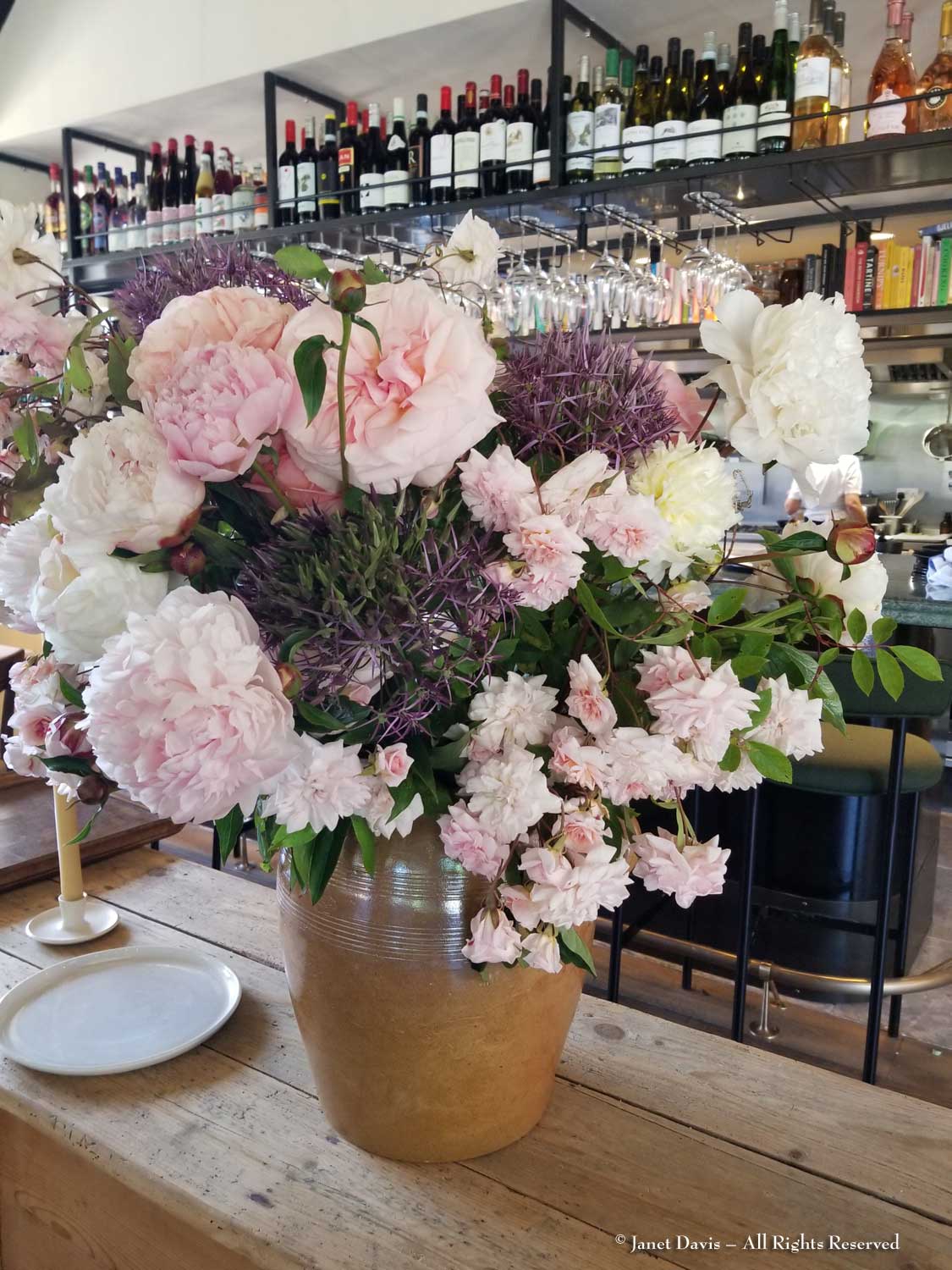
Plants are offered for sale as well.
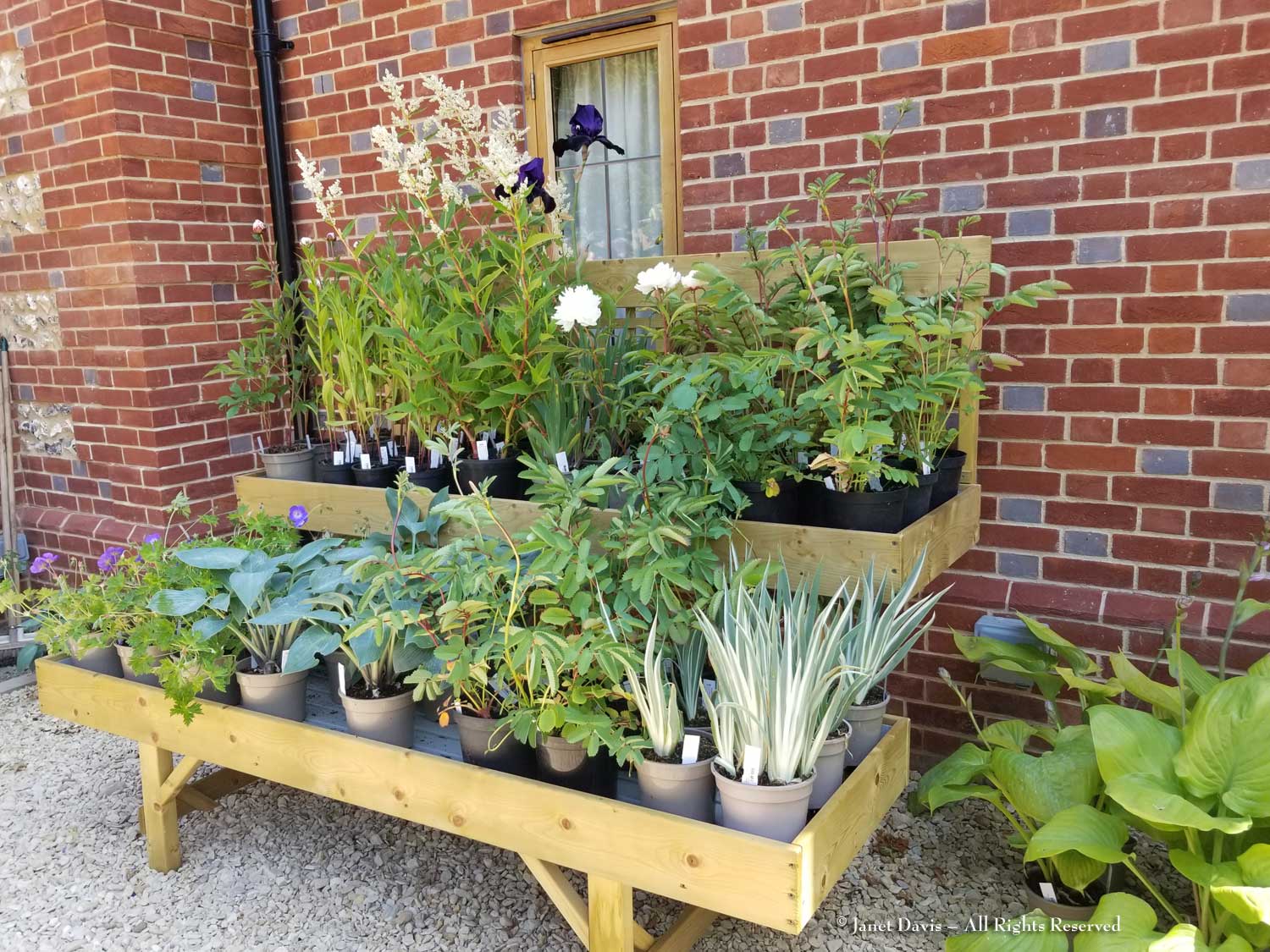
Finally…. I’ve saved the best for last, because Malverleys has justifiably become famous for its luscious White Garden. And having visited Sissinghurst’s renowned version just the week before, I would have to say that Mat Reese scores the grand prize for his interpretation, which is clearly at its peak in early June. Though most of the plants feature white flowers, there are a few, like the strongly-perfumed hybrid musk Rosa ‘Penelope’ with its pale peach-pink blossoms, included.
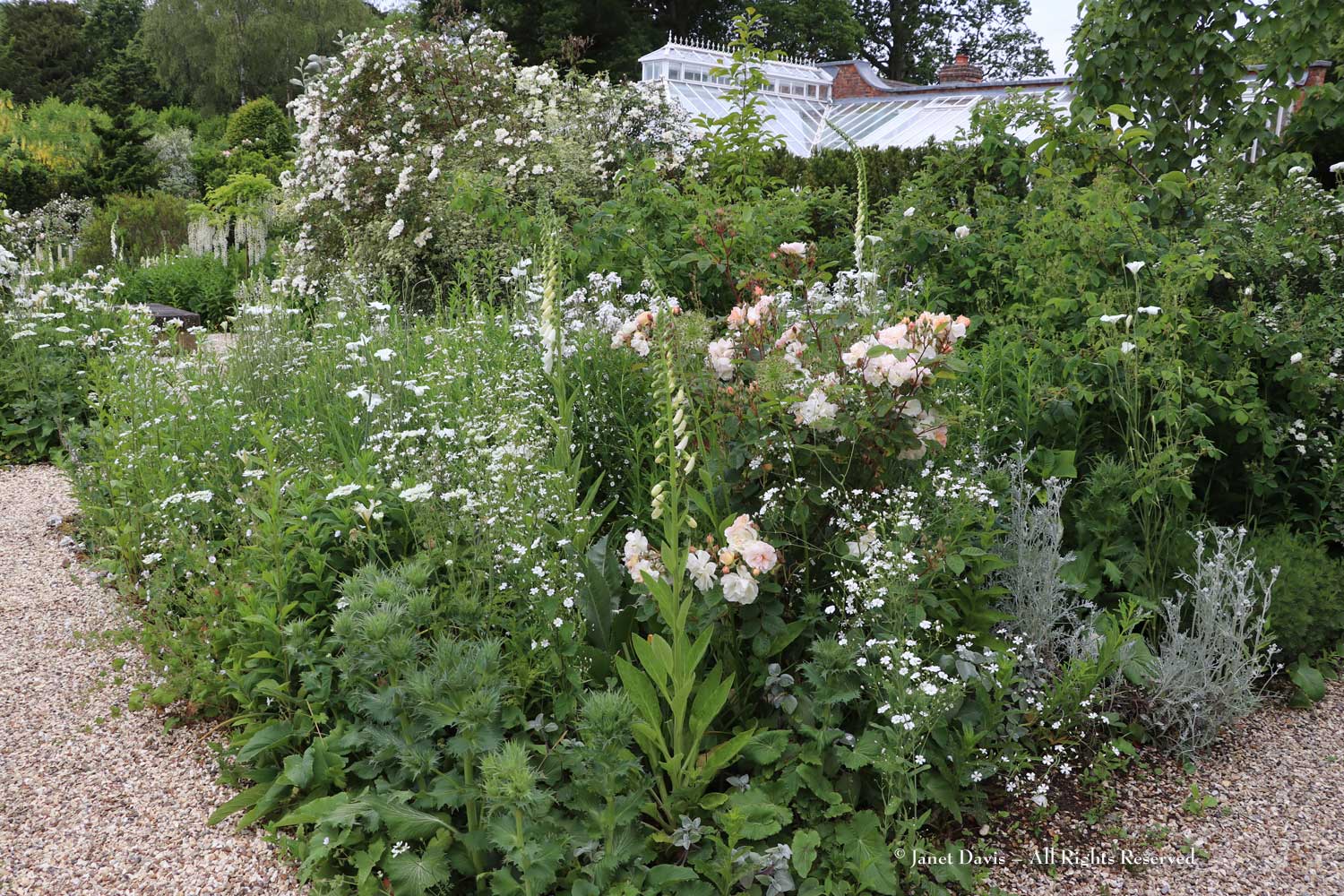
Peonies, white foxgloves, Eremurus ‘Joanna’, Lupinus ‘Noble Maiden’ and wisteria surround one of four formal raised pools in the White Garden.
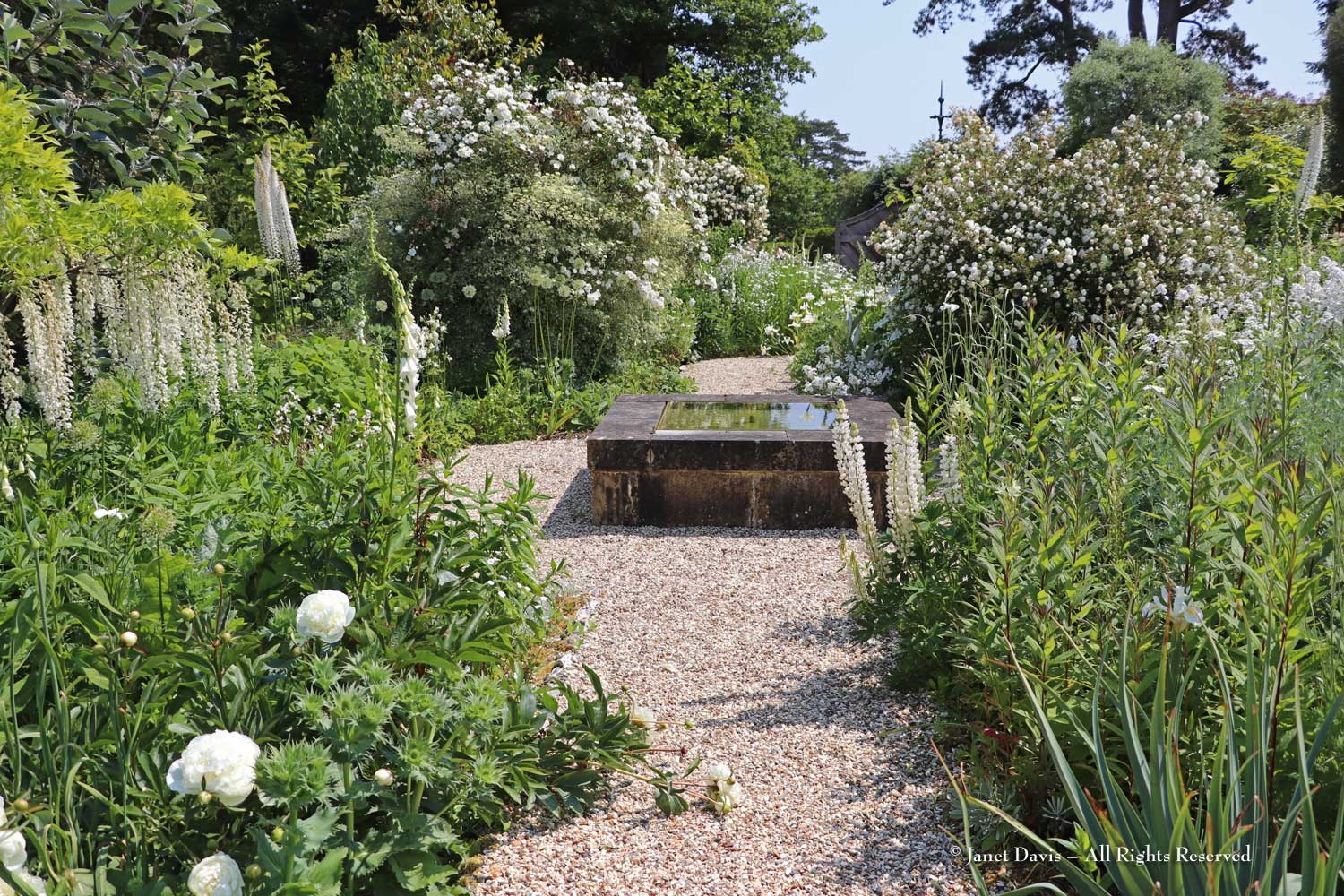
And a final image from the White Garden of Papaver orientale ‘Royal Wedding’ and Lupinus ‘Polar Princess’. Thanks to Malverleys, for its horticultural excellence, beautiful design and generosity to the community.
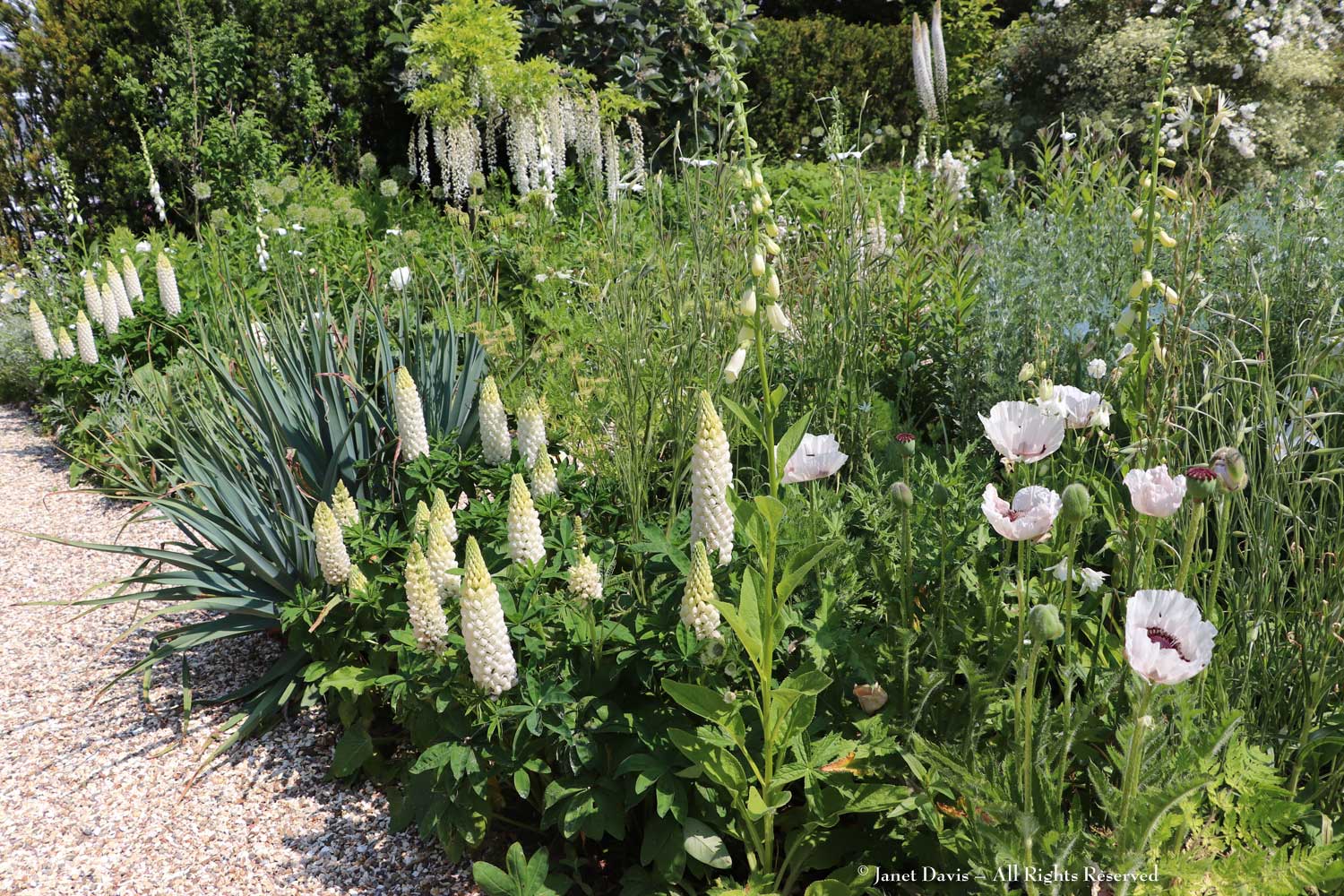
*******
Like English gardens? Visit my blog on Dan Pearson & Huw Morgan’s ‘Hillside’ in Somerset.

